Camping Checklist – Essentials & Printable PDF
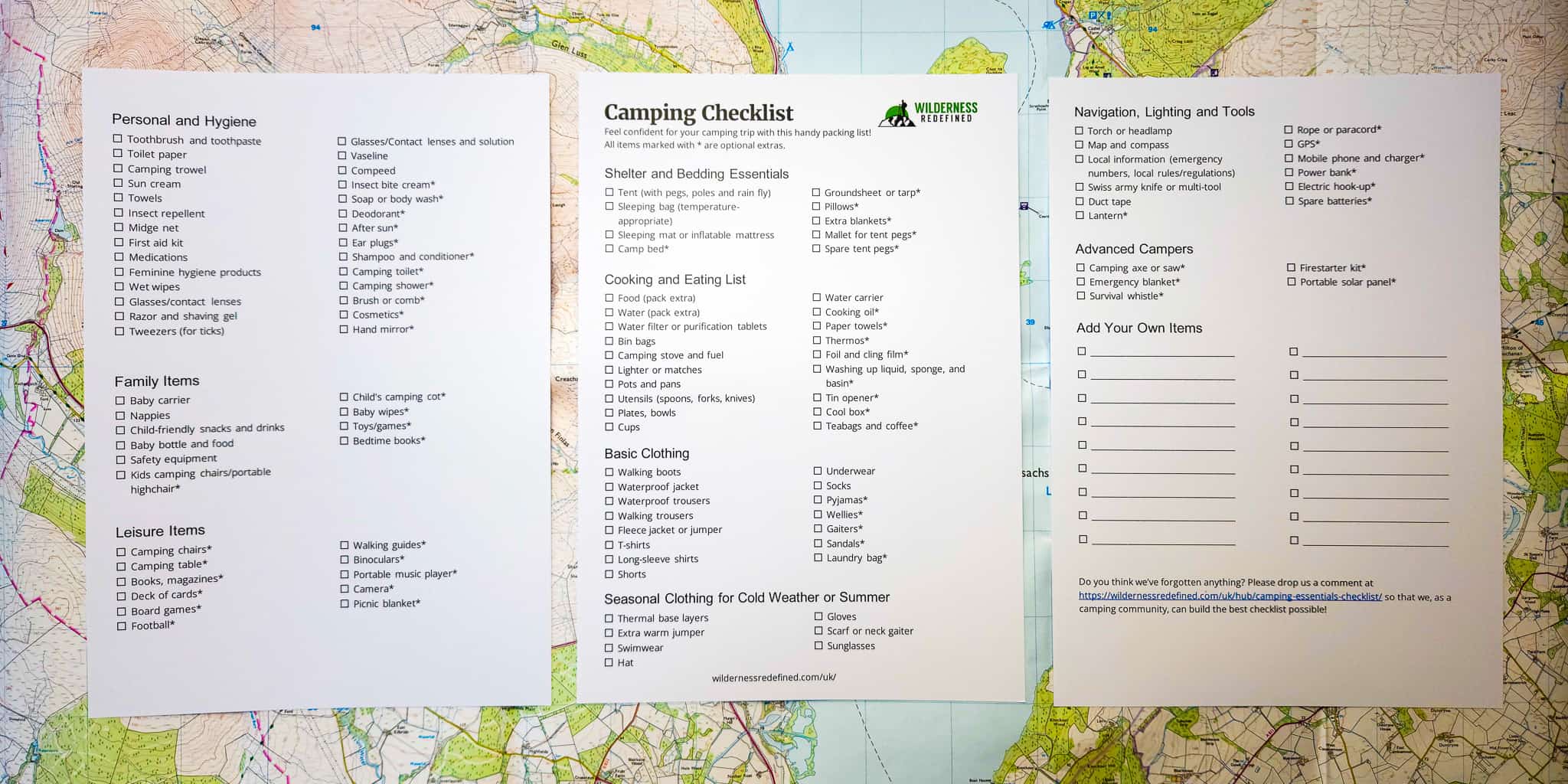
Have you ever struggled with packing for a camping trip and forgotten the torch batteries or worse, the insect spray? It’s a familiar frustration. The ‘what to pack’ puzzle can leave us in knots, and forgetting the smallest thing can be a real dampener.
But fret not! I’ve curated a camping essentials checklist to ensure you’re perfectly kitted out for your next outdoor adventure.
Ready to shed the packing stress and embrace the camping thrill? Check out our interactive packing list below or click the download button to see our printable PDF.

Shelter and Bedding
Make sure to check your sleeping bag has the right temperature rating for the weather you will be camping in.
Non-Essentials
Cooking and eating.
Pack more food and water than you’ll think you need.
Basic Clothing To Pack
Spare clothes are must-haves just in case the temperature drops or your clothes get wet.
Seasonal Clothing for Cold Weather or Summer
These are a mixture of essentials and non-essentials depending on what conditions you will be camping in.
Personal and Hygiene
Family items.
I’ve purposefully not marked any of the below as essential, “must bring” items as it can vary so much from family to family and depending on whether you’re wild camping or on a glamping trip.
Leisure Items
Everything below is non-essential, although perhaps useful if you still want to get along after the camping trip is over!
Navigation, Lighting and Tools
Packing list for more advanced campers.
Some of you might be planning a more intense wild camping adventure. Here is a list of a few extra bits of gear that you might want to consider.
Let’s Make the Best Camping Checklist in the World!
Folks, if you’ve read this far, I need your help. Each year, many people are put off from taking their first camping trip because of that same feeling of anxiety in the pit of their stomach that you’re feeling right now.
You know the feeling – it’s the voice saying “you’ve definitely forgotten to pack something!”.
Let’s fight against that voice so that we all know what to take camping. If you find something that isn’t in the list above, please drop me a comment in the discussion section below. Thank you!
Alternative Ways to Download The Camping Checklist
You can view our downloadable camping checklist pdf here .
Useful Resources
Family camping checklist – essentials & printable pdf.
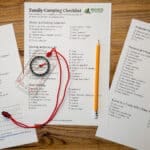
It’s no picnic preparing for a group adventure but we can help with our comprehensive UK-centric family camping essentials checklist. Check it out!
Camping Essentials For Women [Girls’ Checklist + PDF]
![camping trip kit list Camping Essentials For Women [Girls' Checklist + PDF]](https://wildernessredefined.com/wp-content/uploads/2022/09/womens-camping-essentials-checklist-pdf-150x150.jpg)
Packing the right camping essentials for women can feel a tad overwhelming – but it doesn’t have to be! Find out what to take with our checklist.
Backpacking Checklist 3 Day (Printable PDF & Editable)
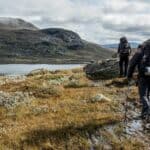
Here’s our checklist of things we think you’ll need for a weekends backpacking along with hints, tips & hacks for the first-timer who might need a bit of guidance.
Camping First Aid Kit Checklist (Printable PDF & Editable)
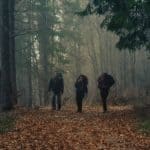
No matter if you are camping, hiking, or backpacking a first aid kit that you paid for or created is a must for making the trip safer and more comfortable.
Save my name, email, and website in this browser for the next time I comment.
30 Must-Have Items for Your Camping Packing List
- Hannah McKelson
- Mar 18, 2022

As an Amazon Associate we earn from qualifying purchases.
Are you planning your next adventure and compiling your camping packing list? Striking a balance between over-packing and under-packing for a camping trip can be a daunting task—after all, you want to be adequately prepared, but you also don’t want to have to lug around unnecessary gear.
To help you out, I’ve rounded up the top camping essentials for tent camping, cabin camping, and RV camping so you can check the items off your list and set off on your adventure with confidence.
Top Ten Items for Your Tent Camping Packing List

Tent camping is the most “rugged” form of camping and requires well thought-out, efficient packing. This is especially true if you’re backpacking and need to carry your gear with you. Appropriate supplies will ensure a comfortable and safe adventure.
Packing your tent might seem obvious, but you never know what supplies might get lost in your packing shuffle! Your tent will be your home for the duration of your camping trip, so make sure to bring it. No one wants to make their way out to their site, only to find out that they have nothing to sleep in at night.
- Tent Footprint
2. Sleeping Bag
If your tent is your house while you’re camping, then your sleeping bag is your bed. Make sure to add a sleeping bag to your camping packing list since a miscellaneous assortment of blankets won’t cut it in the cold.
- Sleeping pad
- Camping pillow

3. Fire Starter
A fire starter is an absolute must for camping, especially in a tent. Fire will allow you to keep warm, cook food, and even signal for help in the case of an emergency. Remember, a fire starter is not the wood itself, so you’ll need to bring wood, purchase wood onsite, or gather wood where it’s permitted. Many campgrounds do not allow you to bring your own firewood, so always check ahead of time.
I personally bring multiple types of fire starter, including a Bic lighter , fireproof matches , and a little flint kit . It might seem like overkill but since I always keep them in my hiking pack anyway, and because they are lightweight, it doesn’t burden me in terms of pack weight or convenience.
- Duraflame Log —this is the easiest way to get a nice hot fire started in my experience. I don’t go on a single trip without one!
Read Next: How to Build a Campfire
4. Pocket Knife
A pocket knife or multitool like a Swiss Army Knife will always come in handy when you’re on a camping trip. They can be used for nearly anything, including tent repairs, opening food supplies, and collecting kindling.
5. Cooking Set
While you can live on trail mix, canned beans, and assorted pre-packed snack foods, camping in a tent is much more enjoyable with good food. Bring a cooking set designed for tent camping so you can enjoy hot fireside meals that provide more sustenance than a pack of Pringles.
Also Pack:
I’m a camping cooking minimalist and like to prepare potatoes or fish by wrapping them in tinfoil and throwing them on the fire. I promise, it’s delicious!
6. Lighting
I never realize just how dark nighttime is until I’m gracelessly tripping over tree roots and rocks at oh-dark-hundred on a camping trip. Pack a flashlight with extra batteries on your next camping trip to avoid any unexpected trips, falls, and tumbles.
- Head lamp
7. First Aid Kit
It goes without saying that a well-stocked first aid kit is essential to tent camping, or any camping trip at all. There are prepackaged first aid kits at outlets like REI that include coagulation medicines (to promote blood clotting), antiseptic ointments, anti-inflammatory pills, and more. It is always better to be prepared in the case of an emergency.
8. Water Bottle
Water bottles are essential to bring on your tent camping trip, whether your campsite has running water or not. If you’re camping at a site that doesn’t have running water, you’ll want to fill your water bottle with the larger containers of water that you bring with you.
- Water filtration system if you plan on drinking creek water
- Thermos for tea or coffee
- Coffee making setup (if you’re a caffeine fiend like me)
9. Hiking Pack
It’s safe to say that if you’re going on a tent camping trip, you’ll probably be doing some hiking too. Bring a hiking pack that’s been professionally fitted to your torso and waist. This will make sure it is comfortable for you to wear and use. It also does double duty by holding some of your other essential camping supplies.
10. Weather-Appropriate Clothing
We’ve all driven out to a campsite wearing sweats, hoodies, and fuzzy socks, but these clothing items aren’t the only ones you’ll want to pack for your trip. Make sure to bring weather-appropriate clothing, both for the temperature itself and any forecasts calling for rain, snow, or unusual heat.
- Base Layers
- Hiking Socks
Read Next: Camping 101 for Beginners Guide
Top Ten Items for Your Cabin Camping Packing List

If you’re planning a cabin camping trip, chances are you’re looking for comfort levels that fall somewhere between tent camping and glamping. It’s one of my favorite ways to camp when I’m looking for the benefit that only four walls (and a space heater) can provide.
Because cabin camping is more accommodating than tent camping, you’ll want to bring some extra supplies to make the most of your trip.
1. Bedding Linens
Cabins have at least one bed frame and mattress set up, and some even include extra bunk beds. What they don’t provide are clean linens, so bring your own sheets, pillows, comforter, and blankets.
2. Toiletries
Cabin campsites also have showers included in either the cabin itself or in their communal bathrooms, so make the most of this opportunity for hygiene by adding basic toiletries to your camping packing list. Soap, a toothbrush, and toothpaste are basic necessities you won’t want to forget, and I like to bring dry shampoo in place of liquid shampoo and conditioner to quickly freshen up my hair. I hate having a cold, wet scalp while out camping.
Also pack:
- Your own towels and washcloth
3. Chargers for Your Electronics
If your cabin has outlets, you’ll want to bring chargers for your cell phone, tablet, or laptop (if you bring them and there is Wifi or you’re using a hotspot).
- A portable charger bank
4. Entertainment
Camping in a cabin has its perks, including a sheltered space to enjoy some games after the sun has set. Pack board games, books, and even a laptop that has pre-downloaded shows and movies, in case your campsite doesn’t have a data signal you can use with a hotspot.
5. Lanterns and Flashlights
Even if your cabin has indoor lighting, it’s still a good idea to bring lanterns and flashlights on your trip. They will provide lighting at your fireside picnic table and on your way to the nearest restroom facility if you need to leave the cabin for that
6. Wood and Fire Starters
Wood and fire starters aren’t as essential to cabin camping trips as they are to tent camping trips, since the cabins naturally provide insulation and shelter from the elements. However, they’re still very helpful to bring with you for staying warm after dark and for cooking.
- Cooking Grate
Pro Tip: Some campgrounds will already have cooking grates. Be sure to check before you head out.
7. Kitchen Tools and Utensils
Some campgrounds have communal outdoor cooking stations that provide stovetops and outlets for your kitchen gadgets. Check for your campsites amenities before you embark, and even if your campsite doesn’t have a cooking station, still bring basic cookware. You’d be surprised how much you can cook over a campfire!
Items like a cast iron skillet , dutch oven , spatulas, and tongs will be very handy. Also bring bowls, plates, and basic utensils.
8. Food and Drinks
Your options for food and drink are expanded when you’re camping in a cabin. Take the opportunity to pack delicious, cookable food in a cooler and get to cooking. You can also bring chilled drinks of your choice, which I highly recommend.
- S’mores supplies
9. Storage and Disposal Items
The rule “leave no trace” applies as much to cabin camping as it does to tent camping. Bring trash bags, Ziplocs, and a cooler to ensure that all your belongings stay contained and are properly disposed of before you leave the campsite.
Cash is king in the camping world. It’s especially useful when you’re staying at a campground. Often there is a general store onsite where you can pick up any supplies you forgot, snacks, and even movie night admission out on their lawn.
Top Ten Items for Your RV Camping Packing List

When it comes to packing for an RV camping trip, you won’t necessarily have the amenities of a cabin campsite, which will warrant you bringing some tent camping supplies, but you will have the comfort and protection similar to a cabin. Another complicating factor? Your RV is a home-on-wheels with needs both similar to and different from your family vehicle. Be sure to pack the following:
1. Drinking Water Hose
A drinking water hose is a must-have for RV camping. It allows you to connect to potable water sources and have running water in your RV. This will be what you drink, cook, and bathe with, so be sure you don’t leave without yours.
2. Surge Protector
Safeguarding the electronics in your RV is a good idea, especially when you’re out in a rural area on a camping trip. Bring a surge protector to guard against any unexpected power surges from your RV’s power source—phenomena such as lightning strikes can cause a surge that damages your RV’s electronics. It’s a preventable way to prevent any shocking accidents on your camping trip. (Pun intended!)
3. RV Bathroom Supplies
One of the perks of camping in an RV is that you have a built-in bathroom—no need to trek out in the dark to use a Port-A-Potty in the middle of the night. Bring toilet paper that is septic tank friendly, a sewer kit , and appropriate RV toilet chemicals to keep your bathroom running smoothly.
4. Tire Pressure Gauge
You never know what could happen when driving your RV out to your campsite, so bring a tire pressure gauge to keep an eye on your tires. Whether it’s a nail on the road or cold weather causing a decrease in pressure, your tire pressure gauge will alert you to any complications so you can drive with peace of mind.
- Tire Patching Kit
- Spare Tires
5. Motor Oil and Transmission Fluid
It’s also a good idea to bring some extra motor oil and transmission fluid. After all, your RV is a recreational vehicle and benefits from practical car supplies like your everyday vehicle at home.
6. Kitchen Essentials
Because your RV is like a home on wheels, you can expand your camping trip kitchen pack list to include all the goods. Skillets, saucepans, cutting boards, cutlery, utensils, dishes, and a water pitcher, are all items that you might want to bring.
You can also pack perishable foods (hooray!) since your RV likely has a built-in fridge.
7. Cleaning Supplies
RV’s are confined spaces and can quickly get dirty while on the road. Bring general cleaning supplies to keep your RV neat. Trash bags, all-purpose cleaner, toilet bowl brushes, and a dustpan all come in handy when you’re out at a campground.
8. First Aid Kit
First aid kits are essentials on my list for all different types of camping, but it’s worth noting that you’ll want to pack a couple extra items if you’ll be camping in an RV.
A fire extinguisher is a must-have for kitchen fires and electrical fires, so pack a miniature one designed to fit under a kitchen sink when you set out on your adventure. I also recommend more intensive items like splints, saline solution, and thermometers—all items you might leave behind if you were tent camping or cabin camping.
9. Tool Kit
In addition to a first aid kit, you should also bring a tool kit with you while on an RV camping trip.
Basic tools allow you to repair small issues in the RV and are also multipurpose when hiking and exploring. Consider packing a hammer, nails, screws, screwdrivers, an Allen wrench, and duct tape on your next trip.
10. Bedding and Clothing
RV camping is the type of adventure where you can bring a range of comfortable clothes.
In addition to bringing your favorite PJ’s and lounge clothes for relaxing inside the vehicle, you should also pack hiking clothes (including good base layers, outer layers, and socks), swimsuits for any campsite swimming pools or nearby designated swimming areas, and even fancier clothes for taking photos while you’re sightseeing.
Whatever way you decide to set up camp on your next adventure, use these items to create your camping packing list and rest assured knowing you have the essentials that will keep you comfortable, safe, and equipped for whatever your trip may bring.
Read Next: RVing: The Best Way to Experience National Parks
Hannah McKelson is a content writer and California-based adventurer hiking and camping her way across the West Coast. She loves tracking down the best-kept secrets of the beaches, forests, and mountains in her home state while sharing her adventures through her writing. You can follow her travels on social media @hannahmckelson and on her website at hannahmckelson.com.
Photo credit: Tyler Way
Get Daily Travel Tips & Deals!
By proceeding, you agree to our Privacy Policy and Terms of Use .
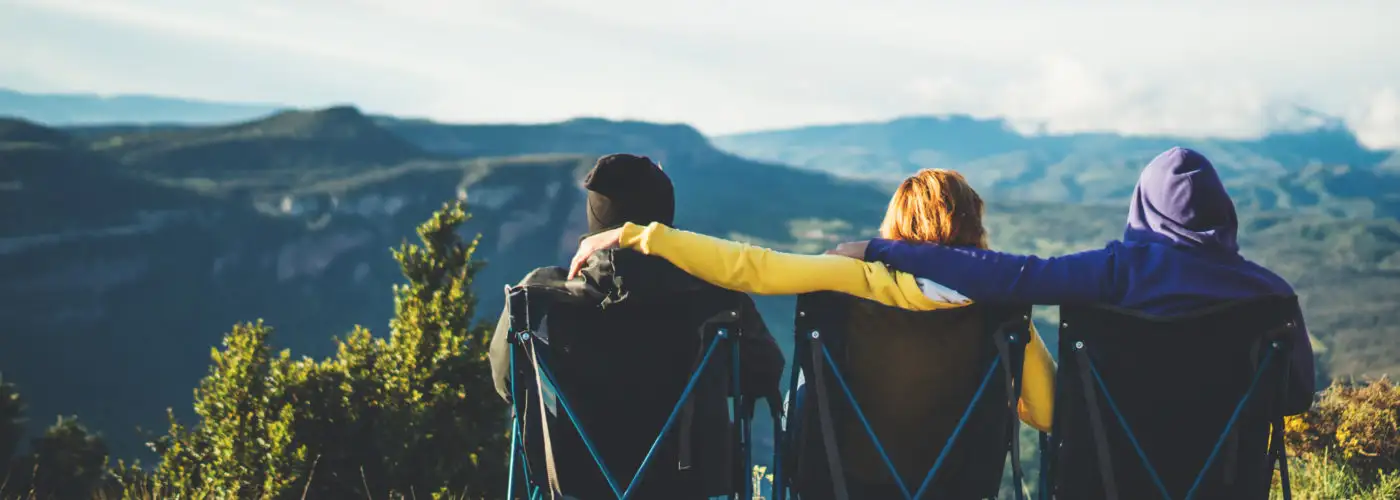
The Ultimate Camping Packing List: 29 Essentials
Caroline Morse Teel
Caroline Morse Teel is the Managing Editor for SmarterTravel Media. Follow her on Instagram @TravelWithCaroline .
Caroline joined Boston-based SmarterTravel in 2011 after living in Ireland, London, and Manhattan. She's traveled to all seven continents, jumped out of planes, and bungeed off bridges in the pursuit of a good story. She loves exploring off-the-beaten path destinations, anything outdoorsy, and all things adventure.
Her stories have also appeared online at USA Today, Business Insider, Huffington Post, Yahoo, Boston.com, TripAdvisor, Buzzfeed, Jetsetter, Oyster, Airfarewatchdog, and others.
The Handy Item I Always Pack : "Earplugs. A good pair has saved my sleep and sanity many times!"
Ultimate Bucket List Experience : Hiking Mount Kilimanjaro.
Travel Motto : "Don't be boring."
Aisle, Window, or Middle Seat : "Aisle (when the first class private suite isn't available)."
E-mail her at [email protected] .
Travel Smarter! Sign up for our free newsletter.
Unlike other vacations where you can just run out to the nearest store if you’ve forgotten something, you’re solely dependent on your packing skills when you’re out in the wilderness. This camping packing list has all the essentials you’ll need for a safe and comfortable trip.
Download Our Ultimate Camping Packing List
Be prepared for the great outdoors with the editable version of our Ultimate Camping Packing List .
Camping Packing List: Gear
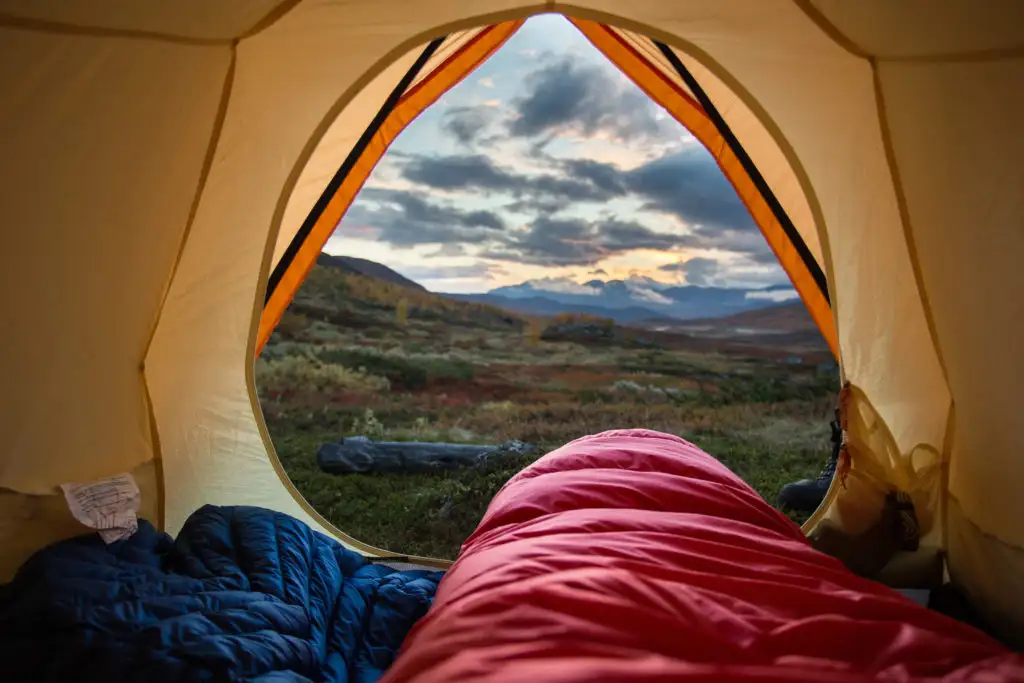
Sleeping Bag: A sleeping bag is the most essential piece of camping equipment—without the right one, you’ll be in for a cold and uncomfortable night. Many sleeping bags are “mummy style,” which can be way too claustrophobic for a good night’s sleep, especially if you’re a side or stomach sleeper. Sierra Design’s Backcountry Bed 700 / 20 Degree sleeping bag has a unique design that feels more like sleeping with a comforter on your bed at home than a sleeping bag. It doesn’t have any zippers; instead, there are insulated hand and arm pockets to help you completely cover yourself, plus a self-sealing foot vent so you can regulate temperature. The bag has an minimum temperature rating of 16F, which is very impressive considering that it only weighs 2.5 pounds.
Sleeping Pad (Backpacking): Thermarest’s NeoAir XLite is a favorite of many through-hikers, and it’s easy to see why. This three-season air mattress will keep you warm and comfortable even on the rockiest ground, yet it packs down to the size of a water bottle and weighs a mere eight ounces. I love that this mattress doesn’t skimp on comfort despite the light weight—the fabric is super soft, and it uses a patented reflective ThermaCapture technology to trap your body’s warmth and minimize heat loss.
Sleeping Pad (Car Camping): If you’re not hauling all your camping supplies on your back, comfort is more of a concern than weight, and you can go for a plush model like Sea to Summit’s Comfort Deluxe S.I. Sleeping Mat , available in a double size that’s perfect for couples camping together. This mat has an R-value of 5.2, so you can use it even in the winter, and it has 10-centimeter vertical side walls that make it feel like a real mattress. Best of all, this sleeping mat is self-inflating, so you don’t have to waste your breath trying to blow it up before you can finally go to sleep.
Pillows: After a long day in the woods, you’ll want to rest your head on something soft. Short on space? Sea to Summit’s Aeros Pillow Ultralight lives up to its name, clocking in at 2.1 ounces, and is small enough to fit in a pocket when deflated. The pillow is covered with a polyester stretch knit fabric that’s cozy enough that you won’t miss a pillowcase. Got a little extra room in your pack? For just 0.5 ounces more, the Aeros Pillow Premium uses an even more plush fabric covering and is extra comfortable. Both pillows have a thin synthetic fill layer that wicks away perspiration, as well as a curved design that cradles your head. Each pillow inflates in just three breaths and deflates in under a minute.
Tent: Unless you truly want to sleep under the stars (and deal with any inclement weather that comes your way), you’ll need a tent. An easy-up tent, like this one , is quick to assemble or to tear down.
Chair: Relaxing, eating, and sitting around the fire are all better when you’re not on the ground. The CLIQ Chair packs down small for easy transport, but assembles into a comfortable seat in seconds.
Light: Goal Zero’s Crush Light runs off of solar power and can last for up to 35 hours on one charge. It collapses nearly flat, so you can use this on backpacking trips—hang it from your tent as a reading lamp or carry it to light your way on a dark trail.
Solar Charger : If you can’t bear to completely disconnect in the wild, pack a solar charger ( like this small foldable one ) to power up your phones and other gadgets. Even if you don’t plan on using your phone, this is good to have in case of emergency, as it has a built-in LED flashlight, compass, and whistle.
What to Pack for Hiking: 38 Essentials
Camping Packing List: Food and Drink
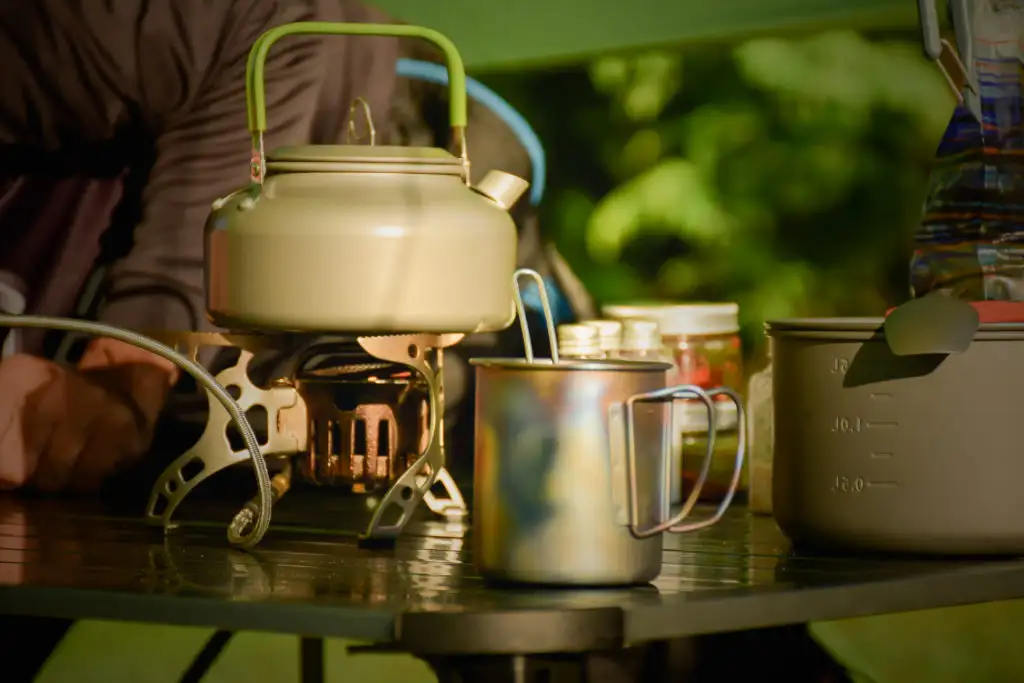
Bear Bags: If you’re bringing food, you need to also bring a way to protect that food from wildlife. Even if you’re not in bear country, you’ll still have rodents and other animals after your stash. A bear-resistant bag, like this one by Ursack , is made from a bulletproof fabric that can withstand a bear attack and doesn’t need to be hung off the ground (but must be tied to something secure, like a tree trunk). Or go for a lighter-weight odor-barrier bag like this one from Base CampSource, which eliminates any food smell and won’t attract animals to your camp. These should be hung off of the ground in bear country.
Cooking Set: Unless you’re doing ready-to-eat meals, you’ll need to bring utensils and pans for cooking. This one from Bulin has everything you need, from pots and pans to a dish sponge for scrubbing, for an affordable price.
Camping Stove: This gas camping stove from Coleman packs down small when not in use and is lit with the push of a button so you don’t waste time fumbling with matches. The cover unfolds into a set of wind-blocking panels to keep the flames alight.
Instant Coffee: If you’re used to starting off your day with a nice hot cup of coffee, don’t deprive yourself of that in camp. Instant coffee, like these sachets from Tandem Coffee Roasters , are easy to pack and prepare in minutes.
Cups: These collapsible cups are made from a food-grade silicone that is lightweight and packs down small, but can hold hot beverages without scalding your hands.
Water Bottle: If you’re staying at a campground with potable water, where keeping your drink cold is more of a concern than water quality, pack an insulated bottle like this one from YETI . Headed to the backcountry? The LifeStraw Go Water Filter Bottle will give you safe drinking water fast.
Meals: Don’t feel like cooking while on vacation? There are plenty of tasty ready-to-eat meals these days that just need boiling water to eat. Check out our editors’ taste test of Good to Go meals here .
The 5 Best Lightweight Hiking Boots for Travel
Camping Packing List: Hygiene
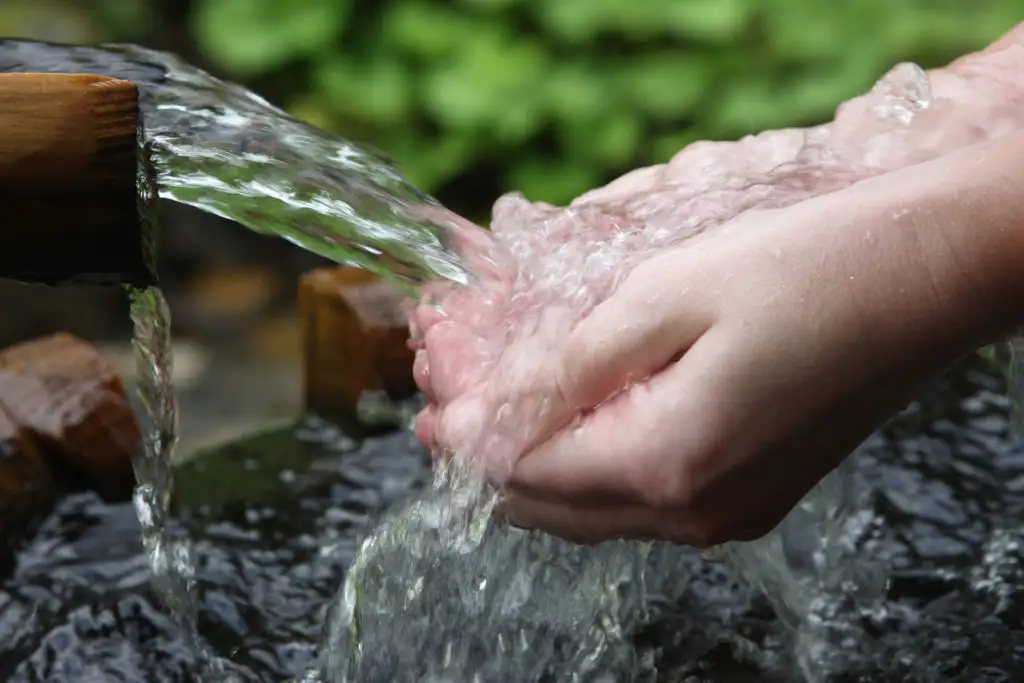
Wet Wipes: If no shower is in sight, these Surviveware biodegradable wet wipes are designed for “no rinse bathing and showers.” Thankfully, they’re unscented and hypoallergenic.
Dry Shampoo: Similarly, a small container of dry shampoo can help remove sweat, smells, and oil—no water required.
Hand Sanitizer: Hygiene is really important while camping, especially if you don’t have a clean water source for hand washing. Use hand sanitizer before eating, before preparing food, and after using the bathroom.
Camping Shower: Can’t go that long without a shower? A small solar shower bag can be filled up and heated by the sun to give you a quick hot shower.
Quick-Dry Towel: This microfiber towel dries up to four times faster than a regular cotton towel, and packs down very small.
Biodegradable Soap: Coleman’s Camp Soap comes in spill-proof sheets that are biodegradable and can be used for hand washing, showers, and dish washing.
Biodegradable Shampoo & Conditioner : This eco-friendly 3-in-1 conditioning shampoo and body wash from Stream2Sea is biodegradable, eco-friendly, and reef safe.
Toothbrush and Paste: Make sure you use potable water when brushing your teeth, and pack a small toothbrush and toothpaste set like this one .
The Best Travel Swimsuits for Any Type of Vacation
Camping Packing List: Miscellaneous
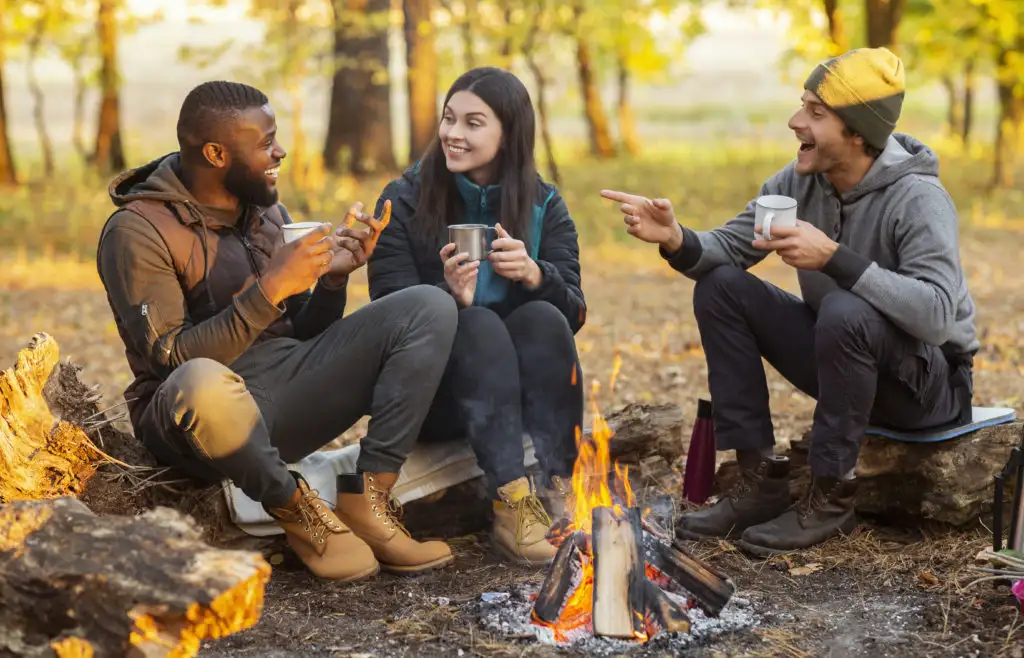
Trashbags : Always pack out what you pack in (even trash), so don’t forget the trashbags .
Sunscreen and Bug Repellent : Badger offers both sunscreen and bug repellent made from natural ingredients in easy to apply packaging.
First Aid Kit: Don’t go camping without a first-aid kit —even if you just use the bandages for blisters, you’ll be glad you have it.
Caroline Morse Teel is still working on her camping packing list. Follow Caroline on Instagram @TravelWithCaroline for photos from camp.
Some review products are sent to us free of charge and with no incentive to offer a favorable review. We offer our unbiased opinions, positive and negative, and will never accept compensation to review a product.
You Might Also Like:
We hand-pick everything we recommend and select items through testing and reviews. Some products are sent to us free of charge with no incentive to offer a favorable review. We offer our unbiased opinions and do not accept compensation to review products. All items are in stock and prices are accurate at the time of publication. If you buy something through our links, we may earn a commission.
Top Fares From

Don't see a fare you like? View all flight deals from your city.
Today's top travel deals.
Brought to you by ShermansTravel
Greece: 8-Nt, Small-Group Tour, Incl. Aegina,...

Amsterdam to Copenhagen: Luxe, 18-Night Northern...
Regent Seven Seas Cruises

Ohio: Daily Car Rentals from Cincinnati

Trending on SmarterTravel
Campsites and Booking:
- Find a campsite
- All UK Campsites
- Late Availability
- Latest Offers
Other Types of Camping:
- Member-only Campsites
- Social Camping
Other Accommodation:
- Self Catering
- Holiday Homes
Inspiration:
- Holiday Ideas
- Camping with Kids
- Camping with Dogs
- Camping near the Coast
Camping Insurance
- Caravan Insurance
- Motorhome Insurance
- Campervan Insurance
- Tent Insurance
- Trailer Tent Insurance
On the Road
- Arrival Breakdown Cover
- Car Insurance
Other Cover
- Home Insurance
- Caravan Holiday Home Insurance
- Camping Tips
Whether it’s your first camping trip or you’re an old-timer, use this camping checklist as a guide when you pack for your trip away. Your packing list might vary slightly to the items below depending on your camping unit but it’s a good guide to get you started. Remember that many of our campsites have on-site shops or are near outdoor equipment shops in case you do need to pick something up whilst you’re away.
If you're a member of the Club and staying on our campsites, make sure you bring along your membership card. View the benefits of joining the Club .
Tent Checklist | Cooking Checklist | Clothing Checklist | Health & Safety Checklist | Personal Items Checklist | Checklist Download
Tent and comfort checklist
These are the most essential items for a tent camping checklist:
- Tent and required components (tent footprint, porch etc.)
- Spare tent pegs
- Sleeping bag/Duvet for each camper
- Sleeping pad or mat for each camper if tent camping
- Extra blankets
- Camping chairs
- Camping table
- Toilet roll
- Torches/lanterns

Cooking checklist
- Water container
- Camping stove
- Fuel – gas / charcoal depending on your cooking method
- Matches or lighter
- Coolbox & ice packs
- Oven glove/heatproof mat
- Serving dishes
- Cups / glasses
- Cooking utensils
- Washing up liquid & sponge
For inspiration view our cooking ideas and recipes .

Clothing checklist
- Pyjamas and plenty of extra warm layers
- Long-sleeved T-shirts
- Jumpers and warm layers
- Sun/winter hat
- Trainers/walking shoes

Health and safety
- Insect repellent
- First Aid Kit
- Any regular medication
- Anti-bacterial hand wash and sanitizer
View all of our health and safety help and advice.

Personal – toiletries, towels etc.
- Soap/shower gel
- Shampoo & conditioner
- Sanitary items
- Shaving cream
- Contact lenses / glasses
- Toothbrush & toothpaste

Useful extras
- Dustpan and brush
- Small shovel
- Entertainment- a deck of cards, board games, beach ball, football, book etc.

Camping checklist download
Download and print your free camping checklist (PDF)
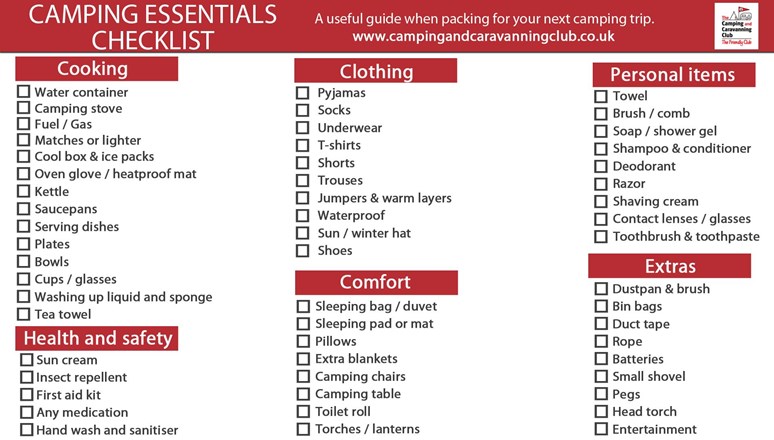
> A roll of cling film. Great for not only keeping food fresh but also as a first-aid extra as a bandage or to hold on an ice pack. Even to keep your mobile dry in wet weather! - Maxine
> I take my clothes in packing cube, making it so much easier to find things. I also take a lavender linen spray in a small atomiser to make the camping bedding smell lovely and a good selection of snacks as all that fresh air makes you so hungry! - Lorraine
> Spare key for the campervan in case I lose it, solar panel for fridge, and cold cider. - Andy
> A good book, teabags and chocolate! - Sue
> Coffee machine, slow cooker and comfy chair. - Craig
> Wellies, duck tape and toilet roll. - Eileen
> Head torch / solar-powered lighting, a cool box and a slow cooker. - Samantha
> Camp bed, self-inflating camping mat (min 8cm deep), and a 3-season sleeping bag...who wants to wake up shivering?! - Amy
> Wine, handheld Dyson for the bugs and a note to remind me to take the detachable towbar from underneath the boot floor BEFORE I pack the boot. - Jack
> My top 3 items: 1 husband to put up the awning, 1 dog to walk whilst the husband puts up the awning and 1 bottle of red wine to help level the awning. - Judith
Kids Camping Packing List
Find out more.
Beach Packing List
Your ultimate glamping packing list, camping with your dog checklist.
The protection of personal privacy is an important concern to The Camping and Caravanning Club. Any personal data collected will be treated in accordance with current data protection legislation.
For more information about our data protection policy please go to our privacy policy .
Fun Camping Gear
Transparency Disclosure – We may receive a referral fee (at no additional cost to you) for products purchased through the links on this website. Learn More
The Ultimate Camping and Hiking Packing List + [Printable PDF Checklist]
Preparation is the key to having an enjoyable and successful outdoor adventure.
The minute you find that any of your camping essentials is missing, it can mean the difference between a relaxing and rejuvenating camping trip to a disaster getaway you want to end right away.
A camping packing list is an excellent tool to help you plan, prepare, and organize your camping trip. You’ll need different things depending on where and how you plan to camp, the type of activities you plan on doing, and how long you will be camping.
By having a camping checklist, you can ensure nothing important is left behind before leaving the house. Remember, home is many miles away and shopping amenities are not always available, especially in times of emergencies.
When camping, make sure you take all the essentials with you. A basic camping essentials list can serve as a guide and you can add or remove items depending on your individual needs.
Camping Essentials Checklist
Camping gear list.
Basic camping checklists always include a sturdy shelter or high quality tent, proper sleeping gear, lighting, and cooking equipment.
BEDDING ESSENTIALS
Cooking and cooking tools, camping supplies list.
Pack enough clothing and footwear according to the weather at your camping destination.
SHOES AND FOOTWEAR
Personal hygiene.
Keep yourself clean even when you are outdoors and take with you the following hygiene items:
Camping Accessories List
Miscellaneous.
The following miscellaneous items are important to have on your packing list. You may want to include them depending on your camping trip.
FIRST AID KIT
A first aid kit is essential if you are planning to spend time outdoors. You will need to have a camping first aid kit to ensure your outdoor safety.
CAMPING FOOD LIST
Food is always a big part of any camping trip to maintain your energy. Plan your camp meals and check out some of our easy and delicious camping recipes.
Camping Tips:
- If you are new to camping and haven’t have never experienced the great outdoors, try camping in your backyard first to have an idea of what to expect.
- Before leaving the house, tell someone close to you about your camping plans. Let them know where you intend to go, how long you’ll be there and when you’ll be back, directions to the camping ground as well as the roads that can be taken to get there.
- Leave your phone number behind and your vehicle details including a description of the vehicle and the license plate number.
- Moreover, check with the campground where you are staying whether they have functional restrooms on the site, or whether they provide firewood and picnic tables at your disposal.
For your safety, keep the camping essentials checklist with you. Do all of the necessary camping planning and preparations to ensure that your trip will be a memorable getaway for you and your family, a perfect camping getaway that you’ll continue to cherish in the years to come.
http://www.realsimple.com/ http://www.lovetheoutdoors.com/ http://www.gooutdoors.co.uk/ https://www.rei.com/ http://www.pc.gc.ca/ http://www.ukcampsite.co.uk/ http://fun.familyeducation.com/
You may also like

Jamey Woods
Jamey Woods is from Colorado and is an avid camper. He is an online writer and critic who loves gardening, hiking, camping and other outdoor activities. Jamey shares the best things he has to offer regarding anything about camping tips, food, equipment and more.
Leave a Reply Cancel reply
Your email address will not be published. Required fields are marked *
Save my name, email, and website in this browser for the next time I comment.
Free Shipping $149+ & Lifetime Warranty

- Layover Blankets
- UltraPak Mini Blankets
- Toiletry Bags
- Duffle Bags
- Travel Accessories
Cookie policy
I agree to the processing of my data in accordance with the conditions set out in the policy of Privacy.
Your cart is empty

Gravel Travel Shipping Insurance
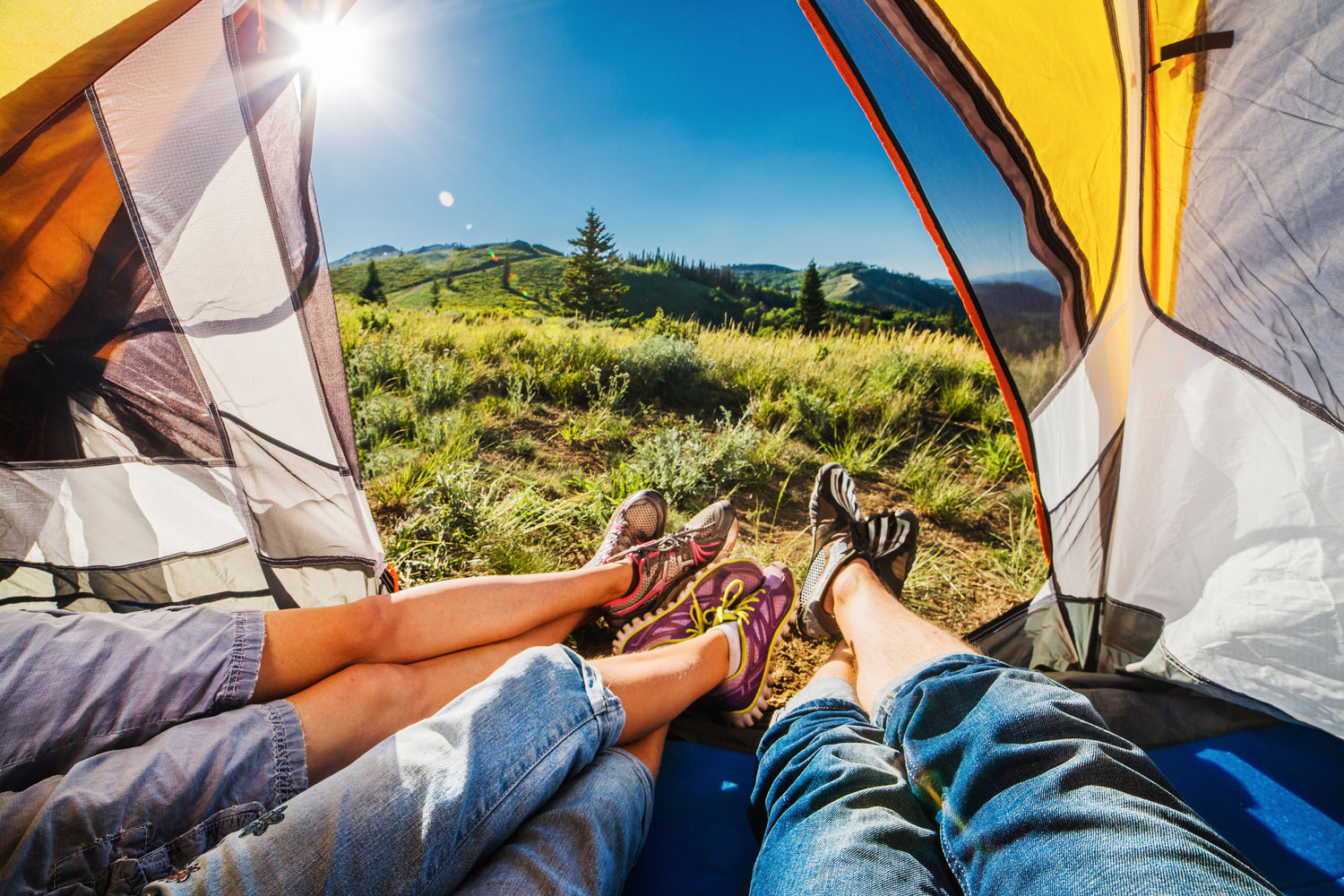
Ultimate Camping Packing List | Free Printable Checklist
- Packing Lists
- Printable Packing Lists
Whether you’re an experienced camper or just getting started, it's always helpful to have a camping list on hand.
In this article, we'll cover all the camping essentials, from tent stakes and utility rope to eco-friendly items that'll help you enjoy the outdoors responsibly!
Plus, our free camping checklist is available to download and print below, so you can check off the items when you're shopping online or at the store!

Download our Free Camping Packing List Here
Different Types of Camping
It’s important to consider what type of camping option is best for you. Here are a few popular types of camping:
- Backcountry camping: This involves carrying the bare minimum to save weight, hiking deep into the wilderness, and setting up camp far away from other people. It requires special preparation, as you'll need to be prepared for any obstacles you may encounter on the trail.
- Car (or base) camping: A great option for beginners, car camping is done by parking your car near a campsite, then bringing in the necessary equipment and supplies. It's great for those who want to be close to the car and have the comfort of sleeping in it if desired.
- RV camping: Recreational vehicles (RVs) offer a more luxurious camping experience with some of the amenities you may find at home, such as running water, a shower, and a kitchen. This type of camping is great for those who want a bit more comfort than tent camping can provide.
Once you’ve decided on the type of camping you want to do, it's time to consider where to go for the best experience.
Where To Go Camping
What type of landscape or terrain interests you? Are you a desert person or is the mountain more your speed? What kind of activities do you want to do while camping, such as hiking or fishing? These are all important questions to ask yourself when narrowing down a campsite and a list of things to take camping.
Seasonality is also a factor when planning where to go camping. For example, if you're planning to camp in the mountains during winter, you might need extra gear like a sleeping bag rated for cold weather and snow boots.
How To Find the Right Campsites
Once you have an idea of where to go, make sure to research your destination thoroughly. Check for any fees that may be associated with the campsite and read through reviews from other campers.
Sites like Recreation.gov and The Dyrt provide a detailed list of camping spots, plus reviews and ratings. Another option is Campendium for RV camping and Freecampsites.net for budget-friendly campers.
Additionally, consider any special amenities you might need, such as potable water or a dump station. It's also important to research local amenities within a 40-mile radius of the campsite, including any grocery stores and ATMs.
Ultimate Camping Packing List
From camping must-haves and cookware to camping clothes and toiletries, this comprehensive packing list will help you crush your next outdoor adventure!
Camping Must-Haves

No camping list is complete without these essentials:
- Three-season tent
- Tent stakes
- Camping pad (or sleeping bag)
- Utility rope
- Firestarter
- Fire extinguisher
- First-aid kit
- Camping chairs
- Hard-sided camp cooler
- Refillable water dispenser
- Outdoor LED lanterns
- Bug netting
- Citronella candles to repel insects
- Multi-tool or Swiss Army knife
- High-capacity power bank
- Picnic blanket
Pro-tip #1 | Camping Basics
If this is your first camping trip — or if you're rusty in the tent setup department — practice by pitching your tent at home before you go. That way, you'll be well-prepared and confident when you arrive at the campsite!
Camping Attire and Accessories

Choosing the right clothes for your camping trip can make a huge difference in your comfort level. Here are some key clothing items to include:
- Breathable tops (cotton T-shirts, wool overshirts)
- Convertible hiking pants
- Base layers/thermal wear (wicking shirt, thermal undies, fitted synthetics)
- Thick socks (preferably wool)
- Sleepwear (long-sleeve tops and full-length bottoms)
- Outerwear (rain jacket, windbreaker, fleece pullover)
- Sunhat or visor
- Warm hat or beanie
- Shower sandals or flip flops
- Hiking boots
Pro-tip #2 | Camping Attire
When it comes to camping clothes, it's always best to layer. Choose clothing made from lightweight fabrics that will keep you warm and dry without weighing you down (think: merino wool and flannel). If the weather is unpredictable, pack a variety of clothes so you can adjust your outfit as needed throughout the day.
Camp Kitchen and Cookware

Having the right cookware can help make your outdoor meals more enjoyable. Here’s a checklist of essential kitchen items for your camping packing list:
- Camping stove and fuel
- Portable coffee maker
- Reusable water bottles
- Cast-iron skillet
- Cooking pot with lid
- USDA-certified firewood
- Resealable plastic bags
- Tablecloths and clips
- Plates, cups, and utensils
- Bottle opener
- Chef's knife
- Paring knife
- Cutting board
- Aluminum foil
- Skewers and grilling tools (spatula, tongs)
- Bamboo utensil set
- Paper towels
Pro-tip #3 | Camping Cookware
When base camping, it can be helpful to set up a camp kitchen with either a chuck box or a folding station . This way, you'll have easy access to all your cooking essentials and a go-to workspace for meal prep.
Camping Food and Drink

Don’t forget to bring enough food and drinks for your trip. Here are some essential items for your camping packing list:
- Cooking oil
- Spices (salt, pepper, etc.)
- Condiments (ketchup, mayo, mustard, etc.)
- Protein and energy bars
- Dried fruit
- Nuts and seeds
- Canned food (beans, soups, stews)
- Instant oatmeal
- Fresh fruits
- S'mores ingredients (marshmallows, chocolate, graham crackers)
- Stovetop popcorn (in a popping pan)
- Breakfast meats
- Spread (peanut butter, jam, etc.)
- Hamburgers or veggie burgers
- One-gallon water jugs
- Coffee, tea, hot chocolate
- Beverage mixes (juice or lemonade)
- Your choice of milk (whole, coconut, oat, etc.)
Pro-tip #4 | Camping Food and Drink
When it comes to food, freeze what you can at home before transferring to the cooler. This will help keep food items cold and preserve their freshness throughout your camping trip. Lastly, plan for meals that are easy to cook and require minimal cleanup.
Camping Toiletries and Hygiene

In addition to the camping essentials listed above, don’t forget to include the following toiletries and hygienic items in your camping packing list:
- Biodegradable soap
- Hand sanitizer
- Dental floss
- Toilet paper
- Towel (or quick-dry towel)
- Shampoo and conditioner
- Camp shower bag (if applicable)
- Portable mesh shower caddy
- Cotton balls
- Shave cream
- Hair brush or comb
- Three-way camp mirror
- Sanitary pads or tampons
Pro-tip #5 | Camp Hygiene
When you think of things to take camping, unscented products don't usually come to mind. But these are known to attract wildlife, so choose scent-free items where you can and avoid unwanted visitors!
Camping Clean-Up Items

Next up on our camping packing list are cleaning supplies. Here’s what you'll need:
- Collapsible camp sink (w/drain)
- Eco-friendly dish soap
- Scrub brush and sponges
- Dish towels
- Multi-surface cleaner
- Microfiber towels
- Travel laundry bag
- Eco laundry detergent
- Tide To Go pen
- Portable travel clothesline
- Garbage bags
Pro-tip #6 | Camp Clean-Up
For camp clean-up, it's important to establish a routine of regular maintenance and ensure that you always tidy up before nightfall. This not only maintains cleanliness but also helps keep the campsite safe and livable for others.
Extra Camping Items

Finally, don’t forget these add-ons that can make your camping experience even more enjoyable and safe:
- Camp glow sticks
- Emergency flare
- Safety whistle
- Hiking poles
- Portable solar charger
- Portable fan (battery-powered)
- Space heater (if camping in colder conditions)
Pro-tip #7 | Extra Camping Items
When you're packing for a camping trip, it's easy to get carried away. To avoid overpacking, figure out the activities you'll be doing and plan accordingly. For example, if you're going fishing or water rafting, pack appropriate gear and clothing to make the most of your time outdoors.
That's a Wrap
Taking the time to plan and pack for a camping trip can make all the difference in your outdoor adventure. With that said, you don't need to bring everything under the sun with you. Just have a clear idea of what type of camping you want to do and for how long, then you can use our camping packing list as a guideline.
To find some of the items listed above, plus other rad travel gear, feel free to browse our online shop . And for more travel tips and hacks, check out the rest of our blog .
Happy trails! ⛺🔥🪵✨
Continue reading
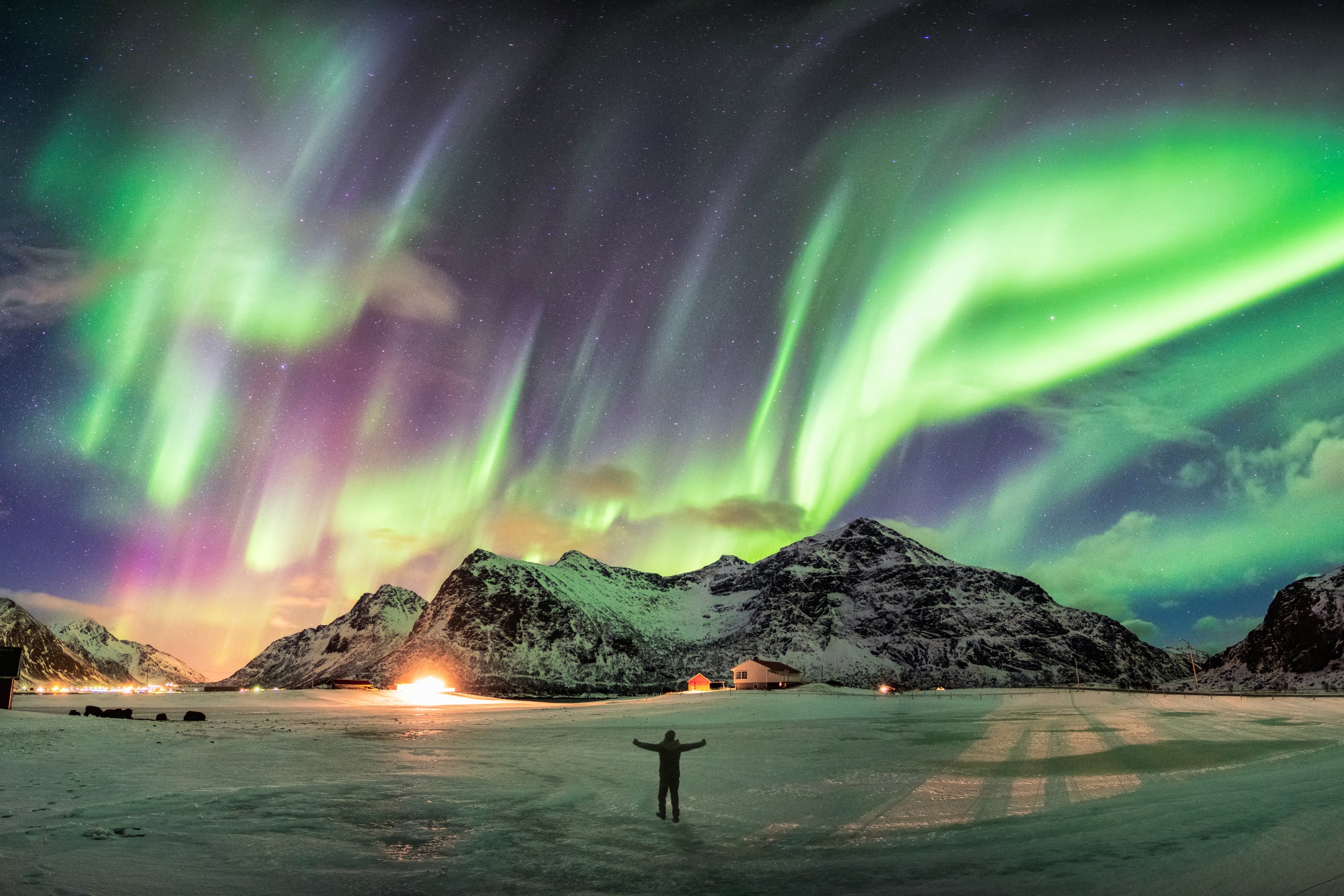
6 Best Places To See the Northern Lights
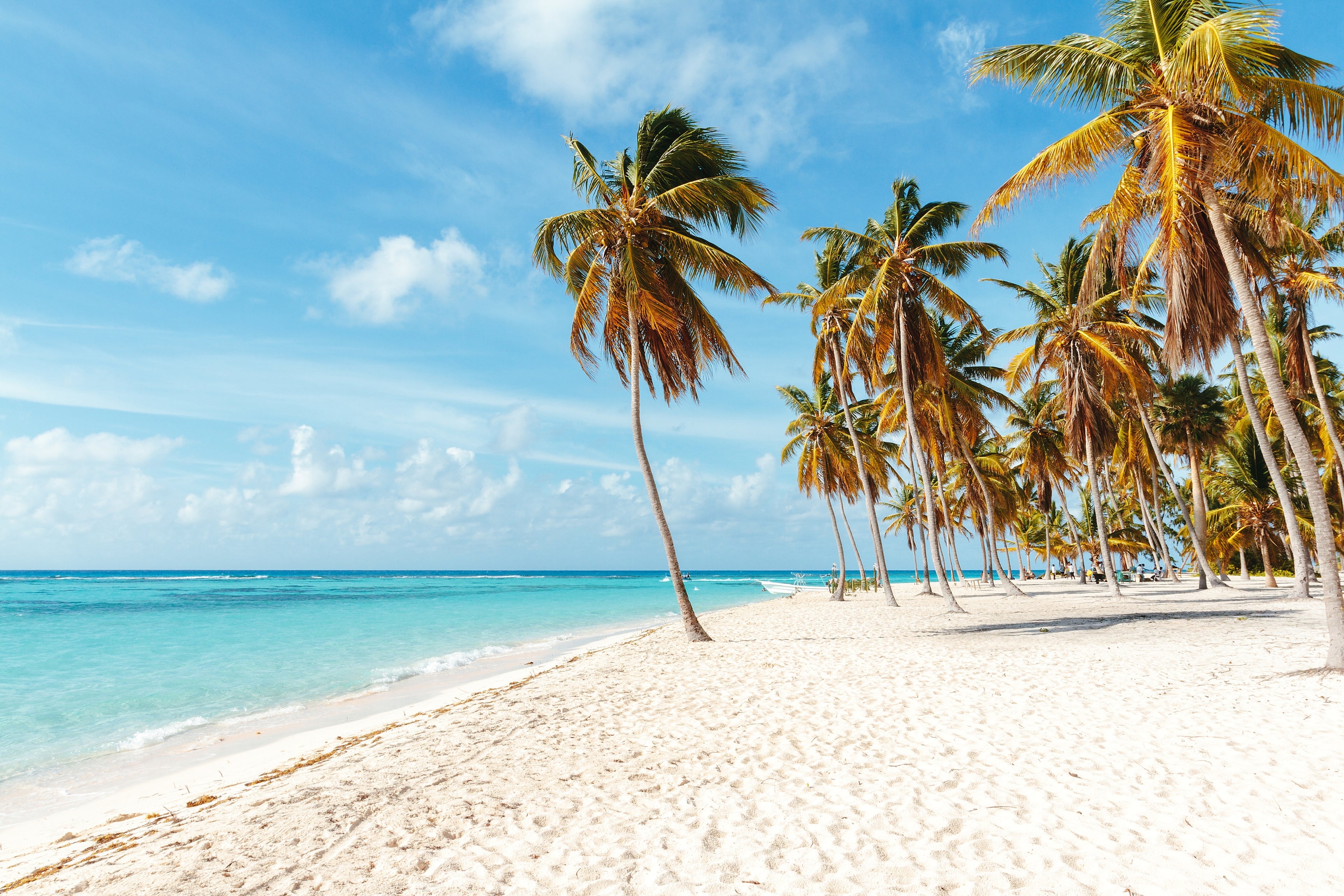
5 Best Caribbean Islands for First Timers
Leave a comment
All comments are moderated before being published.
This site is protected by reCAPTCHA and the Google Privacy Policy and Terms of Service apply.
Privacy Policy |

- Best Hikes In The World
- Appalachian Trail
- European Hikes
- Nepal Hikes
- Patagonia Hikes
- See All Hikes
- Mount Kenya
- Mount Kilimanjaro
- Mount Toubkal
- See All Mountains
- South Africa
- New Zealand
- Switzerland
- United Kingdom
- Packing Lists
Camping Checklist – What To Bring Camping (Free PDF)
Packing Lists , Resources
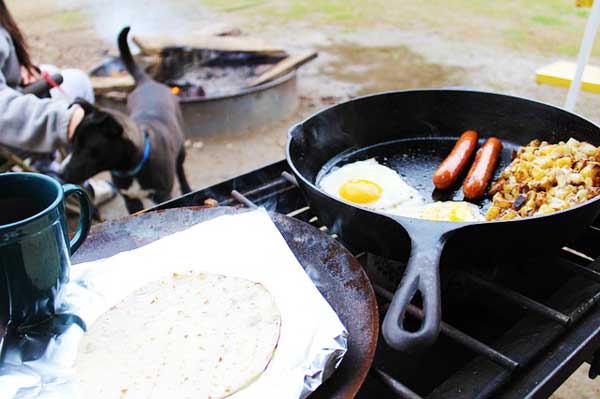
Packing for a camping trip can be hard work and it is very important that you remember to pack all the essentials . To help you, we’ve put together a complete camping checklist of all the items you might need, so that you never forget anything behind. To get to the Ultimate Camping Checklist , see the end of the article. You can download it for free. Also check out our camping gifts and gifts for hikers articles for awesome ideas on special gifts you can give to campers inn your life.
This article contains affiliate links. It won't cost you extra, but if you buy something using our links, it will help us keep the site alive!
Campsite Sleeping & Leisure
One of the most important aspects of camping is your shelter (tent) and sleeping arrangements, which can make a world of difference to your experience. This section includes all the items you need to set up your campsite, like your tent, sleeping bags, pillows, camping chairs, as well as some of the most useful accessories that will come in handy on your camping trip, such as headlamps, lanterns and sun shade.
- Tent with stakes, poles, guylines, etc. I recommend the Nemo 2 series .
- Ground cloth/tent footprint - to protect the bottom of your tent.
- Mallet for tent stakes
- Torch or headlamp and batteries. I recommend the Petzl Reacttik and these other great quality headlamps .
- Sleeping bag . I recommend the Marmot series .
Camping Tip
Keep your camping equipment and gear in clear storage bins to see where everything is at a glance. This will also keep all your essential gear clean and dust-free between camping trips, as well as make it easy to find and pack everything more efficiently for your next getaway.
Optional Camp Setup Gear
Leisure and accessories, sleeping extras.
- Lanterns and tent light (batteries, solar, power station )
- Camping furniture: fold up chairs . I recommend the Kijaro Dual Lock Portable and these great quality camping chairs , table etc.
- Table cloth and clips to hold it down
- Sunshade ( umbrella , tarp , gazebo, etc.)
- Mosquito net
- Clothesline (with clips)
- Sleeping bag liner . I recommend the Sea to Summit series .
- Sleeping pad . I recommend the Therm-a-Rest NeoAir Xtherm .
- Blow-up mattress with pump, if required. I recommend the SoundAsleep Camping and these great quality sleeping pads .
- Blow-up pillow
- Hammock . I recommend the Lawson Blue Ridge and these other great quality hammocks .
- Rain fly or tarp for tent
- Extra blankets
- Duct tape for repairs / repair kit for tent, mattress, etc.
Camp Cooking
Nowadays, camp cooking gear is more lightweight and compact than regular cooking gear, so that you can pack everything you might need to make delicious, hearty meals and hot drinks while you’re out enjoying nature.
- Camping grill and rack
- Cooking set incl. utensils , pots and pans . I also recommend: the Stanley Adventure Base Camp.
- Water bottles
- Food and snacks
- Fire starter ( matches / lighter )
- Camping knife (or multi-tool )
- Bottle opener, corkscrew
- Napkins/Paper towels
Try mixing some of your ingredients at home before you leave so that you don’t have to pack any extra containers of various ingredients.
Optional Cooking Accessories
Cooking and eating .
- Plates / bowls (if not in your cooking set)
- Mugs/cups (if not in your cooking set)
- Grill tongs
- Camp stove and fuel . I recommend the MSR Windburner and these other great quality camping stoves .
- Cooking pots with a potholder and frying pan (if not in your set). I recommend the TOAKS pot.
- Cooler with ice or ice substitutes. I recommend the YETI Tundra 65 Cooler .
- Eating and cooking utensils (if not in your set)
- Cutting board
- Portable coffee/tea maker
- Marshmallow/hot dog roasting fork
- Bucket for washing up (collapsible)
- Biodegradable soap
- Pot scraper/sponge
- Trash/recycling bags
- Small food-storage containers / bags /foil
- Large, clear plastic bins to store kitchen gear in
Clothes and Footwear
When it comes to camping, you’ll want to pack clothes that are made from lightweight, moisture-wicking fabric that can dry quickly and be worn multiple times before needing a wash. While the type and quantity of clothes you pack will depend on the weather, it’s always a good idea to pack multiple layers and one thick outer layer that will keep you warm and protect you from any wind or rain. If you go hiking to explore the area, packing clothes that you can walk comfortably in and possibly packing some swimming gear will come in handy.
- Moisture-wicking tops for Men and Women
- Quick-drying pants and/or shorts for Men and Women
- Moisture-wicking underwear for Men and Women
- Fleece , rain jacket or down jacket for Men and Women
- Hiking boots . I recommend the Salomon range .
- Socks (synthetic or wool) for Men and Women
- to wear around camp
- Sun hat/cap for Men and Women
- Backpack (I recommend the Osprey range ) or daypack (I recommend the Osprey Talon 22 ).
- Drybag or laundry bag to store dirty/wet clothes
Packing some of the right pairs of socks can make a huge impact on your camping experience. If you’re camping in warm weather, thin socks made from synthetic, moisture-wicking material will help keep your feet dry and comfortable. For colder weather, wool socks are a great option for keeping your feet warm and cozy.
Weather-Dependent Optional Items
- Rainwear (jacket and pants) for Men and Women
- Long, thermal underwear for Men and Women
- Warm insulated jacket or vest for Men and Women
- Fleece pants for Men and Women
- Gloves or mittens for Men and Women
- Warm hat/beanie for Men and Women
- Swimsuit for Men and Women
- Water shoes
Toiletries and Protection
Forgetting any one of basic toiletries can be a real bummer, so always double check that you have all the toiletries you'll need, but don't overpack also. Things like your toothbrush, toothpaste, toilet paper, soap and sunscreen are all essential items for a camping trip but there are many useful items you can include in your toiletry bag if you have the space.
- Toilet paper
- Toothbrush & toothpaste (ideally with non-harmful chemicals so as not to damage the environment)
- Biodegradable wipes
- Quick-dry camping towel
- First-aid kit or first-aid supplies
- Sunscreen and after sun care
- Sunglasses for Men and Women (and retainer leash). I also recommend the Flak 2.0 XL and Holbrook sunglasses by Oakley and the Ombraz Armless sunglasses.
- Insect repellent
Packing a First-Aid kit is a must! It is very important that you have these supplies to treat minor scrapes, cuts, bug bites, sunburn and headaches.
Optional Health and Safety Items
- Urinary / menstrual products
- Water filter . I recommend the Sawyer Squeeze or these great quality filter water bottles .
- Sanitation trowel (if no toilets)
- Toiletry bag ( shampoo , soap , shaving items)
- Moisturizer
- Portable camp shower
- Safety pins
- Pocket mirror
Personal Items
It’s always a good idea to take things like your ID, credit cards and cash with you when you go anywhere so that you have them with you to confirm your campsite bookings or in case of emergencies.
Personal Must-Haves
- Credit card and cash
- Cellphone (with charger or power bank )
- Campsite reservation confirmation or permit (if required)
- Prescription medications / contact lenses / glasses
Camping Extras and Entertainment
While these may not be essential items for every camping trip, they are a good idea to pack just in case. Some sort of entertainment is great for longer, multi-day camping trips as there will be times where you’ll just feel like relaxing at the campsite and reading a good book or listening to some music or a podcast.
- Dry bags , stuff sacks or clear plastic bins to store items
- Solar and portable power station . I recommend the Anker PowerPort Solar 2.
- Navigation tools ( watch / compass / GPS / map of the area. I recommend the Garmin Fenix 3 .
- Two-way radios . I recommend the Midland GXT1050VP4 .
- Hiking watch . I recommend the Garmin Tactix Bravo .
- Reading material (Kindle/book)
- Music player with headphones
- Games and toys ( pack of cards )
- Inflatable kayak
- Dog gear and pet food if you’re bringing your dog with you
- Fishing or sports gear
- Nature guide books (insects, flowers, animals etc
Keep your campsite clean and litter-free! Make sure you throw away or recycle your garbage and follow a Leave No Trace protocol. Don’t leave any food lying around as it attracts wild animals to the campsite and gives them a taste for human food which is generally unhealthy for them.
Ultimate Camping Checklist
Campsite and sleeping.
- Tent (with stakes, poles, guylines, etc.)
- Ground cloth/tent footprint - to protect the bottom of your tent
- Torch or headlamp (and batteries)
- Sleeping bag
Cooking and Eating
- Cooking set (incl. utensils, pots and pans)
- Fire starter (matches, lighter)
- Camping knife (or multi-tool)
Clothing and Footwear
- Moisture-wicking tops ( long sleeved tops for Men and Women )
- Quick-drying pants or shorts
- Moisture-wicking underwear
- Hiking boots
- Socks (synthetic or wool)
- Camp shoes for Men and Women
- Sun hat/cap
- Backpack or a daypack for exploring
- Drybag to store dirty clothes
- Toothbrush & toothpaste (ideally with non-harmful chemicals)
- Biodegradable baby wipes
- First-aid kit or supplies
- Sunglasses (and retainer leash)
- Cellphone (with charger or power bank)
If you have any further questions or queries about this Camping Checklist , then please leave a comment below and we'll respond as soon as possible.
Continue Browsing
For more packing lists, see our hiking resources page or choose from one of our popular gear lists below:
- Inca Trail Packing List
- Annapurna Circuit Packing List
- Everest Base Camp Packing List
- Kilimanjaro Packing List
- Hiking Packing List for Women
- Multi-day Hiking Packing List
- Aconcagua Gear List
- Appalachian Hike Packing List
- Tour du Mont Blanc Packing List
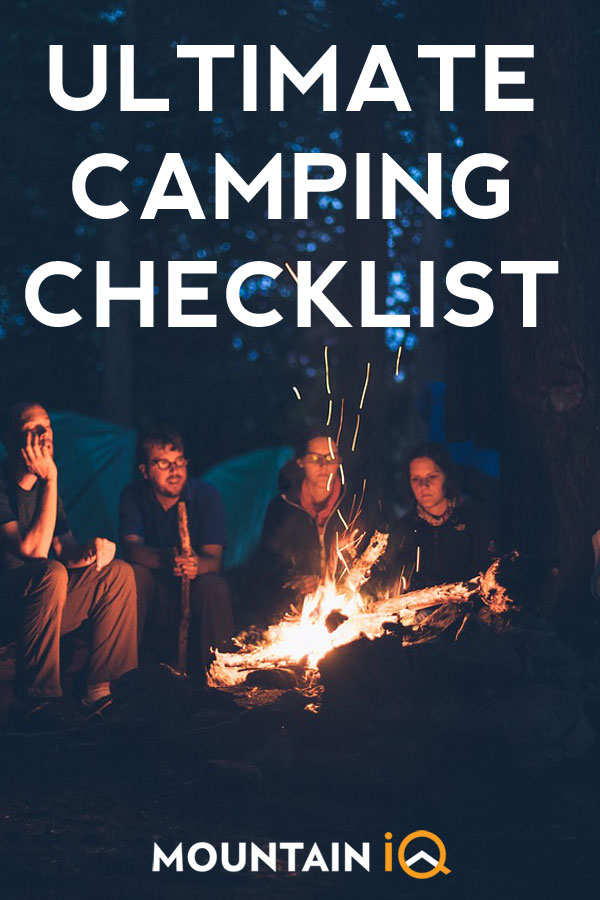
About the author
Mark Whitman
Mark has trekked extensively in Asia, Europe, South America and Africa. He founded Mountain IQ in 2014 with the sole aim to be the best online information portal to some of the most popular mountain destinations around the world. When not writing for Mountain IQ, Mark is out exploring the outdoors with his wife!
We work with local guides to offer great value adventures at unbeatable prices
Advertiser Disclosure
Many of the credit card offers that appear on this site are from credit card companies from which we receive financial compensation. This compensation may impact how and where products appear on this site (including, for example, the order in which they appear). However, the credit card information that we publish has been written and evaluated by experts who know these products inside out. We only recommend products we either use ourselves or endorse. This site does not include all credit card companies or all available credit card offers that are on the market. See our advertising policy here where we list advertisers that we work with, and how we make money. You can also review our credit card rating methodology .
- Hiking & Camping
The Ultimate Camping Vacation Packing Checklist & Best Tips [Printable]
Amar Hussain
Senior Content Contributor
823 Published Articles
Countries Visited: 63 U.S. States Visited: 9
Jessica Merritt
Editor & Content Contributor
108 Published Articles 551 Edited Articles
Countries Visited: 4 U.S. States Visited: 23
![camping trip kit list The Ultimate Camping Vacation Packing Checklist & Best Tips [Printable]](https://upgradedpoints.com/wp-content/uploads/2023/05/Camping-Vacation-Packing-Checklist.jpg?auto=webp&disable=upscale&width=1200)
Table of Contents
Camping trip packing tips and advice, what electronics should i take, travel insurance, travel admin, packing your luggage, camping considerations, food considerations, what to pack in your day bag, apps for camping trips, how to prepare your house before you leave, final thoughts.
We may be compensated when you click on product links, such as credit cards, from one or more of our advertising partners. Terms apply to the offers below. See our Advertising Policy for more about our partners, how we make money, and our rating methodology. Opinions and recommendations are ours alone.
Whether camping means going off the grid or glamping, you’ll need a solid packing list. And what you pack can depend on when you plan to camp and which campground you plan to visit.
Summer days at a state park may require bug spray and breathable sleeping bags, while a fall outing in the desert calls for layers and thermal gear to deal with warm daytime temperatures and frigid nights. Always make sure to pack for the right climate range for the location you plan on setting up camp at.
📋 Click To View Our Camping Trip Packing List >> 📋
Whether you’re a seasoned backpacker or it’s your first time heading out for a weekend getaway, packing for some time in the great outdoors can be daunting. This guide can give you peace of mind by helping you ensure you don’t forget any necessities and that you’re prepared for anything.
Check the Weather
Weather can be unpredictable. There can be a cold snap in July or rain in the forecast for December when you might typically expect snow. That uncertainty is further amplified if you’re going somewhere new. Since camping involves spending a lot of time outside, always check the weather a few times before heading out.
You’ll also want to ensure your gear is adequate for the weather. Invest in a nylon tent with waterproof stitching for all-weather camping. Since it’s breathable, you won’t have to worry about overheating in the summer, and it will also keep out any cold evening chills.
That same advice also applies to sleeping bags, though you might also want to double-check the temperature limits for a bag.
Consider Trip Length
Dedicated campers often head out for a week or more. But 2- to 3-day camping trips are common because camping is an easy and fun way to spend long weekends throughout the year.
Your packing list won’t change much, no matter how long you’re away. You’ll just need to make sure you bring enough socks, underwear, layers, and food to last however long you’ll be camping, preferably with some spares in case of an emergency.
Make Your Reservations
Since campgrounds are specifically zoned with safety in mind, it’s not recommended, and sometimes even illegal, to camp in non-designated areas. While you can sometimes get lucky and find a campground with empty sites on a whim, making reservations ahead of time is much better.
When choosing your campground, check the on-site amenities and what’s in the area. For example, some grounds have showers, general stores, or food lockers, while others offer the bare minimum for a more rustic experience.
Plan the Drive
You’ll most likely have to drive to your camping destination, so make sure you plan your route, especially if you’re going to another city or state.
Look at the different course options available to you and find out if there are any special road conditions you should be aware of. For example, some roads might require all-weather tires or snow chains at certain times of the year, while other routes might have stretches prone to bumper-to-bumper traffic.
If you’re facing a drive that’s an hour or more, or if you’re going to be camping with young children, try to get an idea of what rest areas and gas stations you’ll encounter along the way. That way, you know when to plan restroom or snack breaks and where to fill up your car if running low on gas.
Get Your Car Road Ready
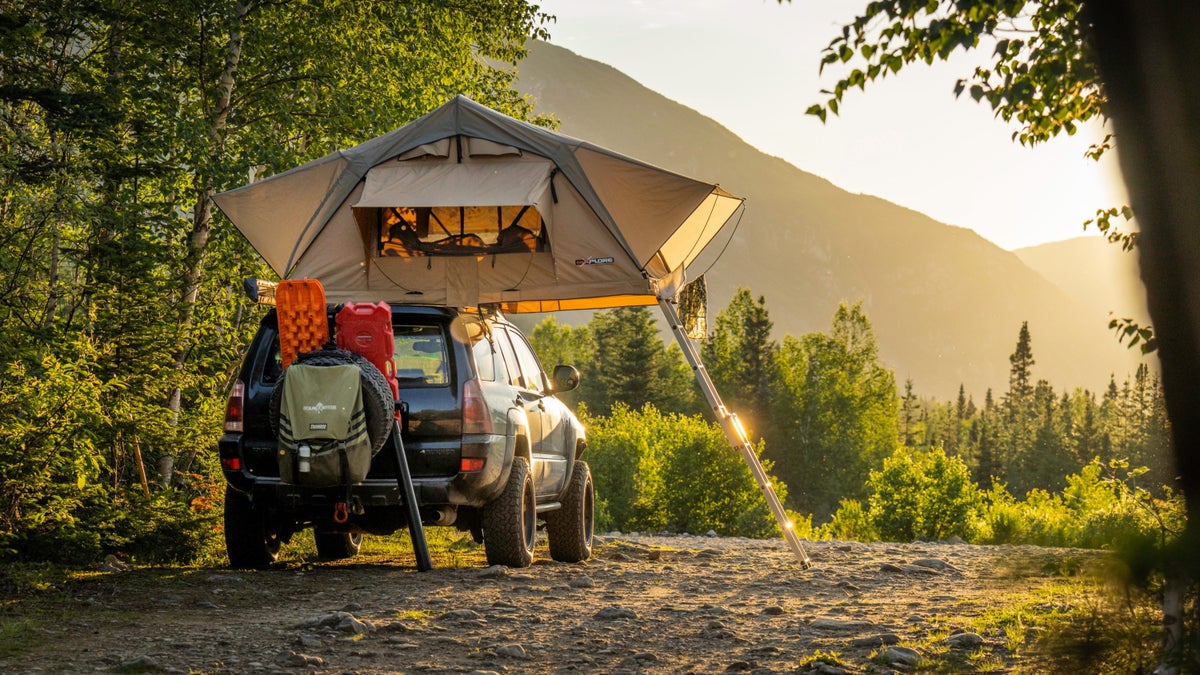
Don’t wait until the last minute to ensure your car is ready for a lengthy drive, especially if you’ll be further than a few miles away from home. There are a few things to check before driving to your campsite:
- Check your oil. Make sure you have enough and that you don’t need a change.
- Check your car battery. If you’ve noticed some trouble getting the battery to turn over when you start your car, consider getting a new one, and at the very least, make sure you have jumper cables, just in case.
- Check your tire pressure. If one or more are low, top them up with air before hitting the road.
- Consider changing your tires to suit the driving conditions. For example, you might need tires for off-roading or snowy weather depending on where you’re going.
- Check your headlights, brakes, filters, and emergency supplies. For your own safety, make sure you have a spare tire or a patch kit, and test out your high beams, headlights, fog lights, and hazards.
- You might also want to consider taking your car to your mechanic to get your brakes and engine glanced at to make sure everything is in top shape.
Make a Packing List Early
It’s tempting to wait until the last minute to pack, but that puts you at risk of over or underpacking. A few minutes of research can be a huge help.
Once you’ve checked the weather and made your reservations, list the types of clothing and gear you’ll want to bring with you. Making that list early allows you to review your belongings and ensure you have what you’ll need . If you find out you’re missing something essential, you have time to get it before you’re set to hit the road.
Some general things you can always count on needing are sunscreen, a reliable backpack, a canteen, a mess kit, and bug spray.
Choose the Right Gear
The ideal camping gear will be durable enough to withstand most expected weather conditions and last multiple years of use. It will also be compact and lightweight since you might have to hike with your equipment. However, the specifics for what supplies you should use will depend on the sort of camper you are and what trips you plan on taking.
Hiking and camping backpacks tend to be ergonomically designed, with thick padded straps to distribute weight . They also usually have straps and clips to attach a bed roll and a water bottle. Many tents also come with a carrying bag. These bags are usually long and relatively narrow, making them easy to store and less bulky to carry.
Purchase Travel-sized Items
In most cases, you’ll probably be driving to your camping destination, which can be comforting when it comes to packing. However, no matter your trip, you’ll still have relatively limited space.
You don’t have to forgo bringing your favorite shower soap, shampoo, mouthwash, or skincare products. However, getting full-size versions can take up a lot of room in your bags and add extra weight and bulk.
A simple workaround to ensure everything fits in a single toiletry bag is to bring travel-sized products. If your favorite brands don’t make travel items, you can create your own by bringing reusable containers. Remember, unlike hotels, most campgrounds won’t supply toiletries, so you’ll need to pack everything from shower gel to deodorant and toilet paper.
If you’re planning a camping trip, you probably intend to spend a lot of time outside. However, you probably won’t leave all your tech behind.
You’ll want to ensure you’re entertained while driving to your site. A tablet or e-reader with pre-downloaded books, shows, or movies, can help occupy your time on the road. Ensure you bring charging cords and a car charger with a USB port to keep your tech charged.
You might also want to bring a camera with you. While it’s true that most phones, even non-smartphones, have a built-in camera, having a separate digital camera will help preserve the battery without sacrificing capturing your camping fun.
Other electronics you might want to bring are wireless speaker s or a radio to listen to music, a smartwatch to track your fitness, a camping heater or fan , and, of course, your phone.
You might also want to invest in a portable battery so none of your electronics die on you.
Most people don’t think about travel insurance when it comes to camping. However, it’s still worth considering. Depending on your campground’s reservation and cancellation policies and the length of your trip, travel insurance can give you peace of mind if you have to cancel or change your plans .
You should also consider travel insurance if you’re flying to your camping destination. That’s especially true if you’re camping in another country that your regular insurance might not cover. It’s also a good idea to take out an insurance plan on any valuable items you’ll bring, including your electronics and camping gear.
Even last-minute camping trips involve some administrative organization. To save yourself any travel headaches, have any documents you need close at hand.
As a general rule, make sure you bring the following:
- A photo ID , like a driver’s license, and photocopies in case you lose them.
- A print-out copy of any reservation information you might have.
- Your health and travel insurance information .
- Emergency contact information .
- The contact information and address of your campsite .
- Any vital health information like allergies, medications you or your travel companions take, dietary requirements, and medical conditions.
- Multiple forms of payment like credit and debit cards and cash.
Keep Your Travel Documents Safe
You probably won’t have many travel documents to look after on a camping trip, but if you receive digital confirmations for your campsite, park entry passes, or any other reservations, ensure you have multiple accessible copies.
Print hard copies, save screenshots to your phone or tablet, and save any emails you receive.
Cash and Credit Cards
Most campsites will be equipped to take credit or debit cards, but smaller or older grounds might prefer cash for on-site payments. As a rule of thumb, it’s best to carry some physical cash with you if there are bank or tech problems that might make card payments difficult.
If you’re traveling out of state, make sure you also contact your bank or credit card provider to let them know you’ll be traveling to avoid any charges you make being flagged as fraudulent.
Keep Your Personal Details Close for Emergencies
On a day-to-day basis, it’s perfectly fine to have all your essential information on your phone or synced to your different online accounts.
However, when camping, it’s best to have a hard copy of your contact information, emergency contact names and numbers, and all critical medical and dietary information. Keep these papers together in a protective sleeve you can quickly get to in case your phone dies or loses signal.
Packing is one of the most exciting parts of the planning process. Avoid the usual pitfalls campers face and follow these tips so you can pack like a pro every time.
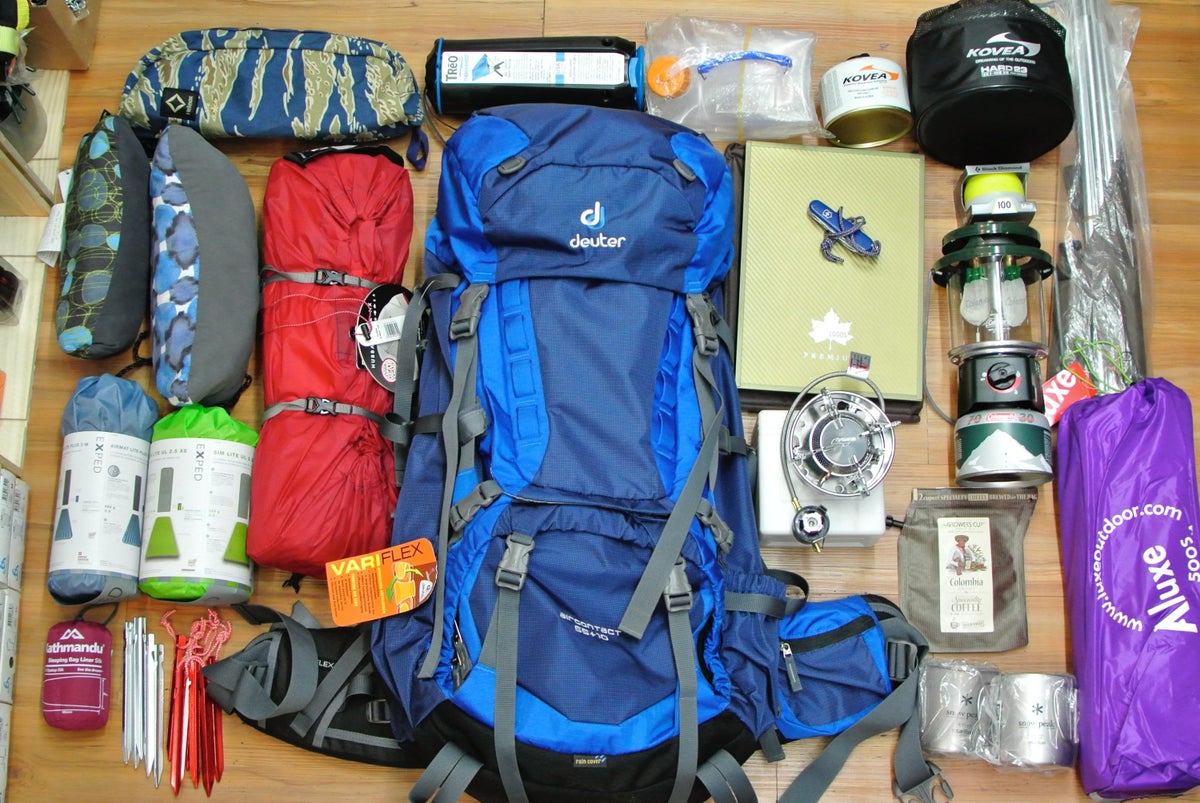
Lay It All Out
Before putting anything in your bag, lay out absolutely everything you want to bring. Having a visual helps you take stock of your packing list . You’ll be able to see if anything is missing or if you’ve overpacked in some areas.
If you’ve made any changes to the packing list you’ve already created, rewrite it to reflect your current essentials to avoid any confusion later.
In general, for a 3-day summer trip, you should pack the following:
- 1 waterproof jacket
- 3 pairs of breathable socks
- 4 lightweight tops
- 1 sun hat or baseball cap
- 1 pair of long, breathable, and comfortable pants
Folding vs. Rolling — Which Method Is Best?
How you pack can affect how efficiently you use your space.
Folding vs. Rolling
Folding is best at home as it helps prevent wrinkles. However, rolling is a space-saver. In most cases, you probably won’t need freshly pressed clothes while camping. Or you can get away with packing wrinkle-resistant clothing.
Roof Box Considerations
Roof boxes are great options for taking a small car, having bulky gear, or traveling with a larger group in a single vehicle. They’re usually sturdy and weather-proof , so you can drive in any climate without worrying about damaging your belongings .
If you’re a first-time or occasional camper, you can make do with a backpack or duffle bag before investing in a roof box. This might limit space in your car, though, if you don’t strap your luggage to the roof of your vehicle.
Bring a Laundry Bag
Unless you’re planning a 1-night trip, having a laundry bag can help ensure you don’t mix your dirty clothes with your clean items. Any spare bag to throw your dirty clothes in will be helpful, but if you can, go the extra mile and pick a water and leak-proof option. This is especially helpful if hiking, swimming, or rain is in the forecast.
Prepare for Emergencies
Most campgrounds have on-site first aid kits, but they are often just at the front of the grounds, which isn’t always helpful. Pack a small first-aid kit to take care of any minor injuries immediately.
A few things to make sure you have on hand are:
- Multiple adhesive bandages of different sizes
- A small bottle of rubbing alcohol and/or hydrogen peroxide
- Cotton balls
- Gauze and bandage tape
- A small bottle of aspirin or ibuprofen
- Antibacterial cream or gel
Each campground will have its rules to follow, which should be available on its website or by phone. Some important information you should find out before you camp is:
- How large is each site, and what are any tent size restrictions?
- Is firewood available on-site?
- Are pets allowed?
- Is cooking on-site allowed?
- What are the operating times to set up or tear down your campsite?
- What wildlife is in the area? (Are there raccoons, bears, or bobcats around?)
Plan Your Activities
Plan what you’ll do while on your camping trip to ensure you don’t get bored. Consult what the campground has available, for example, if there are hiking trails or swimming and fishing areas.
To add variety to your days, you can bring things to keep yourself entertained, like puzzles, games, or even a frisbee if it’s allowed. Many also work as backup options if rain or other weather conditions change your plans.
Keep Your Essentials Close By
If you need to get to a change of clothes or any medication, digging through all your belongings is annoying. Keep all your essential items in easy-to-access places, like in a day bag or a designated compartment in your backpack.
Some things to keep close at hand:
- Cash and cards
- Meaningful or expensive items like wedding rings or smartwatches.
Most campgrounds allow on-site cooking. In many cases, bringing or preparing your food will be essential. Here are a few things to consider when meal planning for your camping trip.
What Food Should I Bring?
Bringing mostly dry or non-perishable items will reduce food waste . Cereal, crackers, bread, peanut butter, and canned protein like tuna are favorites as they don’t require cooking. You can also bring food cooked over a fire, like rice, soup, or beans.
Frozen foods, meat, or fresh fish aren’t recommended unless you eat them shortly after purchase.
Cook Ahead or On-site?
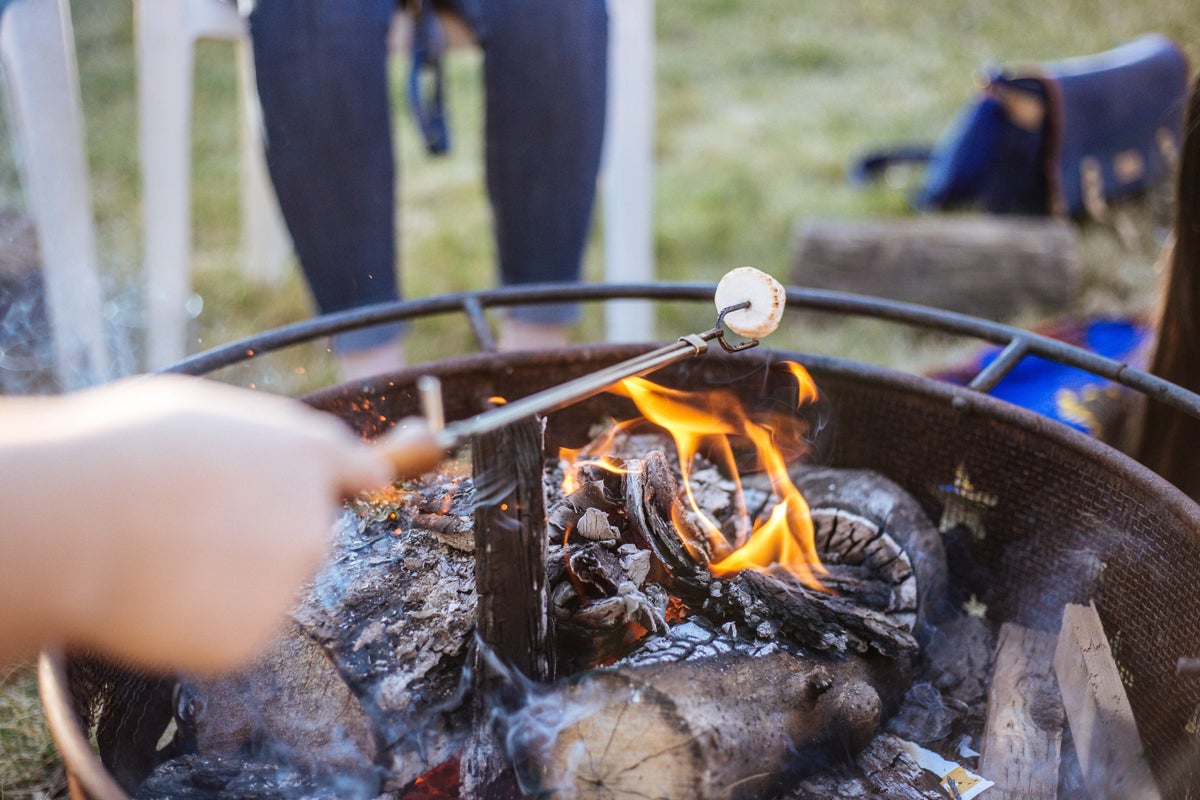
There are pros and cons to cooking ahead or cooking at your campground.
Cooking Ahead
Preparing your food ahead of time has its advantages. For one, since you’re making things in your kitchen, you have more control over spices and portions.
You’ll also have more freedom with the food you prepare since you can use refrigerated or frozen ingredients you might not have at camp. However, in most cases, you’ll need to keep your meals temperature-controlled to keep them from spoiling. That means you’ll have to bring a good cooler.
Cooking On-site
Cooking at your campground means you can bring shelf-stable items. That can cut down on food waste.
The drawback is you’re limited in what you can cook as you won’t have a full kitchen , and you’ll likely have minimal ingredients and refrigeration. It can also be a hassle if you forget to pack an ingredient or utensil you need. If a grocery store is nearby, you can pick up perishable items to cook the same day, but that’s not always guaranteed.
Pack Efficiently
Even when it comes to food, you must pack efficiently so you can get everything you need for your trip to fit in the space you have available. If you’re packing food you prepared ahead of time or food that doesn’t have a sealed package, you’ll need air-tight food containers or bags. This will help keep out moisture and maintain the freshness of your food.
You can find containers in various materials, but plastic, silicone, or aluminum are the most durable. You should consider vacuum-sealing items like herbs, spices, dry ingredients, dried fruits, and lunch meats. Not only does this remove air to preserve food quality, but it also makes them more compact so you can pack more food in less space.
You’ll also want to use temperature-controlled storage options. Insulated coolers will help keep your food chilled, and they’re designed to keep out heat even after any ice packs have melted.
Pick the Right Travel Cooler
Hundreds of coolers are on the market, so it can be easy to assume they’re all the same or be daunted by the number of choices available.
Your ideal camping cooler will depend on your needs, but there are a few characteristics you should keep in mind:
- Coolers with wheels tend to be larger as they’re easier to move around.
- Coolers with shoulder straps allow you to be more hands-free if you carry a lot of gear or want to feel less encumbered.
- Coolers with carrying handles are usually the smallest. They’re best for short outings, picnics, or if you have a few items to keep cool.
- Hard coolers are the most common. They’re often insulated with foam and have an exterior made of HDPE or LLDPE plastics which are higher quality and less prone to cracking or breaking down over time. They tend to keep out the heat but require ice or ice packs to control the temperature.
- Soft coolers are usually made of nylon and mylar with foam insulation. These materials make them lighter and easier to carry. It also allows them to both keep cool items chilled and heated items warm.
You can find options small enough for lunch boxes or large enough to hold over 100 quarts worth of food. Before deciding on a size, here are a few things to consider:
- How many people do you plan to camp with?
- How long are your camping trips going to be?
- Do you plan on using the cooler for other occasions?
- How much food do you plan on preparing?
Keep Your Food Safe
Depending on where you camp, raccoons, deer, or even bears can smell you and what you eat from a mile away. So you need to have a plan to keep your food safe.
What To Do:
- If the campground you’re staying at has food storage containers, use them. These containers are specially designed to keep bears out.
- If there are no on-site storage options, suspend all your food and cooking supplies from a tree at least 12 feet off the ground. Ideally, suspend your food between trees so climbing raccoons and bears still can’t reach it.
- Invest in bear-resistant containers to store food in.
- Use packaged food that doesn’t require cooking when possible.
- Dispose of all your trash in on-site bear-proof trash cans, or follow the food storage tips above.
What Not To Do:
- Don’t cook near your tent to avoid attracting bears.
- Don’t eat in your tent or sleeping bag.
- Don’t keep food in your car or in an unattended area.
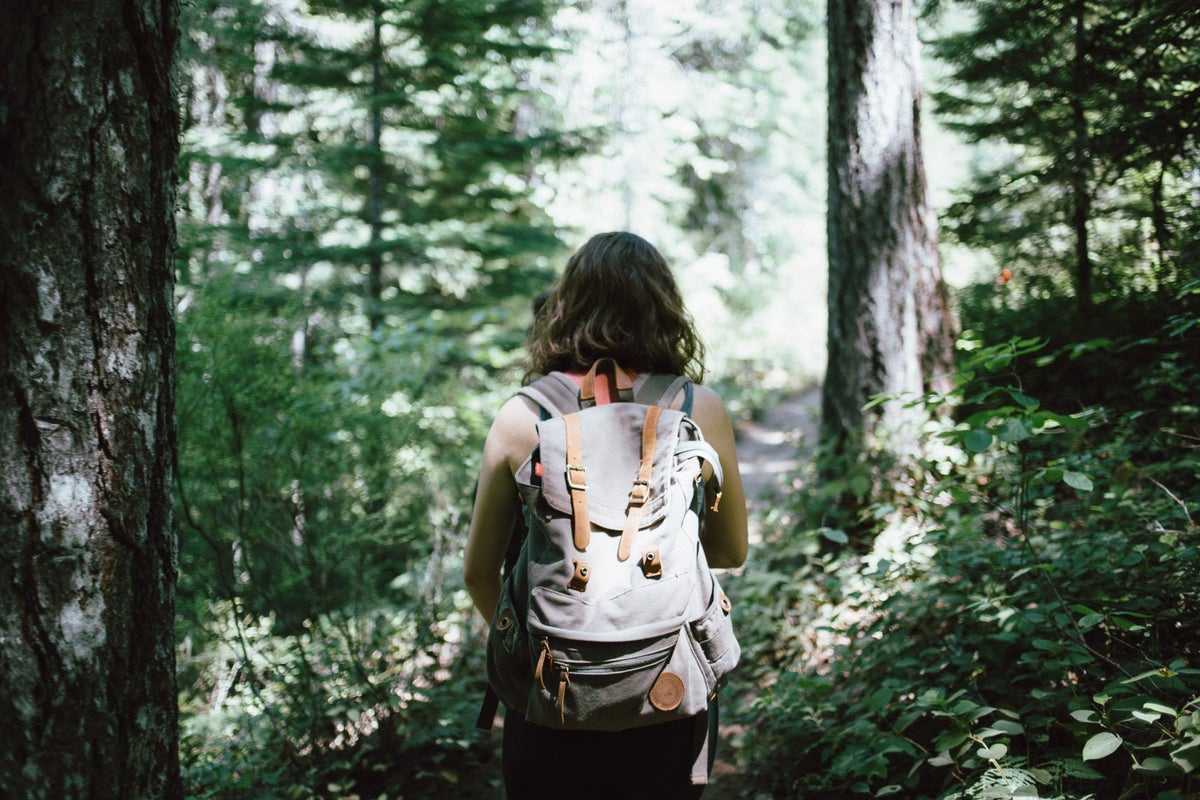
No matter where you set up camp, you probably won’t spend your entire trip in and around your tent. So, having a day bag for short excursions already prepped is a good idea, so you can just grab it and head out on an adventure.
Here are a few essentials no day bag is complete without:
- Make sure you have a jacket packed in your bag, no matter the temperature. A waterproof windbreaker is a good option, but anything you can throw on will work if the temperature drops or it starts raining.
- A full water bottle is a must, especially when you’re not sure if water fountains are available.
- Sunscreen that you can reapply every 2 to 3 hours, even if it’s cloudy.
- Lip balm to protect your lips from getting chapped.
- A first-aid kit . You can buy one that’s premade or assemble a small one yourself with some bandages and antiseptic.
- A portable phone charger in case of emergencies since you’ll probably be bringing your phone.
- A packed lunch or snacks like granola bars or trail mix.
- Your general essentials like your ID, medications, and contact information.
If you plan on going swimming, bring a towel and some spare clothes and a bag to put your wet suit in.
Another good thing to have on hand if you’re hiking or exploring is a physical map of the area you can refer back to.
Camping is a rustic activity, but that doesn’t mean you can’t use the wonders of technology to your advantage. You can download multiple apps to make a good trip even better. All apps recommended below are available for Android and iOS devices.
There are hundreds of KOA campsites all over the country, and this handy app lets you see all of them. You can search for available sites, check the local weather, and consult campground rules and information all from 1 app. It even syncs with virtually all navigation apps to help you reach your desired location.
AllTrails is one of the most comprehensive hiking apps currently available. Its database has access to over 200,000 trail maps which can be filtered to suit your needs. You can choose between hiking or biking trails, dog-friendly options, and narrow your search by length and difficulty level.
Though no one likes to think about it, a lot can happen while hiking, so it’s best to be prepared in case of injury. This is an official American Red Cross app that’s full of advice and tips on what to do in case of accidents or emergencies. It even has quizzes you can do to test your knowledge.
Having a glove compartment full of maps is a thing of the past, but trusting mobile navigation apps can be risky. Maps.me is a happy medium. All its maps are digital, which can save space, but it doesn’t rely on cell reception or internet access to work. Before heading out, download the map you need, and you’re all set.
The Dyrt is a camping database that gets its information directly from its users. You can use the app to reserve your campsite, but it can also be used to see your options. You can narrow your search by budget, date, or type of camping since it covers everything from laying a sleeping bag under the stars to “glamping” and RV camping.
Before heading off on your camping adventure, ensure your home is in order. Whether you’re leaving for 1 night or 10, you will want your home to be as organized as possible when you return.
- Get Rid of Expiring Foods: Anything that might spoil while you’re gone should be eaten or tossed before you leave.
- Take Out the Trash: Removing your garbage will ensure your house smells fresh.
- Unplug Electronics: In case of a power surge, you’ll want to ensure your computers and other tech are unplugged. Alternatively, you can use surge protectors or turn things off at the socket.
- Avoid an “Empty” Looking House: If you’re worried about intruders, invest in timers for your lights and television to make your home look lived in. You should also temporarily pause your mail or have someone you trust pick it up while you’re gone if your trip is longer than a few days.
- Get a House Sitter : If you have pets or plants, have someone you trust to come by to check on them. They can also ensure the power hasn’t gone out and everything is in order.
- Let People Know: Make sure you leave a copy of all your travel information with someone you trust in case of emergencies. You should also let your bank, credit card, and even insurance company know you’ll be in a new location.
Camping trips have the potential to be a lot of fun. Unsurprisingly, it’s many people’s favorite way to spend their vacation. However, a lot of planning goes into these trips, from finding the right site to packing light without forgetting anything.
Use our handy packing list, expert tips, and a few helpful apps to help your camping adventure go smoothly so that you can relax and have a great time.
Related Posts
![camping trip kit list The 10 Best Camping Mats for Travel [2024]](https://upgradedpoints.com/wp-content/uploads/2023/01/Best-Camping-Mats-1.jpg?auto=webp&disable=upscale&width=1200)
UP's Bonus Valuation
This bonus value is an estimated valuation calculated by UP after analyzing redemption options, transfer partners, award availability and how much UP would pay to buy these points.
- Search Please fill out this field.
- Manage Your Subscription
- Give a Gift Subscription
- Newsletters
- Sweepstakes
We independently evaluate all of our recommendations. If you click on links we provide, we may receive compensation.
- Travel Products
- Packing Lists
The Ultimate Camping Packing List
From essential gear to accessories and apparel, here’s everything you need for a camping adventure.
:max_bytes(150000):strip_icc():format(webp)/Kevin-Brouillard-Bio-Photo-e1e6e2d6ae6b4bdfa33d8b1b82bd2921.jpeg)
In This Article
- Packing Checklist
- What to Know
Frequently Asked Questions
- Why Trust T+L
Travel + Leisure / Brian Kopinski
Whether to spend quality time with family and friends or just be immersed in nature, camping is a popular pastime for many. While packing is hardly the highlight of a camping trip, bringing the right gear, accessories, and apparel can ensure you are a happy camper and keep safe in the great outdoors.
Figuring out your camping style: backpacking expeditions, drive-in campsites, canoe camping, or a combination of camping types, is a useful place to start. It’s also important to consider your local climate and any specific outdoor activities you’ll need to pack for like hiking or kayaking.
As a lifelong camper and writer specializing in outdoor gear and apparel, I’ve tested a wide range of camping equipment across the trails, lakes, and campgrounds of Upstate New York. From waterproof apparel to tents and cooking equipment, I’ve tested and vetted these camping products firsthand so you can prepare for your trip with confidence.
Camping Trip Packing Checklist
Whether you’re new to camping or a more experienced camper looking to fine-tune your packing style, this camping checklist is a great place to get started. We’ve compiled our top picks for essential camping apparel, footwear, gear, and accessories to enjoy the great outdoors.
Essential Gear
No matter your experience level, there are essential items like tents, sleeping bags, and cooking equipment that you’ll need for a safe and fun outdoor adventure. I prioritize durability and performance when choosing my gear, as these items will endure the most frequent use and need to withstand variable weather conditions. I also factor in comfort and weight into my decision making to ensure I’m creating a home away from home that’s enjoyable and easy to transport.
Besides experience level, consider your camping style, location, and personal preferences when selecting your essential gear. Living in New York State, many of my favorite camping spots involve boat travel, so gear that’s lightweight, packable, and multipurpose is always a plus. And being 6 feet 4 inches tall, some of my essential gear picks reflect my height. For more compact tent dimensions, the REI Co-op Base Camp 4 Tent is great for car or boat camping, while the Nemo Dagger Osmo 2P Tent is a lightweight choice for backpackers. The Jetboil Flash Stove is another favorite of mine that I reserve for backpacking trips.
MEC Cabin 2.0
The dual doors, ample headroom, and plentiful pockets add convenience and comfort to tent cohabitation.
The spacious design means a heavier weight that’s best suited for camping by car or boat.
Being 6 feet 4 inches tall, I’ve longed for a tent with ample headroom for quite some time. The MEC Cabin 2.0's ample height means I no longer have to stoop or crouch while moving around and get in and out the tent. Height aside, the 8.5 x 9 foot floor area affords ample space for several campers with room still for pets and gear. There are also eight storage pockets to keep valuables and essentials in quick and easy reach. When nature calls, I appreciate having the option to exit the tent from either side without disturbing fellow campers. On warmer summer nights, I love unzipping the mesh flaps on the dual doors to create a cross breeze. Meanwhile, the denier polyester canopy and rain fly have reliably withstood rainstorms and strong winds.
Best Sleeping Bag
Nemo riff endless promise down sleeping bag.
Its designed for enhanced temperature regulation and extra wiggle room for side sleepers.
Its temperature rating is intended for three-season use.
The Nemo Riff Endless Promise Sleeping Bag boasts a range of comfort and sustainability-oriented features that make it easy to sleep at night. While I appreciate the swaddled comfort of a mummy-style sleeping bag, the extra width in the Riff’s lower half and footbox allows me to effortlessly stretch out my legs. The hourglass silhouette of Nemo’s Spoon bags is cut wider near the elbows, too, to allow side sleepers like myself to shift sleeping positions without hassle.
I’m also a big fan of being able to control temperature with the Thermo Gill vents rather than fussing with the main zipper. The hydrophobic down in the sleeping bag performs well even when wet, plus it’s PFAS-free and Responsible Down Standard (RDS) certified. When the sleeping bag is nearing its end of life, Nemo can recycle 100 percent of the materials. The Riff is available in men’s and women’s models, as well as regular and tall sizes— all weighing in the vicinity of two pounds. It comes with both a stuff sack for compact transport and storage bag to keep the down from compressing between uses.
Best Sleeping Pad
Therm-a-rest mondoking 3d sleeping pad.
- Durability 5 /5
- Comfort 5 /5
- Portability 5 /5
- Effectiveness 4.5 /5
It delivers plush padding, warmth, and a spacious sleeping surface.
The packed size and weight aren’t ideal for backpacking.
The Therm-a-Rest Mondoking 3D Sleeping Pad offers ample thickness and insulation to rest easy, regardless of temperature and the terrain underfoot. The pad measures 4.25 inches thick when inflated and boasts an R-value of seven for all-season use. Its StrataCore construction integrates a continuous layer of thermal foam to maintain warmth and support along the sleep surface. The vertical sidewalls make a noticeable difference in preventing sagging and maintaining the pad’s full size. The TwinLock valve system makes set up a breeze thanks to its self-inflating capabilities and clear distinction between the “in” valve for inflation and “out” valve for deflation. I find the large (77 x 25 inches) to be sufficiently sized for my tall frame, though it’s also available in XXLarge (80 x 30 inches).
Best Camping Pillow
Hest camp pillow.
- Quality 4 /5
This compressible pillow packs comfort in a travel-ready design.
Though compact, its weight and volume make it a bit bulky for space-conscious backcountry campers.
To ensure a good night’s sleep while camping, I turn to the Hest Camp Pillow for its ergonomic support and plush size of 22 x 15 inches. The exterior is equipped with a soft stretch nylon that keeps cool, while the interior features a blended polyester and memory foam core that adapts to your sleeping position. The curved, dog bone-like shape cradles the neck and helps keep the pillow in place — solving a persistent issue I’ve had with other camping pillows.
In place of a stuff sack, the Hest Camp Pillow folds into itself, and zips shut for transporting in a more compact 14 x 9 inch package. I find this design feature incredibly helpful for keeping things clean when sharing a tent with dogs (or other untidy campers) prone to tracking in dirt and debris. And whatever happens, the water-resistant cover is machine washable.
Best Water Bottle
Hydro flask 24 oz. wide mouth with straw.
It’s easy to carry, well-insulated, and can be configured with different lid designs.
The stainless-steel design isn’t the most lightweight.
The Hydro Flask Wide Mouth is an all-around performer that I use for camping, flights, and office days alike. The vacuum insulation holds up longer than it takes me to deplete whatever I’m drinking. With a 0.7-liter capacity, the Hydro Flask requires refilling at least a couple times a day, but the wide bottle opening promotes easy refilling, whether pouring from a water jug or kettle. The Hydro Flask weighs 0.8 pounds (when empty) and neatly tucks into most water bottle sleeves or car cup holders. I opt to use it with the Flex Straw cap to have the option of one-handed use if I’m on the go.
Best Camping Stove
Coleman cascade classic camp stove.
It offers durability and solid cooking power at an affordable price point.
The temperature control knobs aren’t the most precise.
The Coleman Cascade Classic Camping Stove is a great companion for group camp trips. The 21-inch two-burner cooktop affords plenty of space for me to cook with a pot and frying pan side by side. I appreciate that the grate design is easy to remove and clean around, as well as sufficiently level for accommodating a griddle across both 10,000 BTU burners. Even on windier days, the twin wind guards, and top lid shield the burners from flickering out. While I’m broadly supportive of the shift to sleeker, lightweight gear, the Cascade Classic’s vintage aesthetic has a nostalgic feel amid modern camping essentials.
Best Cook Set
Gerber compleat cook set.
This all-in-one cook set covers the camp kitchen essentials and stacks together for compact storage.
Camping cutlery doesn’t come included.
As someone whose first camping cook set consisted of mismatching plates, cutlery, pots, and pans in an open storage bin, the compactness and uniformity of the Gerber ComplEAT Cook Set is a game changer. The 16-piece set has everything you’ll need for a group camping trip — and nothing you don’t. This includes a sauté pan with detachable handle, hot pot, 1.4-gallon stock pot, two lids, four bowls, four plates, and a mixing bowl. I love that the lids include strainer holes, and that plates and bowls have different colors to easily distinguish whose is whose. The full cook set stacks together like nesting dolls to fit neatly in a carry bag with a drawstring closure. Though it’s fairly intuitive to reassemble, I appreciate that Gerber added a diagram to the bottom of the carry bag showing how to repack the set.
Accessories
After taking care of essential gear, it’s key to leave room for accessories. Whether to explore the outdoors, stay entertained, or provide some creature comforts, these items are meant to enhance your camping trip.
The Wonderboom 3 Bluetooth Speaker is my go-to choice for campsite tunes for its compact, waterproof design and quality sound. The lightweight Helinox Table One is another campsite staple for its cup holders and folded packability. I also prioritize accessories that help keep me organized, including the Radius Outfitters Large Camp Kitchen Organizer for storing kitchenware and the Stansport Collapsible Camp Sink for collecting and washing dishes.
Best Binoculars
Celestron nature dx ed 8x42mm roof binoculars.
These binoculars offer solid performance and a lightweight design that’s backed by a lifetime warranty.
The clarity becomes a bit blurred toward the edge of the lens.
I always pack binoculars to take in the scenery and in the hopes of spotting wildlife (at a safe distance). The Celestron Nature DX Roof Binoculars offer an ideal combination of durability, compactness, and clarity at a moderate price. The multi-coated lenses and phase-coated BaK-4 prisms enhance the light transmission for vivid images, even at dawn or dusk. As a novice user, I appreciate how the focus knob locks in place once you stop moving it. The Nature DX binoculars are waterproof and come with a neck strap, making them well-suited for paddling excursions.
Best Lantern
Luminaid packlite titan 2-in-1 power lantern.
This lightweight and versatile solar lantern doubles as a charger for electronic devices.
The battery may be depleted if charging multiple devices per day.
I always try to find multipurpose gear to simplify my packing list. Since a camping lantern is a must, I love that the LuminAID 2-in-1 Power Lantern serves as both a light source and a charger for my portable speaker and phone. The self-inflating lantern weighs just 0.78 pounds and packs flat for easy storage when not in use. It delivers 300 lumens of light and multiple brightness settings, including a red-light mode for enhanced night vision. I’m a big fan of the adjustable strap, which effectively makes any tree branch or tent loop a suitable location for hanging the 2-in-1 Power Lantern. I also appreciate that it can be pre-charged by outlet at home, and then recharged by solar panels while camping off the grid.
Best Headlamp
Black diamond spot 400 headlamp.
Its lightweight design and long-lasting performance deliver a high-value experience.
The rechargeable battery is sold separately.
A trusted headlamp is key for hands-free navigation in the dark, whether collecting firewood or searching for the privy. The Black Diamond Spot 400 Headlamp is a well-rounded design, boasting 400 lumens of brightness, waterproof construction, and up to 200 hours of battery life. It includes multiple light settings, including proximity which I use for washing dishes and red LED night vision that’s perfect for using in the tent before turning in for the night. Between the comfortable strap and 0.17-pound weight, I hardly notice it’s there while wearing it.
Best First Aid Kit
Breakwater supply waterproof marine first aid kit.
The waterproof kit includes first aid essentials and on-the-water emergency gear.
Some of the water-based emergency items might not be useful for desert campers.
The Breakwater Supply Waterproof First Aid Kit has been my go-to for preparing for the unexpected. Since I primarily camp by boat in the Northeast, the dry bag’s waterproof protection is a must in case of capsize or rain. The kit contains everything you need for treating cuts and more serious trauma, plus a range of supplies like rope, emergency blanket, whistle, and light sticks to be ready for an emergency on the water. I love that the dry bag is bright red and comes with a handle so it’s easy to find and grab when needed.
Best Camp Chair
Helinox chair two.
It’s lightweight, incredibly portable, and takes under a minute to assemble.
Though minimalist, it’s a bit too bulky to fit in the ultralight category.
While many campsites provide picnic tables, I much prefer the flexibility and comfort of a camp chair outside mealtime. The Helinox Chair Two is a favorite for its ergonomic support, stability, and packability. The high-back design offers both head and neck support, and I love that the carry bag doubles as a pillow. Simply stuff it with a sweatshirt or fleece and attach it to the headrest. The Chair Two’s three mesh panels provide air flow while the recycled 600D polyester seat material delivers lasting durability and weatherproofing. Assembly is incredibly intuitive — just pop the legs in the hubs after the shock-corded pulls lock into place. Then, slip the cover over the frame, starting with the top of the chair and then pulling tight to secure the seat. The 2.6-pound chair has an impressive weight capacity of 320 pounds. It measures 18.1 x 4.7 5.1 inches when packed, so it’s easy to tuck away in a backpack or gear storage.
Best Sunscreen
Thinksport mineral sunscreen.
- Transfer 4.5 /5
- Opacity 5 /5
- Water Resistance 5 /5
It delivers lasting protection that’s resistant to sweat and moisture.
It leaves a white cast behind, even when fully rubbed in.
More time outdoors calls for top-notch sun protection. I’m a fan of Thinksport Clear Zinc SPF 50 Sunscreen for its lasting performance and suitability for sensitive skin. It offers continued water-resistant protection for up to 80 minutes, allowing plenty of time for paddling and swimming before needing to reapply. The formula is vegan and dermatologist recommended for those with sensitive skin. It rubs in quickly without any oily residue or grease, though it leaves a fairly noticeable white cast.
Best Bug Spray
Sawyer insect repellent.
It protects against a range of insects that can suck the fun out of camping.
It’s more expensive than some other popular bug sprays.
After relying on DEET repellent for two years during my Peace Corps service in Cambodia, I’m a late convert to picaridin repellent for its odorless and less greasy application. Sawyer Picaridin Insect Repellent uses 20 percent picaridin to protect against ticks, mosquitoes, black flies, gnats, and other biting insects. It provides up to 12 hours of protection, so a little bit goes a long way. The spray pump bottle is easy to use and effective at applying repellent without over spraying. I also appreciate that picaridin doesn’t damage synthetic materials, such as nylon and spandex, which is another drawback of DEET bug sprays.
Best Portable Coffee Maker
Gsi outdoors 30 fluid-ounce javapress.
- Ease of Use 5 /5
- Ease of Cleaning 3 /5
- Portability 4 /5
- Brew Quality 3 /5
This insulated French press makes 30 ounces of coffee and keeps it hot for hours.
It’s a bit bulky and on the heavier side for backpacking.
I take the GSI Outdoors Java Press on all my car and boat camping trips for its ease of use and ability to make four cups of coffee in one go. The French press comes with an insulated nylon sleeve that aids in heat retention and provides a handle for easy pouring. The pour-through lid offers further insulation with its double-wall construction. The silicone ring plunger fits very snug to the press, which helps separate grounds from the brew, though it took some getting used to. I thought it might have been stuck during my initial uses before learning that the plunger works best with a slow, steady push. Weighing 0.64 pounds, it’s not the lightest design, but I store my ground coffee bag in the press to optimize storage.
Best Cooler
Yeti roadie 48 rolling wheeled cooler.
This durable cooler keeps provisions cold and safe with ample storage for multi-day camping trips.
The cooler is leak resistant but not leakproof.
When I need to keep drinks and perishables cold for days, I turn to the Yeti Roadie 48 Wheeled Cooler. It has 45 liters of interior capacity, or the equivalent of 76 cans or 54 pounds of ice. Even when I pack the Roadie to the brim, the puncture resistant NeverFlat wheels and Telescoping Periscope handle make it easy to transport it across tough and bumpy terrain.
The length of the extendable handle is a major plus, as I don’t have to stoop while wheeling the cooler along. And when the Roadie arrives at the campsite, the handle neatly tucks away. Both sides have indented handles if I need to shift it around or tilt it to drain melted ice. The interior of the cooler measures 14.5 x 11.4 x 15.8, which can accommodate most food and drink items, including a wine bottle. I typically add in two dry good baskets (one comes included) on the top for storing butter, lemons, and smaller items I use frequently or don’t want to get wet.
Best Gear Storage
Yeti loadout gobox 60 gear case.
This durable gear box keeps camping equipment protected and organized for easier packing and unpacking.
It doesn’t compress or pack down — a potential downside for campers with limited storage space at home.
Perhaps better known for their insulated coolers, Yeti translates the durability and quality construction they’re reputed for to the LoadOut GoBox 60 Gear Case. The Wildproof design is fully submersible and dust-proof, adding assurance that gear and equipment is protected from the elements and critters alike. The 60-liter case can accommodate three removable cargo trays (two come included) and two removable dividers to partition the main compartment. Though the dividers work well, I’ve taken them out to fit larger gear like camp chairs, folding tables, and cooking equipment. Campers with storage needs beyond 60 liters should note that the GoBox is designed to be stackable with other Yeti gear boxes: either three LoadOut GoBox 15s or one GoBox 15 and one GoBox 30 .
Shoes and Apparel
It’s important to account for the local climate and seasonality of your camping trip when selecting shoes and apparel to pack. Regardless of what the weather forecast shows, I like to be prepared for unexpected rain and cooler temperatures. I also prioritize apparel and footwear that I can wear multiple times to leave space for other camping gear and accessories. For clothing, I also opt for items containing merino wool, which has natural odor resistance. For footwear, I seek out waterproof and quick-drying materials that’ll perform well for hiking and water sports alike.
I love wearing the Bedrock Cairn Evo Sandals in summer for their solid traction and breathability. For kayaking and paddle boarding, the Patagonia Quandry Shorts , are a favorite for their quick-drying abilities, UPF sun protection, and zippered pocket.
Best Hiking Shoes for Men
Salomon x 360 ultra pioneer.
They deliver waterproof protection and excellent traction on varied terrain.
The fit can run a bit narrow.
Unless you’re backpacking or taking extensive day hikes, a hiking shoe offers about the same level of protection with less heft. The Salomon X 360 Ultra Pioneer ClimaSalomon Waterproof Hiking Shoes handle wet and slippery conditions like a pro. The All Terrain Contagrip outsoles are equipped with aggressive lugs that provide excellent grip. On a recent trip to Curacao, they performed incredibly on the loose rocks leading to the summit of Mount Christoffel. I love the simplicity of the Quicklace closure system, which effectively lets me tighten the laces with a single pull. While the lower part of the shoe is waterproof, the synthetic uppers cut down on weight and enhance breathability. Campers will also appreciate that the X 360 Ultras employs recycled materials in its construction.
Best Hiking Boots for Women
Merrell men’s speed eco hiking shoes.
They’re lightweight, breathable, and incorporate recycled materials.
They aren’t waterproof.
The Merrell Speed Eco Hiking Shoes offer ample cushion and support for active days in the outdoors. We love their breathability and how they don’t require a break-in period. The outsoles are fitted with durable lugs to grip slippery and loose surfaces alike. The trail-ready shoes also boast sustainability credentials, namely recycled materials used across the uppers, laces, webbing, mesh lining, footbed covers, EVA foam, and outsoles. The Speed Eco Hiking Shoes are also Cleansport NXT treated for lasting odor resistance.
Best Rain Jacket
Patagonia torrentshell 3l jacket.
- Water Resistance 4.5 /5
- Design 4 /5
- Comfort 4 /5
- Breathability 5 /5
It’s waterproof, yet breathable, and packs into its own pocket.
It only has two pockets.
The Patagonia Torrentshell 3L Jacket delivers reliable protection from the elements. The jacket’s three-layer shell uses recycled ripstop nylon, a polycarbonate polyurethane membrane, and a tricot backer. It’s treated with a PFC-free durable water-repellent coating to shed precipitation. Materials aside, I find that the jacket's multiple adjustment points and storm flaps along the zippers and pockets are where it stands for keeping moisture out. The hood, cuffs, and hem can be easily adjusted for a secure and snug fit. If things get steamy, opening the underarm zippers affords excellent ventilation and temperature regulation. Though it only comes with two pockets, they’re plenty roomy and ideally positioned for warming hands. Between uses, simply stuff the jacket into one of the pockets (once dry).
Best Base Layer
Smartwool thermal layer crew.
This 100 percent merino wool base layer is designed for warmth, breathability, and odor resistance.
Though eight ounces, the base layer is suited for multiple wears.
My mom instilled in me the old adage “cotton kills” to stay safe on childhood camping and cross-country ski trips in the Adirondacks. Once wet, cotton becomes a poor insulator, whereas wool keeps your warm even when wet. Thus, the Smartwool Thermal Merino Base Layer became a mainstay for its 100 percent merino wool construction. The interlocking knit design offers both breathability and next-to-skin comfort. I love that it’s formfitting but offers ample stretch and mobility for hiking, kayaking, and other activities. The Thermal Merino Base Layer is great to wear on its own during milder temperatures, though it excels as a base layer within a winter wardrobe, too.
What to Know Before You Pack for a Camping Trip
Research environmental risks.
Being mindful of environmental risks, such as wildlife and natural hazards, is key when packing for camping and setting up camp. If camping in an area with bears, a secure cooler is a must to safeguard your provisions and yourself. In terms of weather-related risks, packing a waterproof tent, extra layers of clothing, and an insulated sleeping bag is recommended to protect yourself from the elements.
Carefully check campground regulations
Campsites often have regulations about what you can bring and the activities you can do. For example, sites in areas prone to wildfires may prohibit campfires, so packing a camp stove or portable grill will be required for cooking. Campgrounds may also institute bans on generators or quiet hours that limit their use, so being prepared with battery chargers and packing equipment that can run without power may be necessary.
Leave no trace
As we enjoy the outdoors, it’s important to be conscious of where we set up camp and our impact on the environment. Cutting down on the number of disposable items you pack can help minimize waste and the risk that anything gets left behind (like swapping loads of toilet paper for a portable bidet ). Setting up your tent and campsite on durable surfaces where there’s no vegetation is another best practice to avoid harming ecosystems and species that can take years to grow.
The type and amount of food you pack should reflect the duration and rigor of your camping trip. For instance, I lived on oatmeal and dehydrated meal packs that required just adding boiling water on a five-day backpacking trip along Sweden’s Kungsleden trail. But when I have access to a cooler, I bring provisions to cook homestyle meals. To save space and cut down on campsite waste, I typically measure and portion out my perishable ingredients like meat and vegetables instead of bringing them in store-bought packaging.
To avoid attracting wildlife, it’s important to never leave food out and unattended or store it in your tent. At minimum, food should be stored in coolers and gear boxes with secure latches. At night, tuck your food storage in your car or place it at a distance from your tent. If camping in bear country, make use of bear boxes if provided on-site. Alternatively, you can use ropes to hang it from a free or store it in a bear canister for safe keeping.
The combination of an insulated sleeping pad and three-season sleeping bag is typically enough to sleep comfortably in temperatures down to 30 degrees Fahrenheit when tent camping. If adding extra camping bedding or blankets, look for wool or insulated synthetic materials for warmth and weather resistance. You may also want to bring a hammock for relaxing outside of your tent.
Why Trust Travel + Leisure
Kevin Brouillard is a contributing writer at T+L, specializing in outdoor gear and apparel. His work has been published in TripSavvy, Jetsetter, and Oyster, and he served in the Peace Corps in Cambodia for two years. He used his first-hand experience with outdoor adventure in compiling this list of essential camping gear.
Love a great deal? Sign up for our T+L Recommends newsletter and we'll send you our favorite travel products each week.
:max_bytes(150000):strip_icc():format(webp)/TaylorFoxHeadshot-7375be27aedf4b0ea0e0189a4befe7d0.jpeg)
Related Articles
- Bear's Books
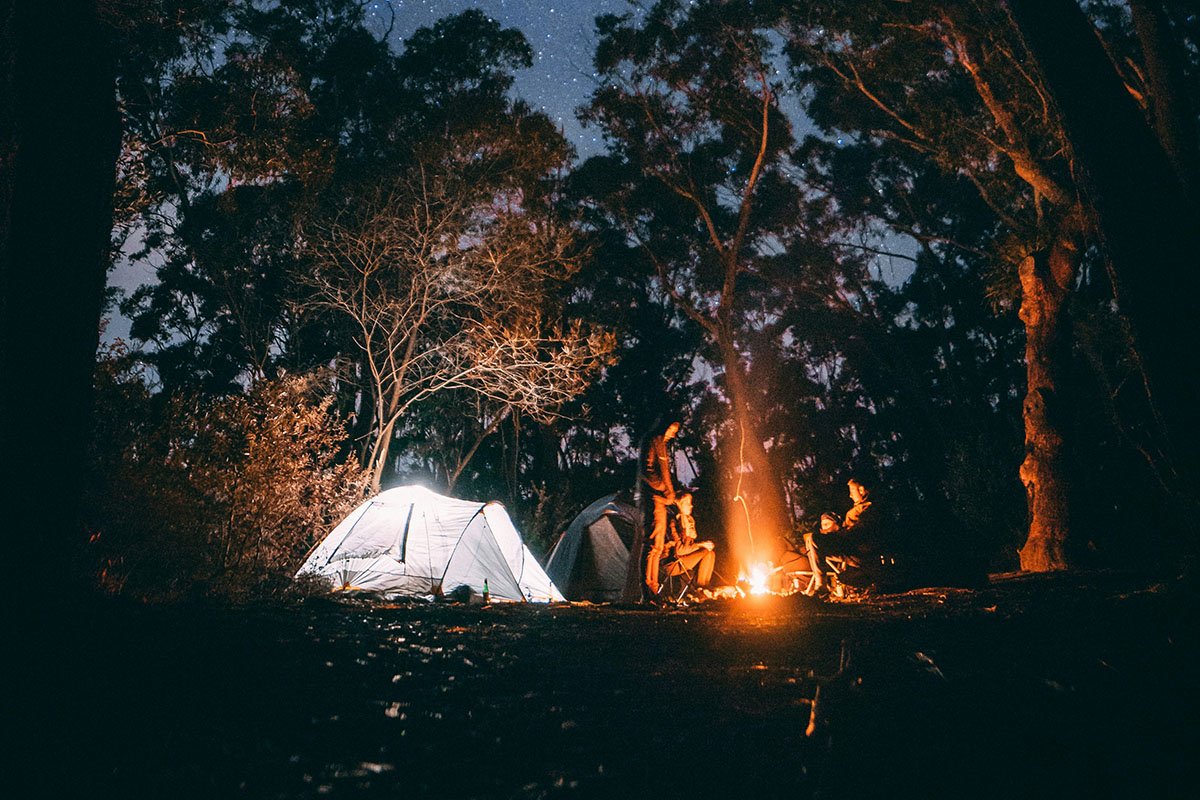
Camping Essentials Checklist: How to Pack for an Unforgettable Outdoor Adventure
By Bethanie Hestermann
More than 80 million Americans go camping each year, making it one of the most popular ways people in the United States choose to spend time outdoors. Camping can be a lot of fun—you’re often surrounded by nature and people you love, plus you get a break from day-to-day life.
Camping takes you out of your “normal” and puts you in a new place, where you can explore, relax, exercise, and socialize outdoors. The connections you form while camping—connections with others, with nature, and with your inner self—make it even more valuable as a form of outdoor recreation.
As any happy camper will tell you, though, camping is also a lot of work. It’s not the easiest hobby to get started with, because there’s a lot of gear involved. If you’re new to this game and need some help planning for your first (or your next) camping trip, you’ve come to the right place.
The key to a successful camping trip is preparation. While there’s always a little bit of “winging it” involved in camping, if you don’t have the camping essentials, you probably won’t have much fun.
Whether you have questions about how to plan a camping trip, need a rundown on some camping basics, are curious about camping safety and etiquette, or just need to know what to pack for a camping trip, you’ll find it all in this ultimate camping essentials guide.
Table of Contents
Different types of camping, how to reserve a campsite, tips for selecting a campground and campsite, sleeping while camping, what to wear camping, cooking while camping, how to wash while camping, going to the bathroom while camping, how to prep for making a campfire, shelter and sleeping, cooking and food, lighting and navigation, first aid, hygiene, and personal items, tools and miscellaneous, camping packing and organization tips, camping safety and etiquette, feeling ready to go camping, how to plan for a camping trip.
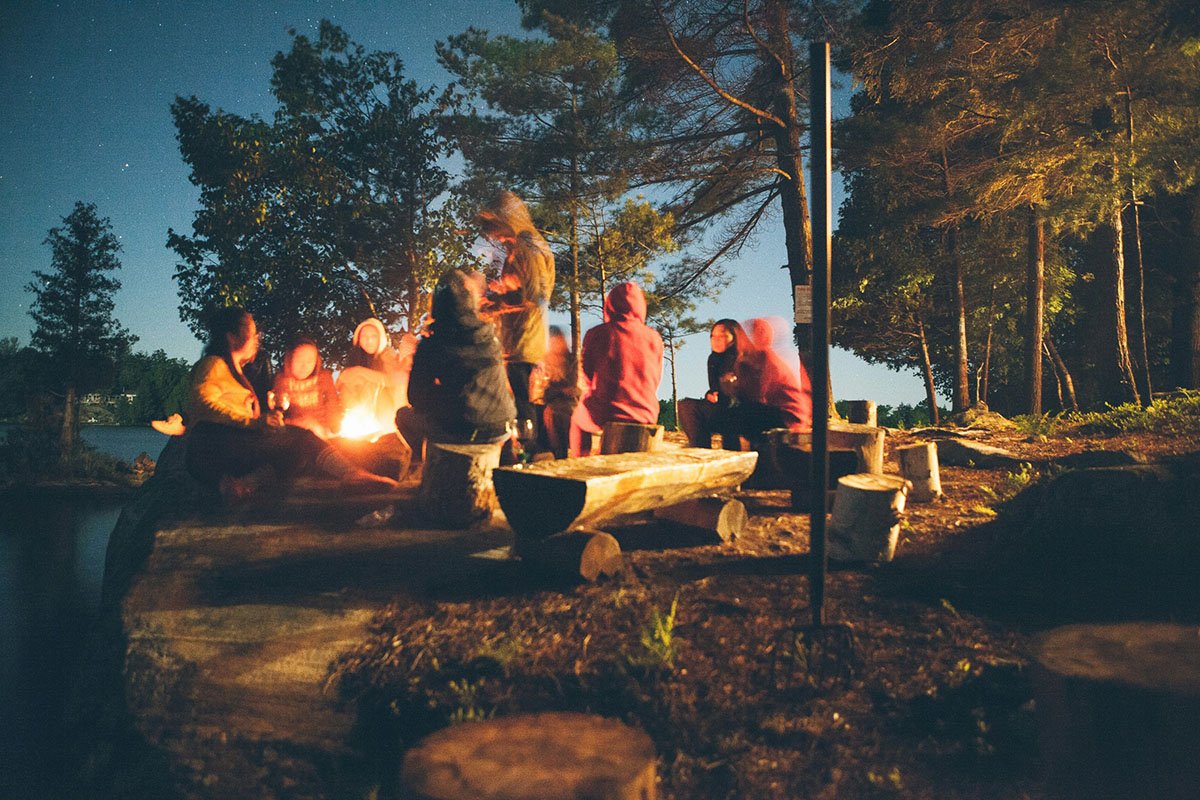
So you’re ready to plan a camping trip in the great outdoors? First, you need to decide where you want to go. You can camp in an established campsite for a fee in places like national parks, state parks, and regional or county-run parks.
In the U.S., you can also camp on BLM (Bureau of Land Management) land in established campsites or on public lands (this is called dispersed camping).
You can also camp on private land in privately owned campgrounds and RV parks, like KOA establishments, or by renting space from a landowner via platforms like Airbnb and Hipcamp .
The type of camping you choose will depend heavily on your preferences, your location, and how far in advance you’re planning your trip.
When planning a camping trip, be very aware of the weather during the time of year and at the location you’d like to visit. If you’re tent camping, you’re more or less at the mercy of the elements (although gear like tent heaters can make a big difference when it’s cold).
Unless you’re an experienced camper or have gear to help you enjoy being outdoors in very hot or very cold temperatures, avoid putting yourself in these situations by camping in milder weather.
When deciding on a duration for your camping trip, consider your gear and your group’s limits. For many, a two-night camping trip over a weekend is long enough to enjoy the activity. For others who may have more gear and/or more tolerance for living primitively, a week is more ideal.
As you research for your camping trip, you may come across different terms for different types of camping. For instance, there’s tent camping, car camping, RV camping, backcountry camping, backpacking, overlanding, and glamping (plus many more).
Try not to get hung up on the terms; we explain the basics below.
Car Camping
The camping trips you remember from childhood were likely traditional tent camping—where you pitch a tent and sleep in it. Car camping can also be a form of tent camping because one meaning of car camping is any type of camping where you drive up to your campsite and can store gear in your car.
This is in contrast to backpacking, where you carry all your gear on your back and hike to the place where you’ll be setting up camp. Some people define car camping more literally as sleeping in your car.
RV camping involves driving an RV or a van or pulling a camper trailer to a designated place and sleeping in it.
RV campers may choose to camp in established sites with hook-ups for electricity, sewage, and/or water, or they may choose to “boondock” or “dry camp”, which is basically just RV camping without those amenities.
Tent and RV campers typically set up in the front country, where campsites are established and there are basic amenities like roads, bathrooms, and potable water.
Backcountry or Dispersed Camping
Backcountry camping is any form of camping that takes place in more remote and less-established parts of parks or wilderness. Backpacking and thru-hiking are the best ways to backcountry camp because you can often only get to these places on foot.
Overlanding
Overlanding can also take you to remote places . . . with the help of your 4×4 vehicle. Overlanders may pitch a tent when they’re ready to make camp, or they may use a truck tent for sleeping that connects to their vehicle.
Glamping was a $3.2 billion market in 2023 , so maybe you’ve heard of it. “Glamping” means different things to different people, but it always involves amenities you don’t typically associate with other types of camping.
Amenities may include Wi-Fi, bathrooms with plumbing, and real beds. The difference between glamping and staying at a hotel is usually the setting that surrounds the establishment.
If you’ve selected front-country tent camping or front-country RV camping, before you can get out there on your outdoor adventure, you must reserve a campsite.
Keep in mind that reservations are not required for all established campgrounds; some are first come first served. However, you won’t know that until you look, and many do require a reservation and, therefore, planning on your part.
For federally owned and managed lands, including U.S. National Parks and U.S. National Monuments, you should visit www.recreation.gov to explore what’s available and ultimately book a campsite. Be aware that if you’d like to camp in popular places, you may need to book up to six months in advance.
To camp on state-owned land, search for the state’s parks and recreation website or do a web search for “California state park camping” (replace “California” with the relevant state for your search).
Each state does it differently, but this should get you to the right place. Many state campgrounds also provide a mix of first-come-first-served sites and reservation-only sites.
When selecting a campground, consider where you want to be while you camp. In the U.S., you can camp in alpine/mountain environments, you can beach camp, and you can camp in the desert—and there are many variations of these basic categories as well.
Your preferred scenery, ideal weather, and favorite activities to do while camping will all help narrow down the choices when it comes to choosing a campground.
Pinpointing the Best Site
Once you’ve selected a campground, it’s time to pick the best campsite. First, consider your equipment.
Some sites are reserved for tents only, while others are designated for RVs. Often, sites can accommodate tents, trailers, or RVs up to a certain length, but not always, so be sure to check the site requirements.
Consider your group size. Double sites are often available within campgrounds to accommodate large groups who would like to camp together. Individual and group sites often have limits on the number of people and vehicles allowed.
To select a prime campsite, look at a map of the campground online. Often, you can pinpoint sites that have more space, are closer to (or farther from) amenities like bathrooms and water spigots, or that have a particular view you’d like to have.
You can often use the map to pick a site that backs up to a creek, that’s next to a trailhead, or that is farther from the road, depending on your preferences.
Camping Basics: Explained
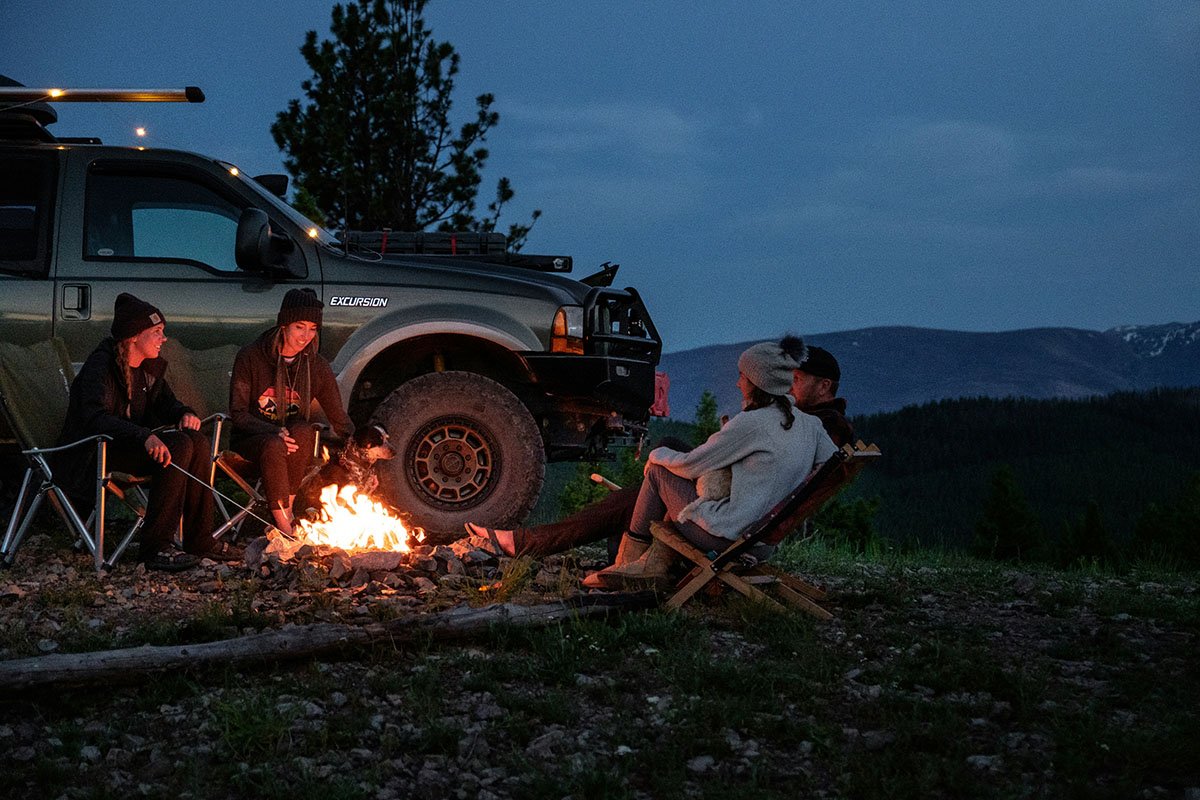
If you’ve never been camping before, the idea of temporarily living outside may seem a bit foreign—and maybe even overwhelming.
Before we get to our camping essentials checklist, which will help you get all your camping gear packed and ready, let’s prepare for your next camping trip by going over some camping basics.
Ah, sleeping under the stars. It sounds so dreamy, right? It’s not always, though. Sometimes, it’s just sleeping outside in the freezing cold. The thing is, we all do this to ourselves because camping is fun.
So how do you sleep while camping? What are your options for staying comfortable ?
Most people don’t sleep out in the open when they camp; they’re in some sort of structure. This structure could be a camper trailer, a van, or an RV, or it could be a tent.
When it comes to selecting a camping tent , you must consider things like how much room you need, how easy you want the setup to be, and what bells and whistles you want or need.
Within your sleeping structure, you’re going to add some more sleeping items to your camping checklist, like a sleeping bag, an air mattress, a sleeping pad, and/or a camping cot .
Decide whether you’re comfortable sleeping on the ground in a sleeping bag or if you need to get up off the ground by using a camping mattress or cot.
If you’re out in cold weather without the proper warmth or stuck in the rain with no rain jacket, you’re going to have a rough time no matter what you’re doing.
Therefore, to have a good time camping, you must bring the right camping clothes. What you wear while camping will depend on where you are, what season it is, and what the weather is like during your trip.
Generally, in warm weather, camping clothes should be lightweight, moisture-wicking, and offer sun protection. Check out our guides on hiking shirts and hiking shorts for ideas.
In cold weather, you should layer clothes to stay warm and dry. Check out our ideas for winter hiking pants , and learn how to layer below.
Before you go, don’t forget to check this list of winter camping items you shouldn’t travel without .
How to Layer
Layering is important when camping because the weather can vary significantly depending on the time of day. In general, layers of camping clothes should include:
- A moisture-wicking base layer
- An insulating layer
- A waterproof and windproof outer layer (like a rain jacket)
Always check the weather forecast before you pack for camping. This will help you know which layers you need and how many items from each category to bring so you can stay comfortable.
Camping Footwear
The footwear you need will depend on the activities you plan to enjoy while camping. If you’ll be hiking, bring hiking boots or other hiking shoes. If there’s a lake, river, or stream nearby, bring hiking sandals or water shoes.
For around the campsite, it’s best to have at least one sturdy, closed-toe shoe option and an easy-to-slip-on pair of shoes, like sandals or boots you can step into. Don’t forget moisture-wicking socks for daytime and thick socks for chilly nights.
Camping food can be as simple or as elaborate as you want it to be, but most people keep it simple. Camp kitchen essentials include a portable camping stove or BBQ and fuel for it, some cooking implements and cooking utensils, and some serve ware and eating utensils, to cover just the basics.
Most campsites will have a picnic table, but if there’s no picnic table at your campsite, you’ll also need some sort of camping table for preparing and/or eating food.
Transporting food on camping trips is a bit of an art. You need a way to store food and keep it cool for the duration of your time camping.
This typically involves some specialized cooler and ice or ice packs. The best camping coolers are bear-resistant, which means they’ll also keep out other wildlife, not just bears.
If you’re camping in bear country, it’s extremely important to keep all of your food in bear canisters or locked in your vehicle away from your tent or sleeping space.
Treat your trash the same way. If you’re using plastic bags for trash, hang them up from a tree branch overnight or put them in a wildlife-proof container.
Many campgrounds are close enough to towns with grocery stores and restaurants, so you can leave your campsite to go pick up more ice and food, or even just have someone else cook you dinner if you need a break.
If you really don’t want to cook while camping, you can always survive on canned foods, trail mix, and energy bars for a few days.
Though cooking every night can be tiring, it’s fun to break out the Dutch oven and see what you can create over an open flame. Try out a few of your favorite recipes from home, and taste the difference between cooking over an open flame.
There are a few different camps of people when it comes to hygiene on camping trips:
- Camp one says you’re camping, you’re dirty, you’re fine
- Camp two does the minimum by filling plastic bins or buckets with soap and water, then cleaning themselves using a washcloth
- Camp three buys camping showers (or camps in an RV)
Depending on how clean you want to be while camping, your camping checklist will look a bit different. At the very least, add biodegradable soap and a towel to your camping gear to wash up when you need to. If you’re going all in with the camping shower, add some more camping toiletries to your packing list.
How much you wash may also depend on how available water is to you at your campsite. If you have easy access to water via a spigot or sink, you may feel more inclined to wash up than if you only have what you’ve hauled in.
Note that some campgrounds do have coin-operated showers available.
Washing Dishes
Washing dishes is similar to washing bodies; you need biodegradable soap, a dishcloth or sponge, and a towel for drying. You can wash dishes in a bin or bucket or add a collapsible sink to your camping gear (a collapsible sink is totally worth it).
A camp kitchen is one of the campsite essentials for people who like to cook. It’ll include surfaces and methods for prepping and cooking food and cleaning up your dishes when you’re done.
When nature calls and you’re camping in the remote wilderness, you head into nature with a wag bag or a small trowel—unless, of course, you have a camping toilet on your packing list. Some areas have rules that require you to pack out your waste using a wag bag or similar solution.
If your area does not have a pack-out rule, then the best practice is to dig a cat hole at least 200 feet away from a trail, campsite, or source of water, cover your waste, and pack out your used toilet paper.
If you’re front-country camping, though, there are likely facilities available to you, ranging from flushing toilets to outhouse-style toilets in a dedicated building. If you prefer to BYOT (bring your own toilet), there are plenty of options . Choose biodegradable toilet paper to complement your portable throne.
Most campsites have fire pits available for campers’ use. It’s best practice to either collect firewood from the area (be sure to add an ax to your camping gear for chopping wood) or buy a bundle of locally sourced firewood at the campground or nearby.
Your camping packing list should include a lighter or matches, some fire starters, and some firewood.
If you’re going dispersed camping and there is no fire pit available, you’ll need to bring or make your own. It’s a good idea to add a portable fire pit to your camping must-haves if you plan to camp anywhere other than an established campground.
Alternatively, you can always find a clear, level space, encircle it with rocks, and build your fire there.
Always check for fire restrictions in an area before lighting a campfire and properly extinguish your fire when you’re done.
The Ultimate Camping Packing List
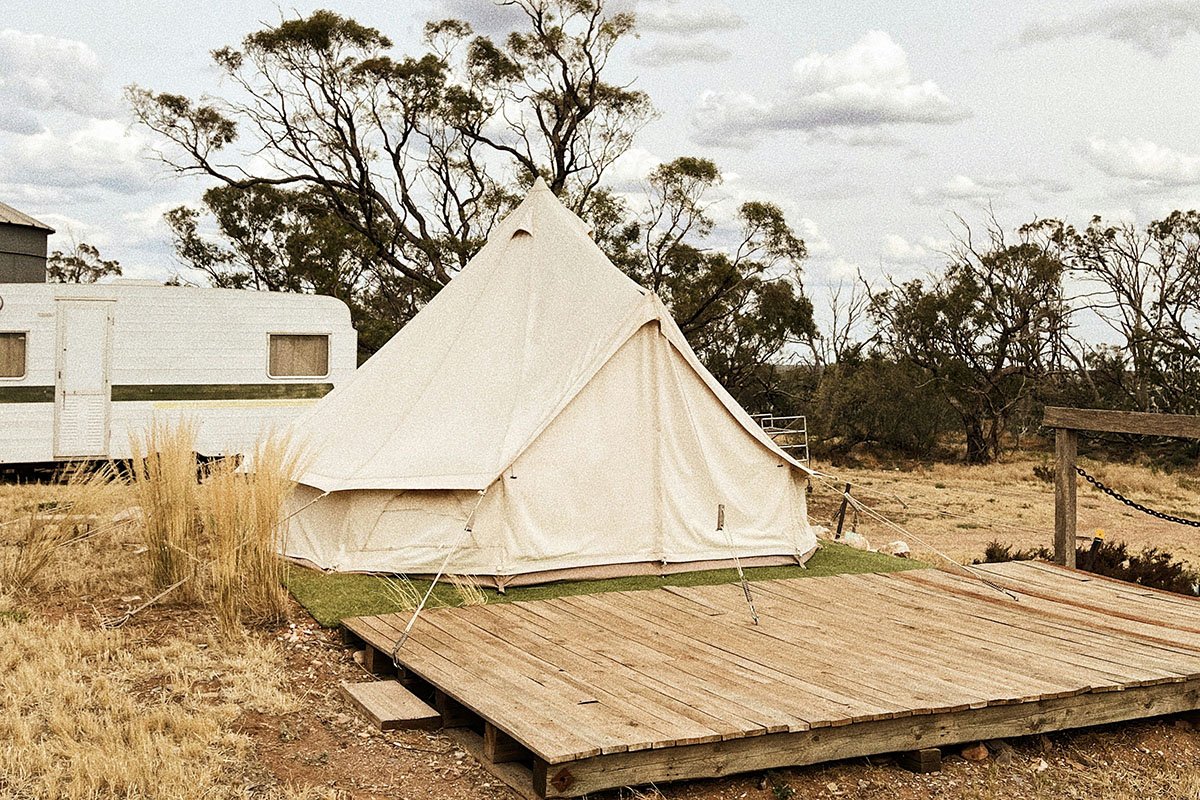
Ready for a list of camping must haves? When it’s time for your next camping trip, pack the following items to ensure you have all the camping gear you need. Please note that your camping packing list will vary slightly depending on the type of camping you’re doing, as well as the season and the location.
- Camping tent with tent stakes (consider bringing extra stakes)
- Tent footprint and rain fly
- Sleeping bags
- Sleeping pads, air mattresses, or camping cots
- Camping blanket(s)
- Shade structure
- Camp stove or portable grill
- Fuel, charcoal, or propane
- Lighter or matches
- Cookware (including pots, pans, and cooking utensils)
- Cooler and food storage bins
- Biodegradable soap and sponge
- Food and snacks
- Water containers, gallon water jugs, and/or water bottles
- Camping table (if no picnic table at your site) and/or portable camp kitchen
- Bottle opener
- Portable coffee maker
- Base, insulation, and outer layers (see How to Layer above)
- Weather-appropriate footwear (see Camping Footwear above)
- Extra socks and underwear
- Hat and sunglasses
- Headlamp and/or flashlight (with extra batteries)
- Power bank and/or solar panels
- Map and compass
- GPS device ( GPS watch , personal locator beacon, smartphone, etc.)
- First-aid kit, including bandages, gauze, antiseptic wipes, tweezers, scissors, safety pins, etc.
- Personal medications
- Pain relievers
- Biodegradable soap
- Toothbrush and toothpaste
- Biodegradable toilet paper and trowel
- Hand sanitizer
- Cell phone (note, you might not have cell service)
- Bug protection/insect repellant
- Other personal items like lotion, deodorant, feminine hygiene products, and others as needed
- Multi-tool or knife
- Fire starters
- Camp chairs
- Backpack or daypack
- Camping fan
- Extra batteries
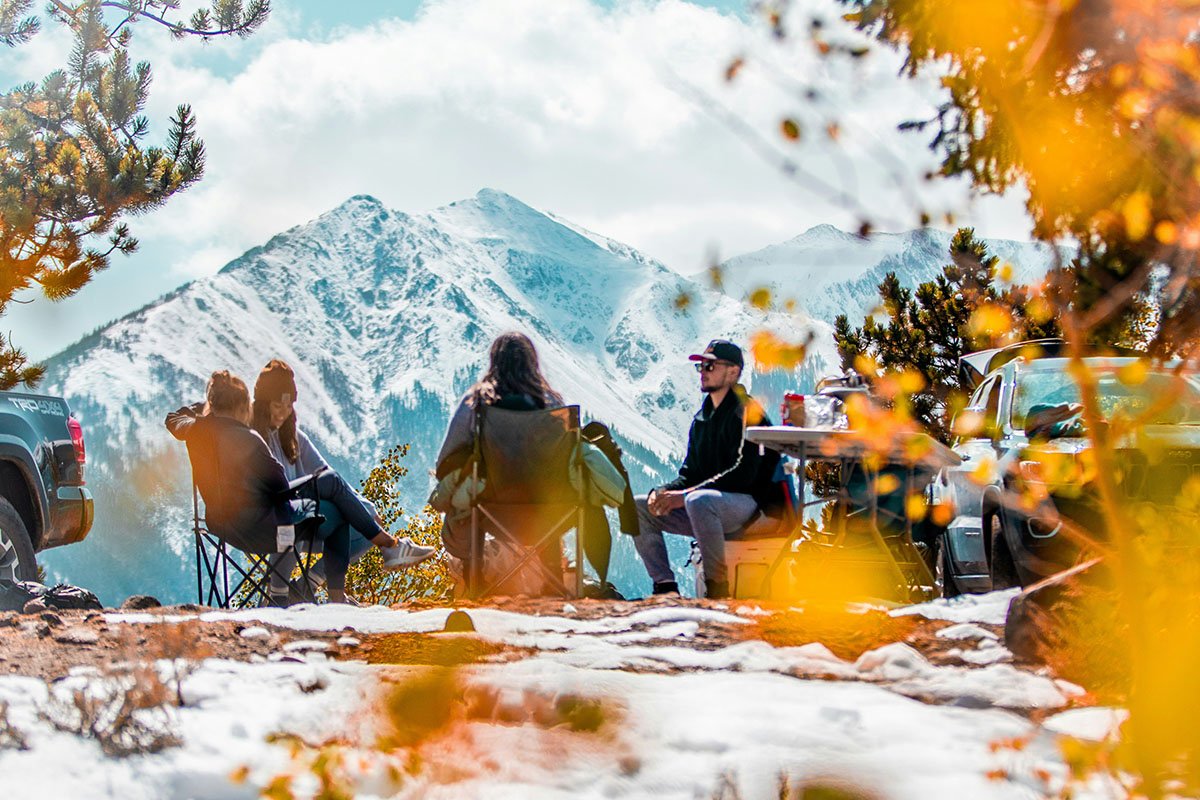
How, you may ask, can you pack everything from graham crackers, a bottle opener, and a sleeping bag to solar panels and a tent in a way that makes sense?
Many people have dedicated storage bins for their camping gear, so these items can often be transported in the same bins that they’re stored in. Clear plastic bins are helpful because you can see what’s inside.
Use coolers and any sort of reusable bags you have on hand to transport your camping food and drinks. Collapsible totes are a great choice for staying organized, and you can collapse them when you’re not using them. A duffel bag does the trick for transporting your camping clothes.
Bring some extra trash bags (or, even better, a large cloth bag) to store dirty clothes in after you wear them, and don’t forget to have a bear-proof container on hand to store your camping food so wildlife can’t get to it.
Small clear plastic bins are also helpful for storing things like cooking utensils, serve ware, and first-aid items.
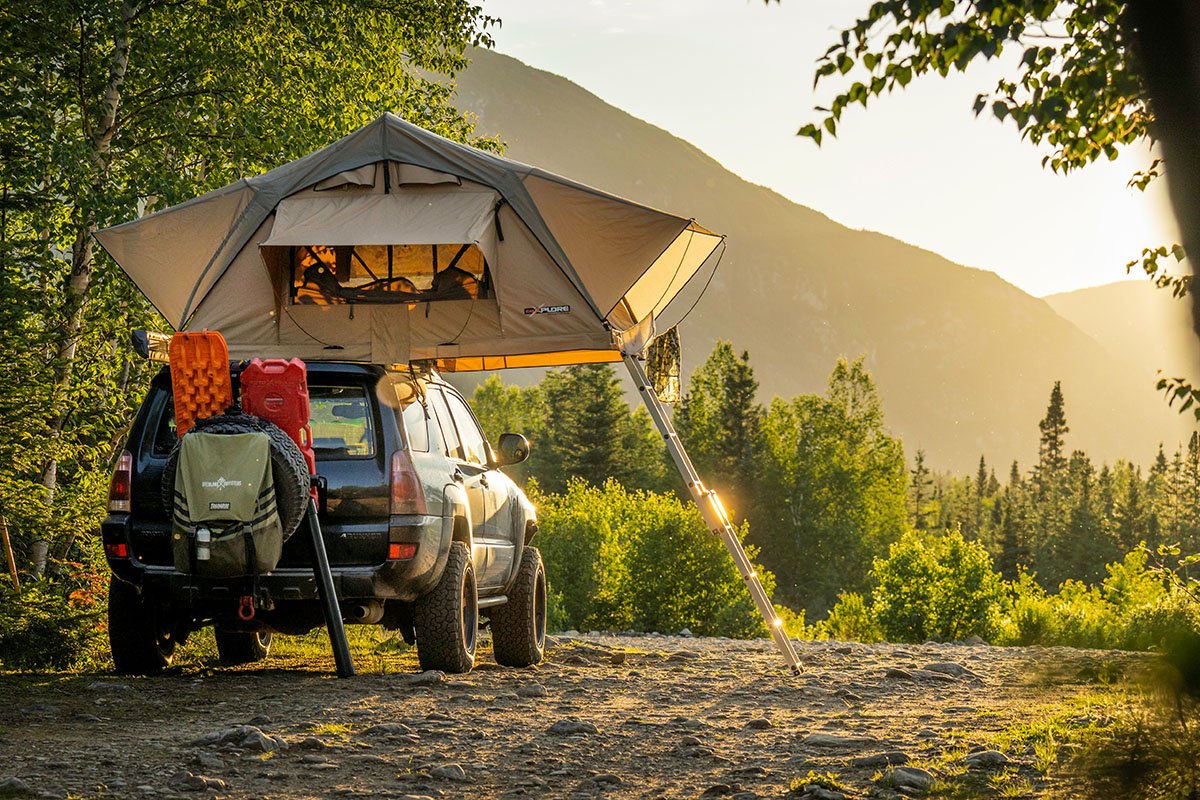
Potential hazards while camping are similar to potential hazards while hiking ( see our guide to day hiking here ) and include slips and falls, getting lost, wildlife encounters, and extreme weather.
Be diligent about where you walk, add offline navigation tools to your list of camping must-haves (since you might not have service at your campsite), carry bear spray, always watch for wildlife, and don’t forget to check the weather forecast before you start a camping trip.
Campsites have rules to not only keep people safe but also to make sure camp neighbors are being courteous to each other. Rules may include campsite-wide quiet hours, fire restrictions, and rules about where to park and not to park vehicles.
Leave No Trace Principles
In general, when outdoors, you should also follow the seven Leave No Trace principles , which include:
- Plan ahead and prepare
- Travel and camp on durable surfaces
- Dispose of waste properly
- Leave what you find
- Minimize campfire impacts
- Respect wildlife
- Be considerate of other visitors
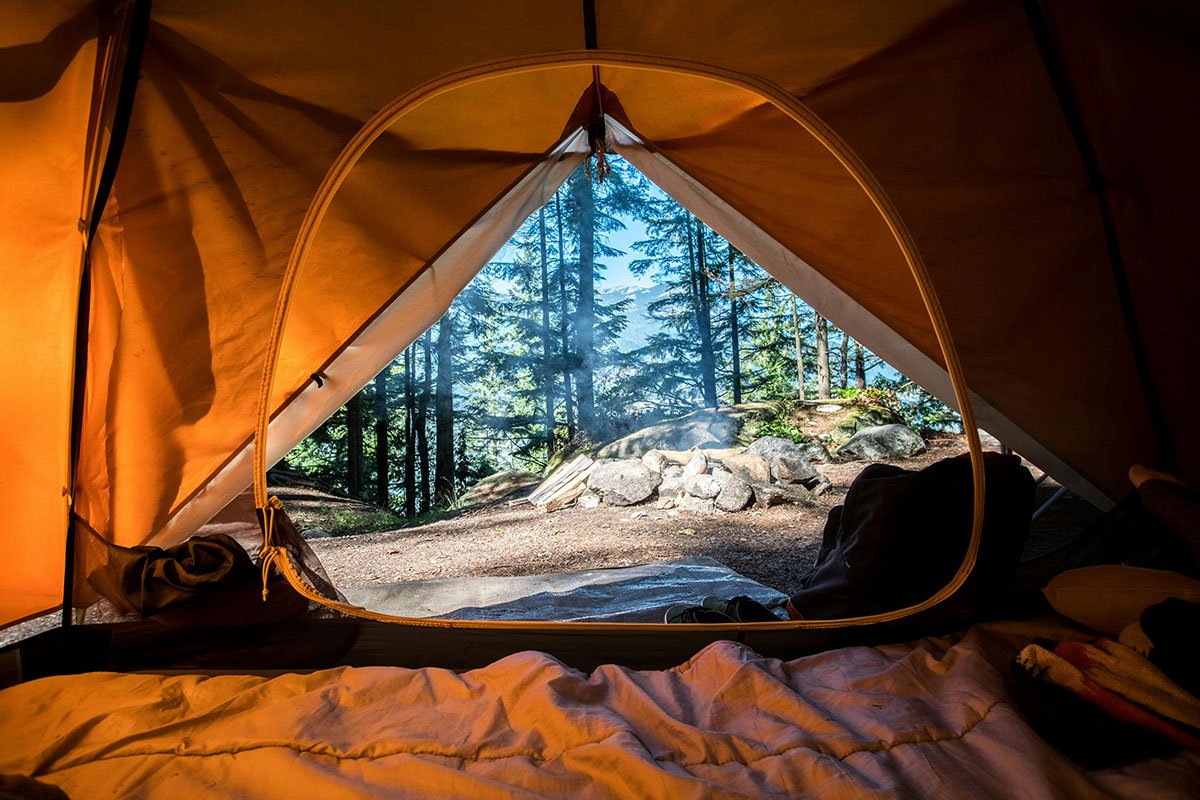
The ultimate camping checklist may not exist, simply because there are so many different types of camping and so many different types of campers, and everyone’s needs are going to vary sightly.
However, now that you’re armed with information about how to plan a camping trip, know all about the camping basics, and have a camping checklist of gear and other essentials, you’re ready to start prepping for your first (or next) trip.
No matter how much you prepare, stuff will come up. If you have the knowledge and the essential items, you can be creative when challenges arise while camping. And sometimes, the unexpected makes for a particularly memorable camping experience.
As you enjoy one of the most popular outdoor recreation activities around, please remember to recreate responsibly, leave no trace, and preserve nature for future generations of campers.
Also check out our top tips to make camping more comfortable .
Related Tags:
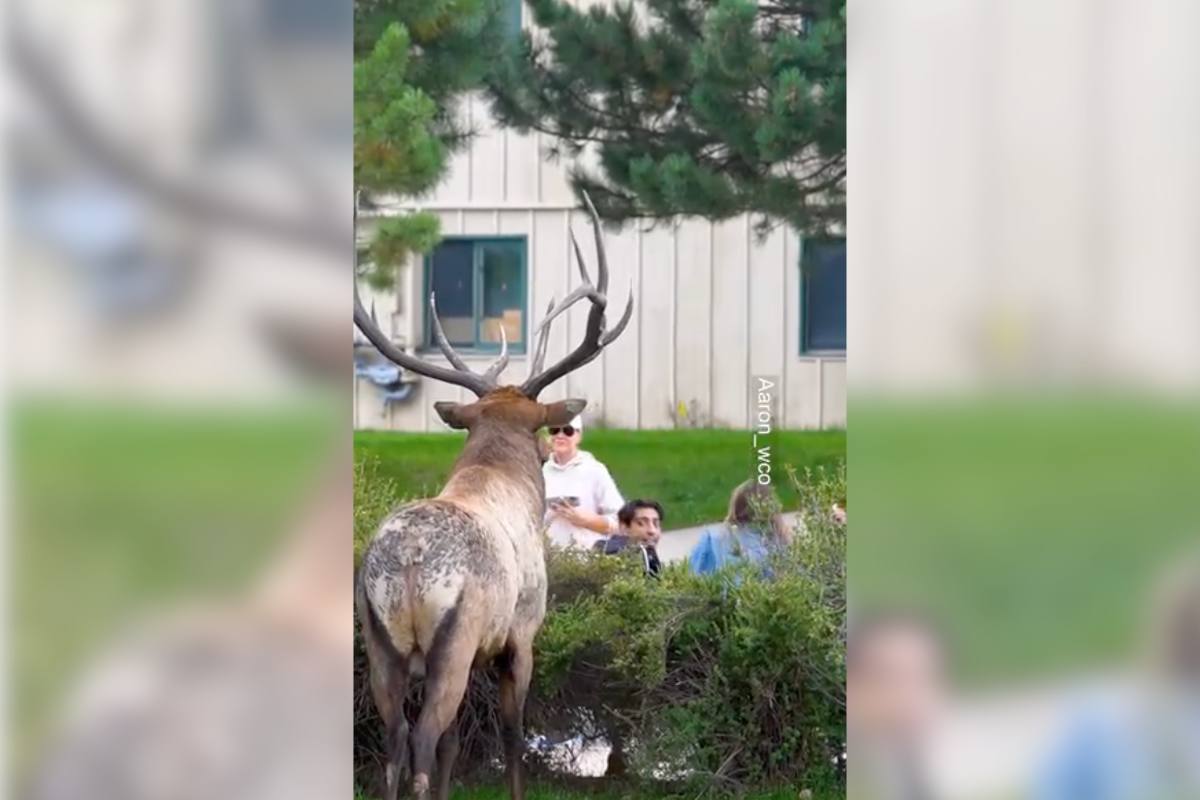
Bull Elk Photobombs Picture When People Get Too Close (Video)

Chilling Video: Man Handles Deadly Snake Hours Before It Bit Him
When it comes to bins, use wood instead of plastic. You never know when you might need the fuel.
Camping security…
Pingback: 10 Creative Uses for a Cable Key Ring You Never Thought Of
Leave a Comment Cancel Reply
Your email address will not be published. Required fields are marked *
Save my name, email, and website in this browser for the next time I comment.
Register for newsletter (optional)
More Like This

Understanding Animal Behavior While Camping Could Save Your Life

4 Signs of Wildlife: How To Tell if an Animal Is Nearby
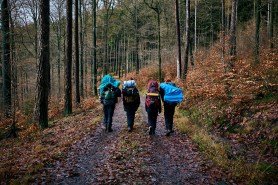
Our Top Picks for the Best Bear Canister
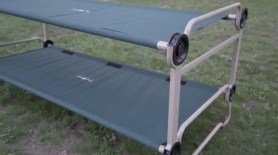
Disc-O-Bed Review
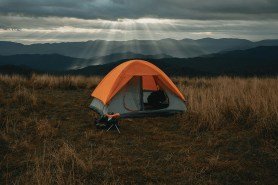

How to Choose the Best Campsite for Your Next Camping Adventure

I Survived Bear Grylls, Episode 8 Recap: Do They Bite?
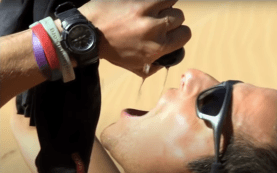
Bear Grylls Says Drinking Urine Is As Gross As It Sounds
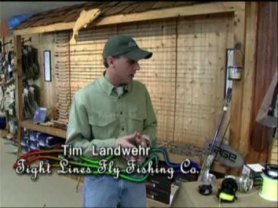
Beginner Fly-Fishing Set-Up Considerations
More stories.

21 Camping Essentials: WHAT You Should Take & WHY
Home / Prepare / Preparedness Checklists
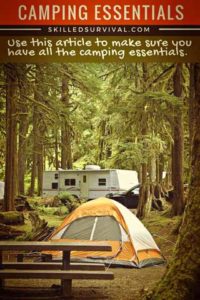
OK, I’ll admit it…
I forgot to pack our sleeping bags for our weekend camping trip.
Yeah. Not fun!
But THAT “bone-headed” mistake led me to put together the following list.
That way, I’ll never forget any essentials that make camping so enjoyable!
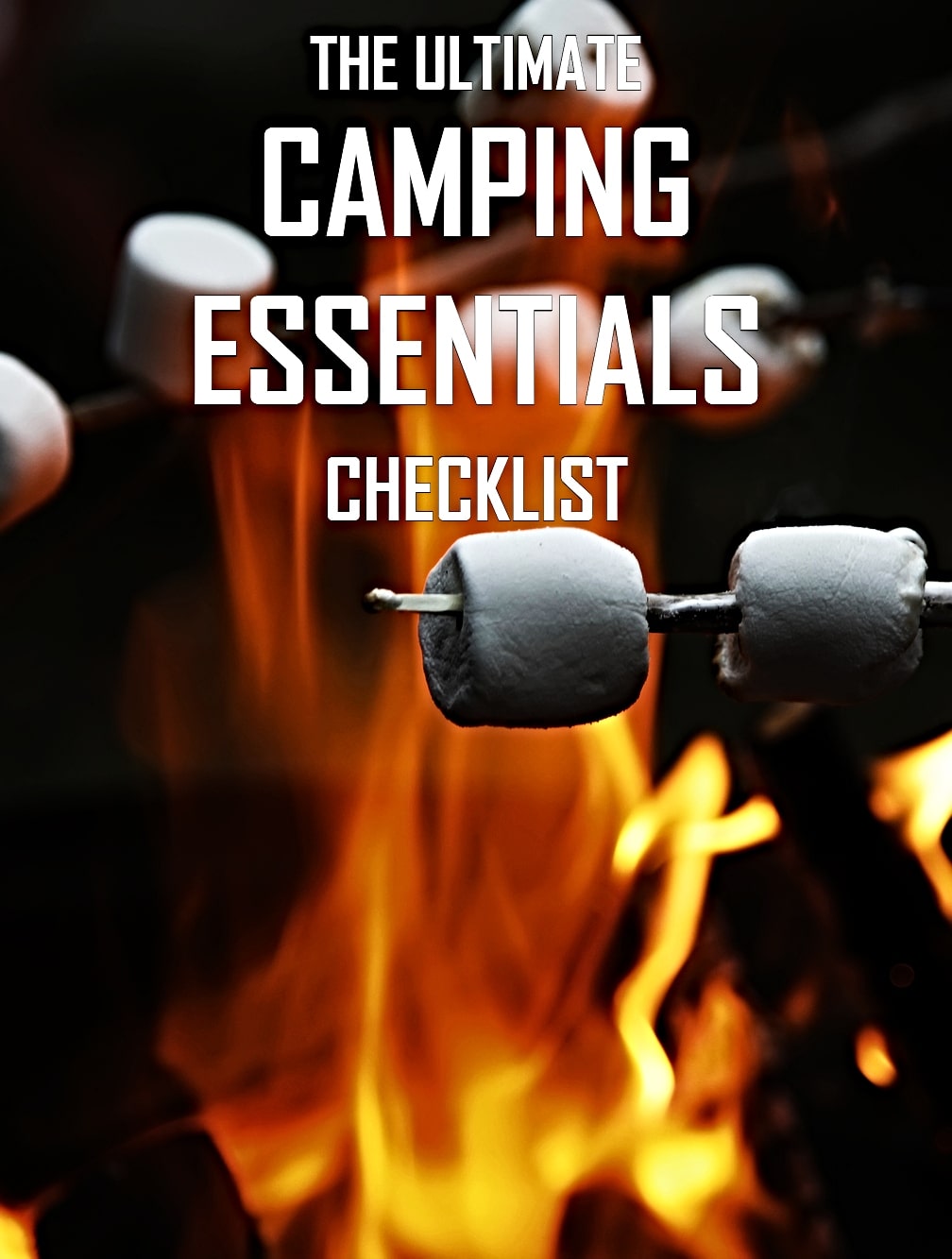
Want a free camping essentials checklist?
1. shelter ( tent/rv ).
But unless your shelter is your vehicle ( like an RV or van ), you’ll want to triple-check you packed that tent.
Now, if you don’t own a tent, you have a lot of choices.
For example:

Unless you enjoy sleeping under the stars.
If you’re only planning a single camping trip, you might get away with borrowing one.
But if you want to make this a regular hobby, invest in a high-quality one.
Or you could sleep in a hammock if the weather’s nice.
Put a sleeping bag in the hammock .
Or you could invest in a hammock tent .
But what happens if you forget your tent, hammock, or sleeping bag?
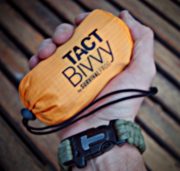
In the name of preparedness, you should always have a backup emergency shelter, right?
I’m talking about an emergency survival blanket or bivy sack .
The Tact Bivvy is a life-saving survival device and an excellent backup.
Toss one in your glove box , and you’ll never be without protection from the elements – whether it’s camping or a roadside emergency.
Check out why I like The Tact Bivvy so much:
↓ Skilled Survival’s TACT Bivvy Review

- Will your campsite have a water pump?
- Or is it near a lake or creek?
- What if your campground doesn’t have any drinkable water nearby?
You need to know this before you go .
Your water plan chances based upon the answers.
You must plan differently for a site with potable water vs. one in the desert.
Either way, you’ll want a large water container to haul and leave it at your campsite for daily use.
You’ll need it for tasks such as:
- And extinguishing your campfire
These containers are perfect for camping.
They fit into any sized trunk, are BPA free, and very convenient.
Each one contains 3.5 gallons of water, they are stackable, have a handle for easy carrying, and are virtually indestructible .
↓ 5 WaterBrick Uses You Haven’t Considered
And take a few water bottles, one for each camper, so you don’t have to drink directly from the container!
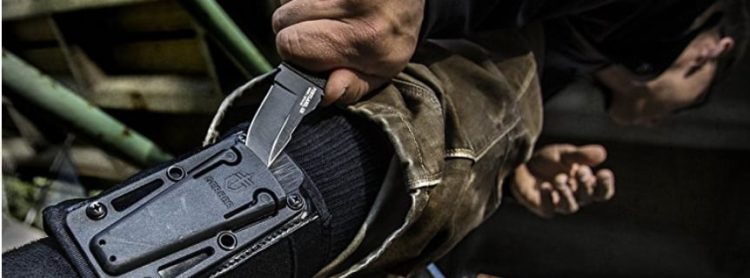
3. High-Quality Survival Knife
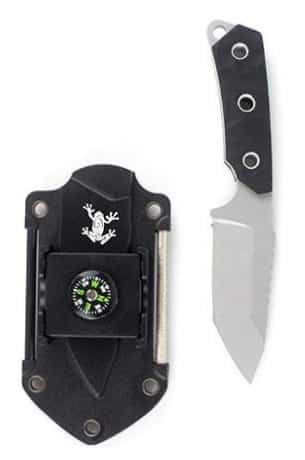
You may need one to cut some rope, fillet a fish, or whittle a walking stick.
And a high-quality survival knife is ideal for these tasks.
Invest in one that can pierce, slice, and do some chopping as well.
I always keep my survival knife on me, just in case.
As a survivalist, I recommend a trusty knife anytime you head into the wilderness.
If you want one that can take a beating but is still lightweight and compact, get a neck knife ( this one is my favorite ).
Pocket knives work well for everyday tasks as well.
But they can’t handle anything more demanding.
↓ Survival Neck Knife Review – Can Your Knife Do This?
4. Medical Supplies
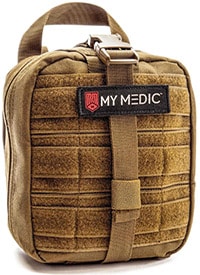
But that also means emergency items like gauze, bandages, and painkillers are not as close as the corner store.
That’s why you must take some emergency medical supplies with you.
You can build your own DIY first aid kit or invest in one .
Either way, NEVER hit the road without this critical essential .
Here’s a review of the one I take camping:
↓ My Medic MyFAK – Walkthrough & Review
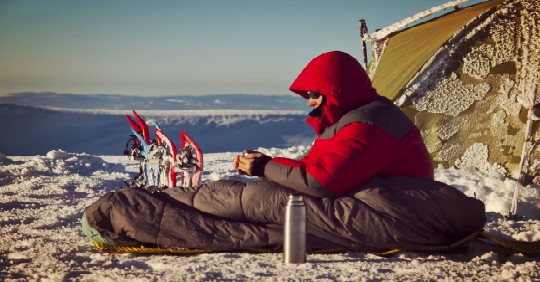
5. Sleeping Bag or Blankets

I even take mine during hot summer camping trips.
Why? Because there’s always a chance it gets chilly in the middle of the night.
And if you’re unprepared, you’ll wake up freezing.
Frantically scrambling around for extra layers to end the uncontrollable shivering – not fun.
So get a nice warm one .
Worst case, if it’s overkill, you can always sleep on top of it.
Then if you get cold, quickly slip back inside.
I recommend investing in a warm one instead of suffering the frustrations of a cheap one.
6. Warm Rainproof Clothes
Heavy coats are warm.
But they can be uncomfortable on a rainy camping trip.
It’s better to pack lightweight, rainproof, waterproof, breathable clothes as a top layer.
That way, you’ll avoid overheating in warm, humid weather.
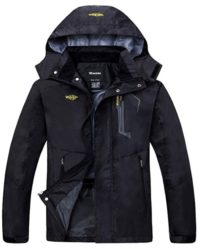
It’s all about properly layering for any weather conditions.
Look for design details like:
- Armpit zips
- Mesh pockets
- And cinched hoods
These features help protect you from the elements.
Nothing is worse than being soaked all weekend.
So invest in gear that keeps you both dry and comfortable.
7. Insect Repellent
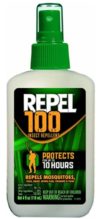
I’ve tried a few alternative repellents, but for me, deet is the only thing that works .
Yes, deet is a nasty chemical , so use it sparingly.
But it keeps those pesky skeeters away.
It’s one of the more important camping necessities on this packing list!
Forget it, and you’ll pay the price.
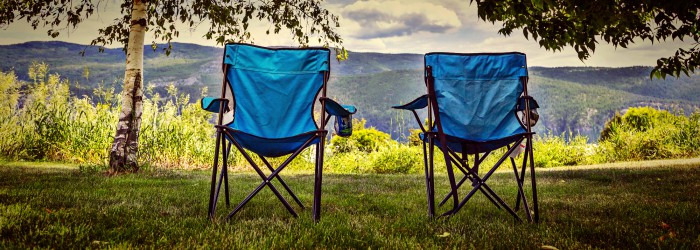
8. Camping Chairs

I’ve done it many times on minimalist camping and backpacking trips.
Why? Because chairs are too heavy and bulky for such trips.
But NOT for car camping.
If you’re taking a vehicle to get there, make some trunk space for a good camping chair or two .
Your butt will thank you!
9. Lots Of Firewood
Now…why isn’t firewood higher up on this basic camping gear list.
Isn’t firewood a camping staple?
Yes, it is, but you may not want to pack it.
It depends on your situation.
Experts recommend you buy your firewood locally after you get to your campsite.
And in usually it’s illegal to transport firewood across state lines…
And if it’s been a dry summer, you might have a fire bane to contend with.
The bottom line is:
But do your research before you leave and make a plan.
Because camping without a campfire just isn’t the same.
10. Air-Tight Containers
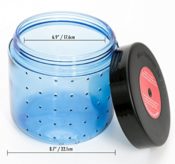
But remember:
You’ll be cooking and eating with wild animals around…
Which means you need to respect them.
Never leave your camp food out; instead, put it in air-tight containers – like this bearproof food vault .
These containers ensure you don’t end up with raccoons and bears sniffing their way into your campsite.
Airtight containers trap food smells AND protect them from hungry animals.
11. Sunscreen

When camping I spend nearly all my time in the great outdoors .
I don’t understand ‘campers’ who hide out in their tent or RV all day.
My favorite day is fishing in the morning and hiking in the afternoon.
And being outdoors all day is a recipe for a sunburn.
And yes, YOU CAN still get burn on cloudy days .
So bring some SPF protection .
Get the waterproof kind if you’ll be out on the lake all day and re-apply often.
12. High-Performance Cooler

It also combats digestive illnesses like food poisoning.
So it’s absolutely essential and worth every penny!
A high-performance cooler will keep your foods fresh and cold for at least three days.
Plus, a good cooler keeps your campfire beverages cold.
I like the coolers where you can grab what you need ( beer ) without having to sort through the food items in the dark.
I own a large, sturdy cooler that doubles as an extra seat for your friend who forgot his camping chair!
Oh, and I hope it’s obvious – if you’re taking a cooler, don’t forget the ice…
↓ Yeti Hopper Soft Cooler Review
13. Sleeping Pad or Air Mattress
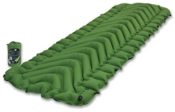
Now, imagine sleeping on the hard, cold, uneven ground!
Set yourself up for success by investing in a sleeping pad or air mattress .
It doesn’t have to be fancy.
But you want to enjoy your trip instead of ruining your back.
Also, take a comfortable camp pillow as well.
I can’t sleep well without proper neck support.
And quality sleep is a must to enjoy your camping trip.
14. Survival Tools / Gear
No one wants to end up in a wilderness survival situation.
But every year, thousands of people do…
And if they had survival gear with them, it would keep them alive.
So instead of listing each of these tools individually, I’m going to list the ones you should take – just in case.
- Survival Whistle
- Survival Multitool
- Survival Shovel
- Signal Rescue Mirror
Check out our ultimate survival gear list to ensure you’re always ready.
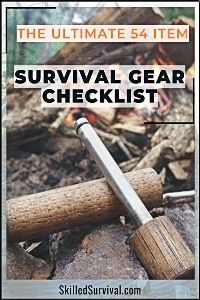
Want a free 54 item survival gear checklist?
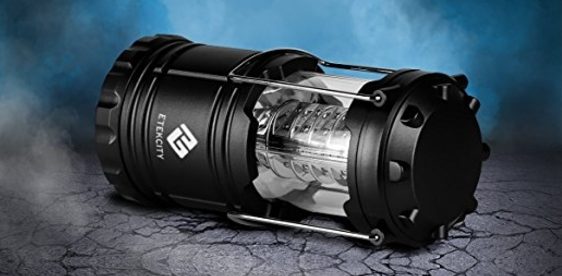
15. Campsite Lantern
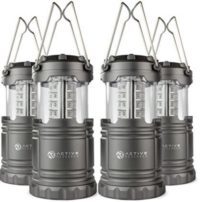
That way, your group can:
- Set up evening snacks
- Or light the trail to the restroom
If you forget to pack a good camping lantern, trust me, you’ll notice.
The good news is:
You can get super bright ones at a low cost nowadays!
16. Survival Hatchet or Axe

It splits a ton of firewood fast.
Good luck trying to do that with a knife.
You can also chop down a few small trees (if allowed at your campsite ).
So get a good heavy-duty axe and add it to your camping list.
17. Toiletries
Some campgrounds include restrooms with flush toilets and TP.
Most do not.
Having a few rolls of toilet paper packed is ALWAYS a good idea.
You never know and being without is less than ideal.
In fact, it’s pretty crappy.
(I know…bad pun but I couldn’t resist)
And if you’re heading to a remote campground – take a portable camping toilet .
Also, if you like clean teeth and showers, etc., pack those essentials as well.
Personal hygiene items like:
- Toothbrushes
18. Fire Starting Tools
I’m a fan of survival skills like starting a fire with sticks .
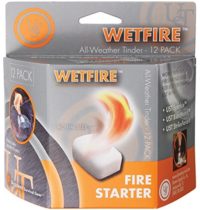
But there’s also nothing as frustrating as spending hours trying to get your campfire lit.
And your family and friends don’t care how you get it going…
So long as it doesn’t take all night.
Add these WetFire Tinder Cubs to get those marshmallows roasting ASAP.
And don’t for get to pack a survival lighter .
19. Warm Thick Socks
Socks are one of the most underrated essentials on this camping list.
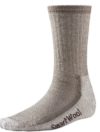
Don’t pack thin ankle socks, which will cause blisters.
Thick long socks will protect your ankles and feet from ticks and mosquitoes.
Also, don’t wear the same socks over and over..
Bring a fresh pair for every day.
There’s nothing that feels better than putting on a pair of fresh socks that fit.
Not sure which brand of camping socks to go with?
I wear Smartwool’s .
20. Cooking Utensils
It’s hard to enjoy a great camping meal without a plate or fork.
So pack some cups, bowls, plates, forks, knives, and spoons.
There’s no real way to improvise these items.
And don’t forget some telescoping forks for cooking hot dogs and marshmallows over your campfire.
21. Camping Stove

Why? Because there’s no guarantee you can have a campfire to cook with.
I discovered this the hard way.
We showed up at a campsite with our Dutch oven and a campfire grill grate, only to find out there was a fire ban!
We end up borrowing a fellow camper’s Colman Classic Propane Stove .
Thank goodness for random campsite friends.
Lesson learned:
ALWAYS pack an alternative way to cook your meals!
Side Note #1:
For winter camping, check out getting a tent stove .
Side Note #2:
Will your site have a built-in picnic table? If not, you may want to take a portable camping table .
How About A Few Non-Essentials
Why would I put “nonessentials” on this list of camping essentials?
Well, because some things are really, really nice to have!
So here are a few of my favorite camping nonessentials to wrap things up:
- A pair of campsite sandals
- A few new books ( I highly recommend this book )
- My acoustic guitar
- Some healthy snacks
- Lightweight Folding Camping Table
Dispelling The 5 Most Dangerous Camping Myths…
Myth #1: you can drink water from a stream.
It’s so tempting to dip your canteen into that crystal-clear mountain stream, right?
To take a big delicious swig!
But don’t be fooled by appearances.
You can’t trust that water source.
It might LOOK pure, but there could be nasty bacteria and pathogens lurking in there.
IT may be a one-way ticket to the land of diarrhea.
So, always purify your water before you drink it.
Myth #2: Bears Only Come Out at Night
Bears are just as active during the day, especially if looking for food.
When in bear country, store your food properly.
Use bear-resistant containers, and make noise to alert to your presence.
It’s better to be loud and annoying than to surprise a bear on its turf!
Myth #3: You Don’t Need Sunscreen on Cloudy Days
Ah, an overcast day – seems like the perfect time to skip the sunscreen, right? Wrong!
The sun’s harmful UV rays will penetrate those clouds and fry your skin.
So, always lather up with sunscreen, wear a wide-brimmed hat, and protect yourself from those sneaky sunbeams.
Skin cancer is no joke, folks.
Myth #4: Moss Always Grows on the North Side of Trees
I’m sure you’ve heard that moss always grows on the north side of trees…
Well, not exactly.
While it’s true that moss favors the shadier, more moisture-laden side of trees, it’s not a foolproof compass.
Many factors can influence moss growth, like:
- the tree’s location
- the local climate
- and even the individual tree’s characteristics
So, if you’re lost in the woods, don’t rely solely on moss to find your way.
Use a real compass or a GPS device instead!
Myth #5: You Can Outrun a Charging Bear
Some folks think they can outrun a charging bear. Let me tell you, that’s a recipe for disaster!
Bears are incredibly fast and can sprint at speeds of up to 35 miles per hour.
Us humans, on the other hand, are no match for that kind of speed.
Your best bet when faced with a charging bear is to stand your ground, make yourself look bigger, and make loud noises to intimidate it.
Running away could trigger its predatory instincts, and that’s a situation you want to avoid at all costs.
Final Thoughts
Camping can be an amazing experience.
But ONLY IF you’ve properly prepared.
You see, the key to having a good camping trip vs. a nightmare is all in preparation.
Packing all these camping essentials to keep it fun and relaxing – instead of frustrating.
- Every campsite and every camp trip is unique.
- Research the campground before you go.
- Rules and regulations differ for dispersed camping vs. national parks.
- You need to know what amenities are in place such as washrooms, electricity, and more.
So use this camping checklist to know for a FACT you’ve got everything!
Next, learn these 21 amazing camping hacks to improve your camping life.
Why Trust Skilled Survival...
Go here now to review a full breakdown of:
Who We Are Our Credentials Our Mission & Product Recommendations...
Here are a few highlights of our teams credentials & certifications:
- Certified Member of a Mountain Search & Rescue Organization
- Plant Emergency & Safety Leader for a Major Food Manufacturer
- Member of the 10TH Mountain Division Hut Association
- Certifications: Avalanche 1, WFR, CPR
- Official Gear Tester for Numerous Outdoor Gear Companies
- Countless Multiday Backpacking trips into Remote Wilderness
- Bachelor's Degree In Mechanical Engineering
- Bachelor's Degree In Civil Engineering
- Bachelor's Degree In Biomedical Engineering
"It takes 20 years to build a reputation and five minutes to ruin it." - Warren Buffett
We're fully aware that trust is NOT something you GET but is EARNED.
And we'll continue to earn YOUR trust through our forthright and honest approach with each new Blog Post, Guide & Product we create...
Prepare, Adapt & Overcome,

Cofounder Of Skilledsurvival.com & TheResilientLife.com Born & Raised On A Rural Farm In The Midwest Mechanical Engineering Grad From A Major University Engineer With A Major Food Manufacturing Company 10+ Years Researching, Writing, & Teaching Preparedness Mission: Help Folks Stop Living A Life Fragile To The Future
P.s. do you live in a 'danger zone' county .
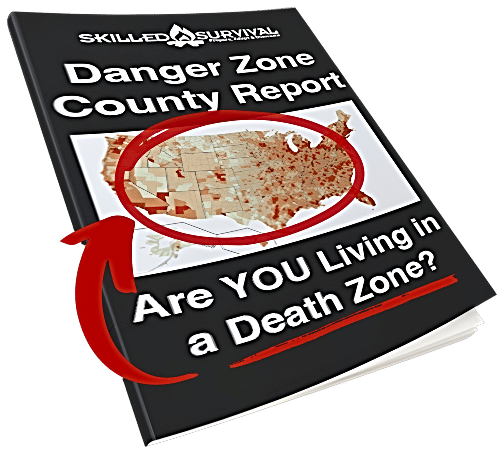
Find out now using my Danger Zone County List & Special Report it’s absolutely FREE.
In minutes you’ll know EXACTLY where you stand and if you should be worried or not..

Recommended Reading
Minimalist camping: how to avoid the most costly mistakes.
Minimalist camping is a great way to practice wilderness survival. Here's a short list of the limited items to take on your next camping trip
22 Creative Ways On How To Make Money With Land
The best 22 ways I know of on how to make money with land. Pick and choose the ones that will work best for you property and situation.
Best Cold Weather Tents To Survive Below Freezing Temps
Not all tents are created equal, and most are NOT good enough for winter camping. Here are the best cold weather tents for sale today.
Best Canvas Tents For Epic Camping, Hunting & Survival
The best canvas tents are durable, waterproof, mold resistant and 100% worth owning! In this guide, we review the best ones on the market to make your search easy.
Best Portable Solar Chargers: Power For Off Grid Adventures
The best portable solar chargers are innovative, durable, waterproof and 100% worth owning! In this guide, we review the best ones to make your search easy.
5 Best Portable Toilets For Travel Emergencies
Poop emergencies happen to everyone, right? So why not pack some peace of mind knowing you've got a portable camping toilet at your disposal.
- WORK WITH US
Photo Presets
The Mandagies
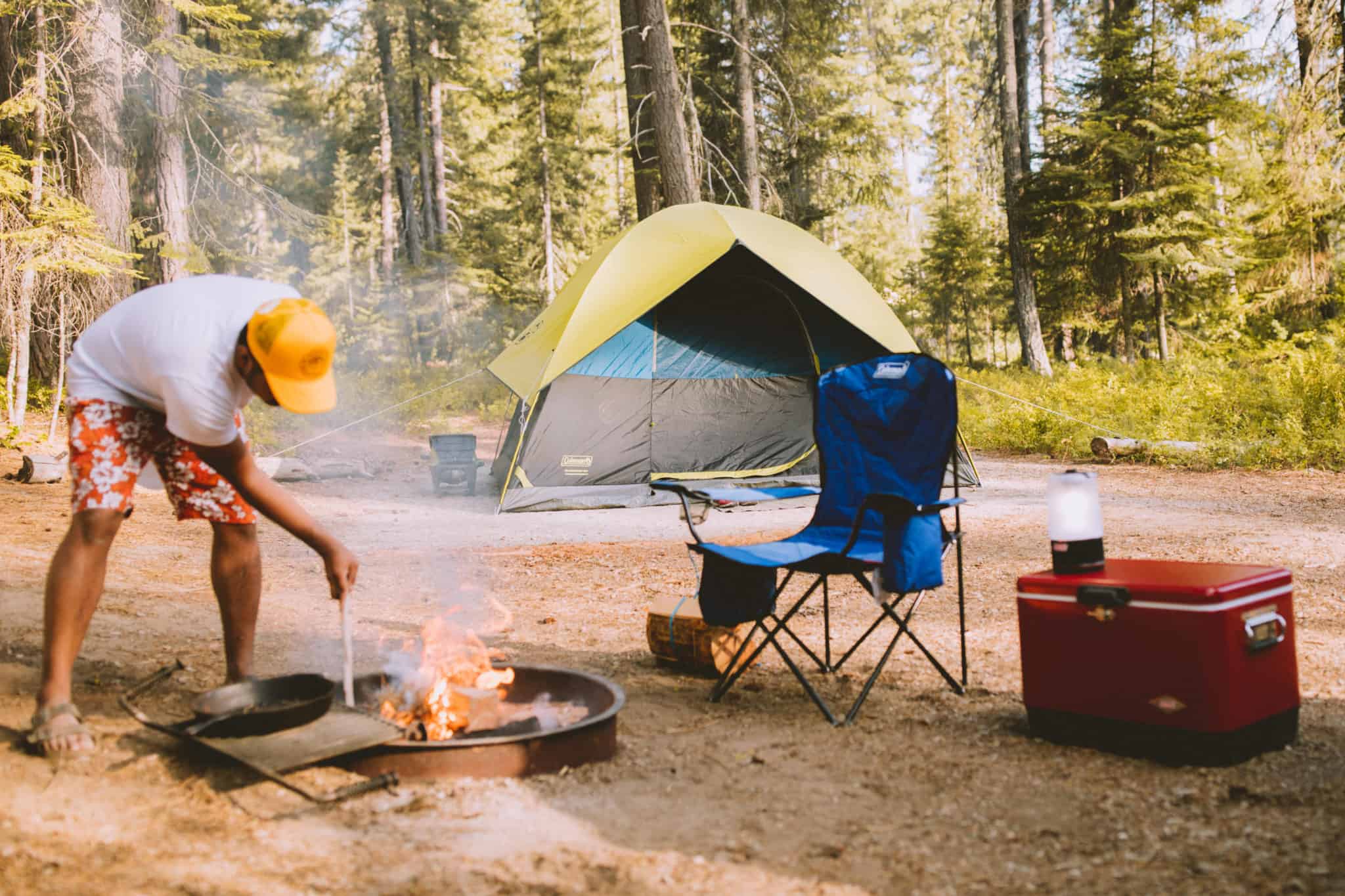
The Ultimate Camping Packing List (+ Free Camping Checklist!)
Post Summary: The Ultimate Camping Checklist (+ free download for easy packing!) Updated May 2023
So, you’ve decided to plan a camping trip in the Pacific Northwest . Great choice!
It’s such a fun way to enjoy the summer season. Roaring campfires, late night chats, quiet mornings, the list goes on!
Berty and I are no strangers to camping. Living in the Pacific Northwest, we plan camping trips practically every season! We are always discovering new and unique ways to pack our camping must haves, and we are stoked to share our knowledge with you!
Keep scrolling for our all-season camping packing list, and scroll down even further for seasonal additions, and a free camping checklist!
Happy packing!
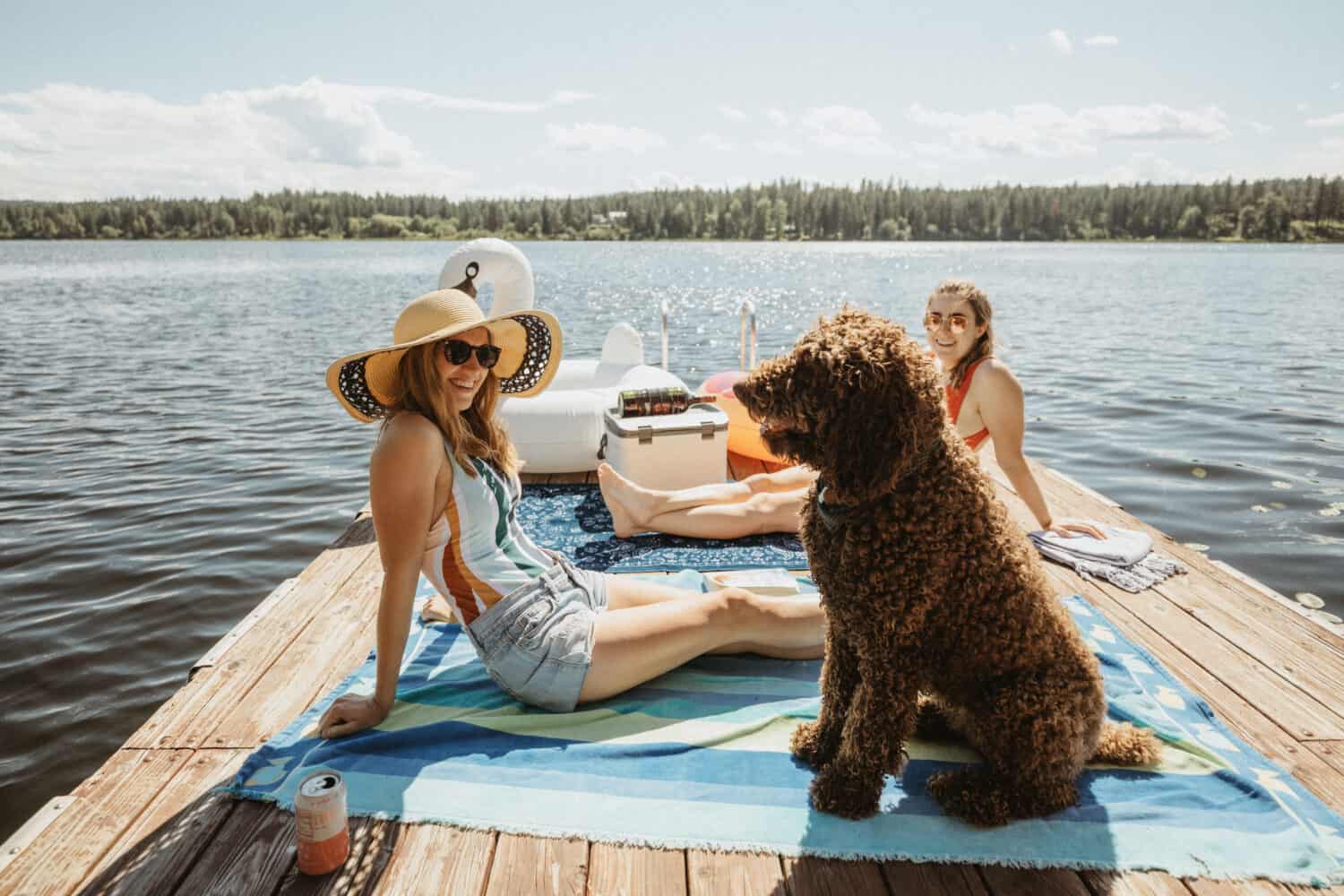
The Complete Camping Packing List For All Seasons
We know a lot about camping, and packing according to the variety of weather one might expect. We wrote this post to help you plan your own quick camping trip, without the hassle of packing your entire house in the car.
Read on for the perfect list for the first-time camper , or anyone who wants a simple camping checklist to help them get outside and do what they love best – being outside!
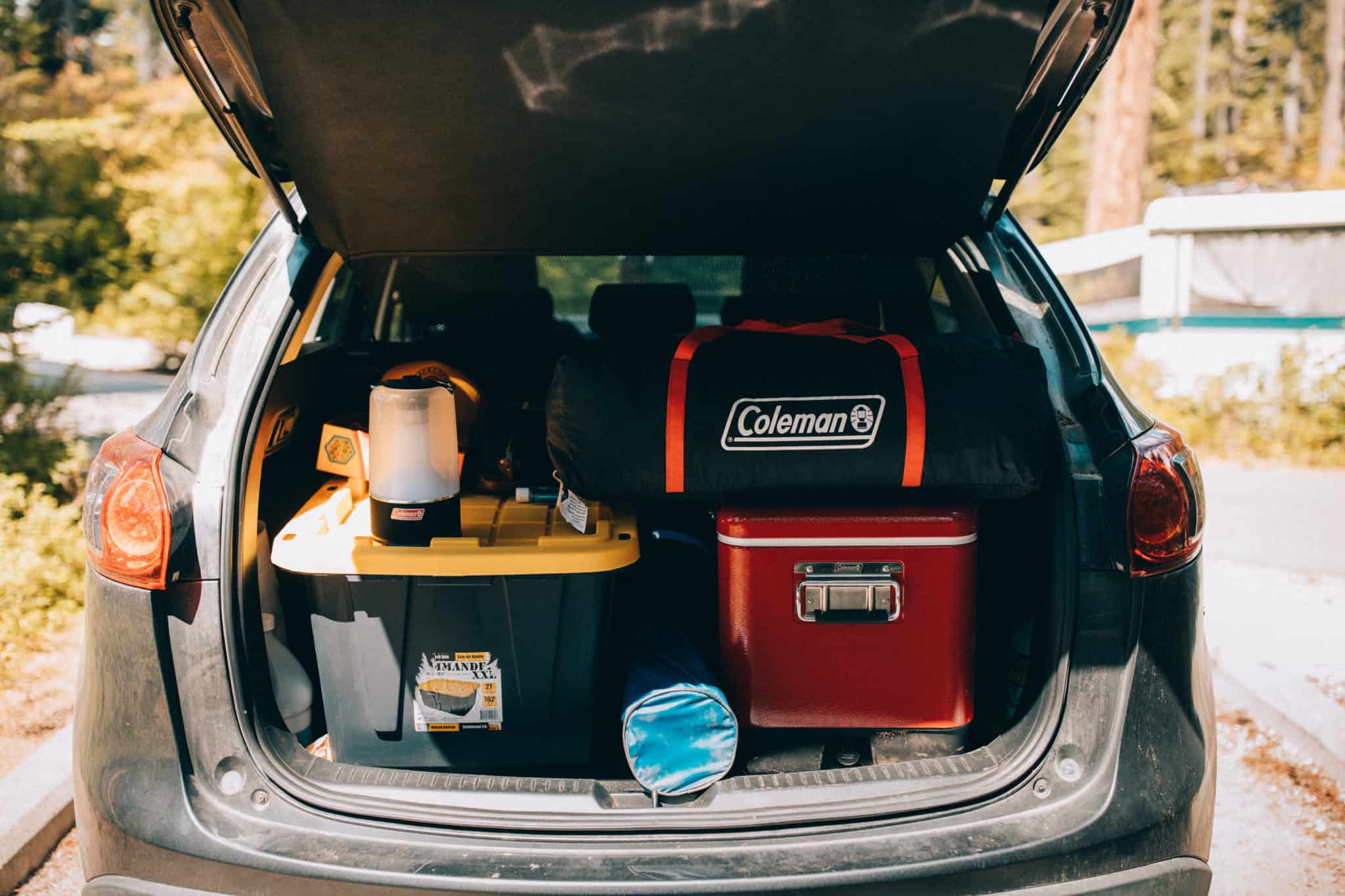
Camping Packing List Basics
No matter what time of year you plan your camping trip, there are some things that will just be essential in any season!
1. A Campsite
First things first, you’ll want to know where you’ll be camping! Some of our favorite PNW campgrounds include Wright’s For Camping on the Oregon Coast , Camp Casey Campground on Whidbey Island, and Pine Flats Campground , which has epic hot springs nearby! We also love these Oregon campgrounds .
One way we like to search for camping spots is on an app called The Dyrt . It’s a website AND an app, which makes it really convenient to find locations on the go too. We have a Dyrt Pro membership , which unlocks even more features like offline maps, BLM land, and road trip planning to find the best camping spots along our route. If you want to try it too, try our code MANDAGIES for a 30-day free trial!
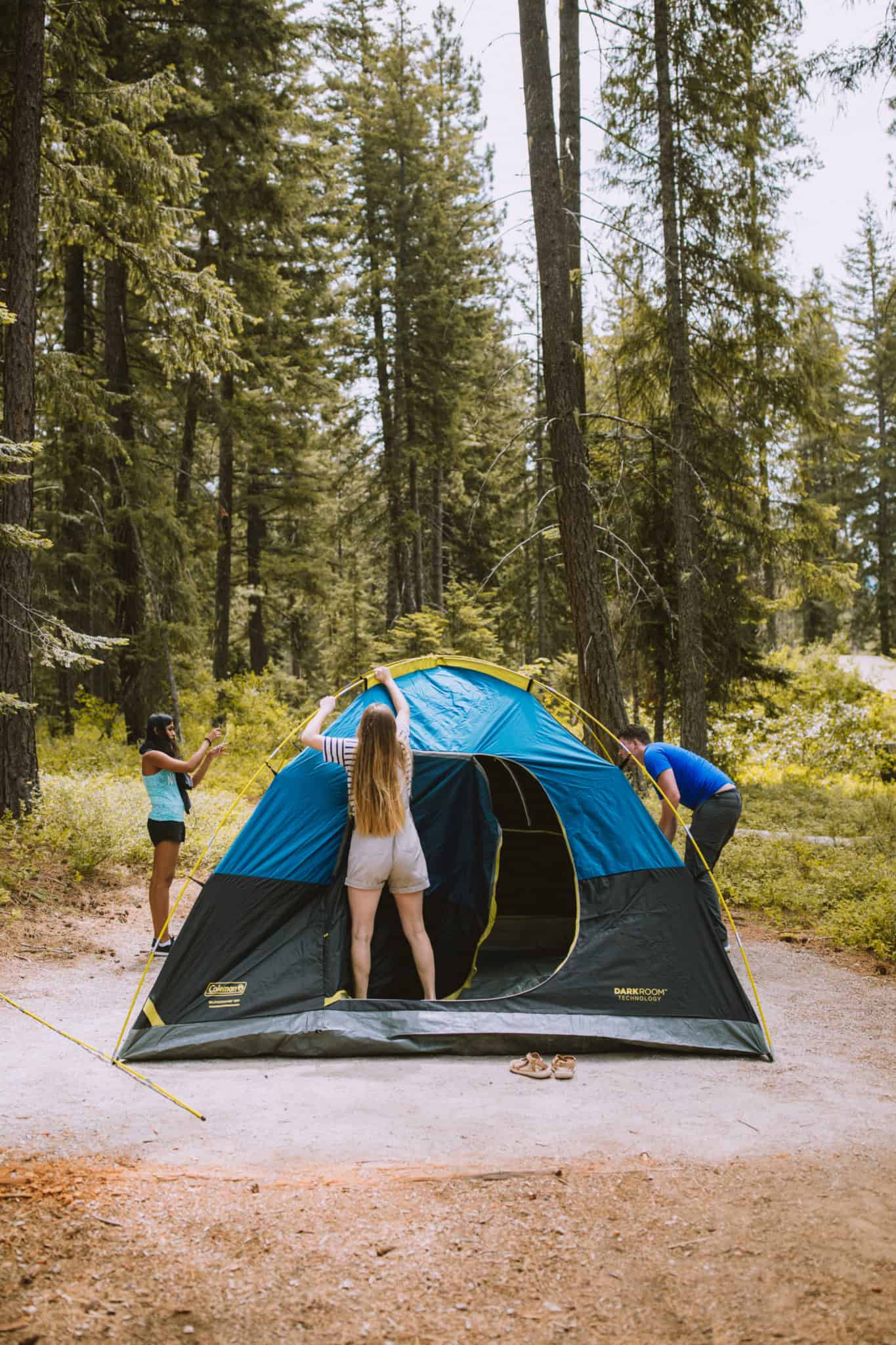
Shelter is always a must-have on your camping checklist. You could technically sleep in your car , but for a totally classic camping experience, we suggest investing in a good tent. A dependable option is the REI Co-Op Half Dome SL 2+ ($329).
If you like sleeping in pitch black or want something more affordable, the Coleman Skydome Darkroom 6-Person Tent ($200) works great!
Need a small tent option? Try the Big Agnes Tiger Wall UL2 , which is part of our backpacking packing list . It’s an extremely lightweight tent, but also pretty snug for two people! It’s a perfect option for multi-day backpacking trips and a simple and effective addition to any camping checklist!
Camping Tip: If it’s your first time with a new tent, try throwing a backyard campout so that you can practice setting it up before your big trip!
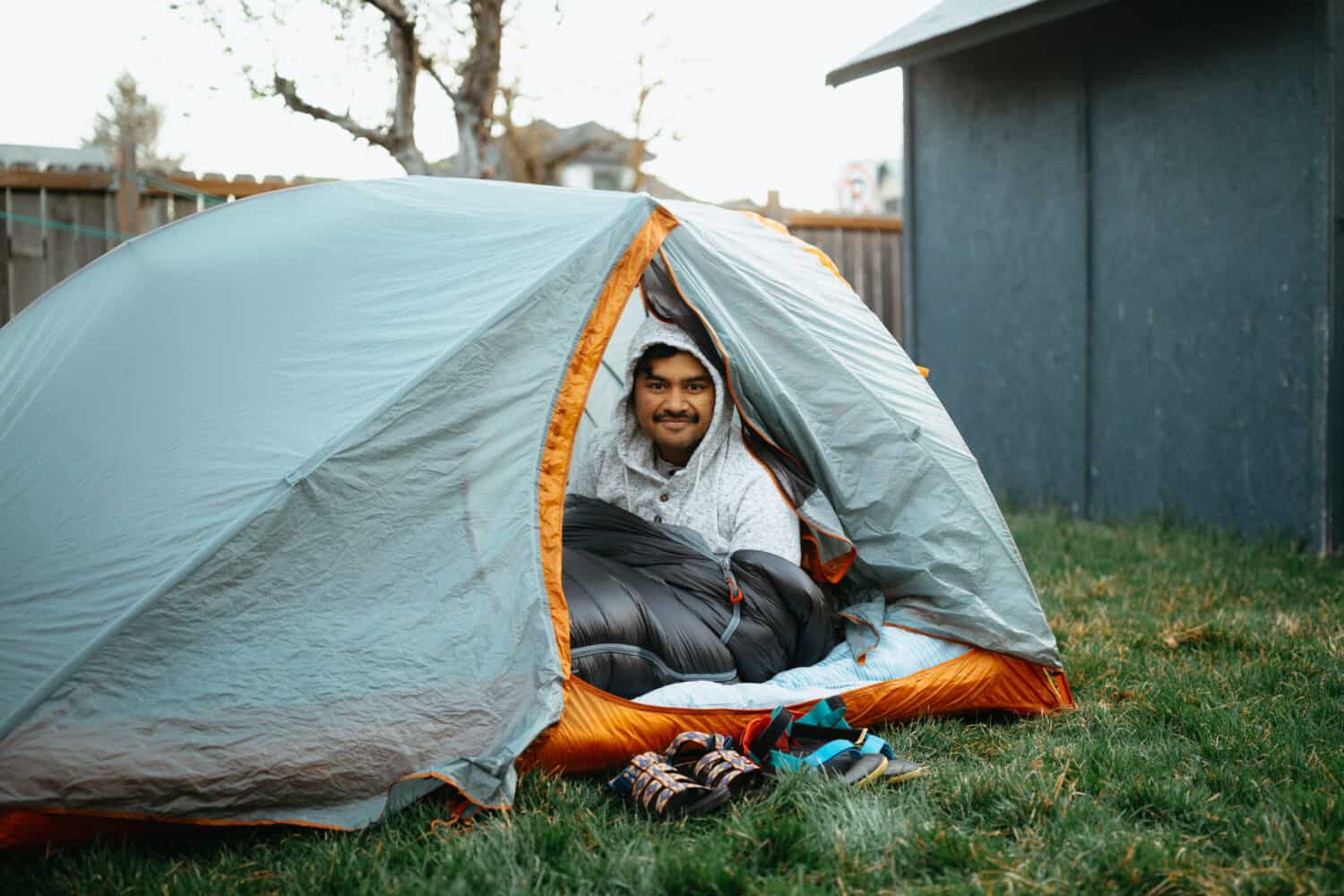
3. Sleeping Bags
Don’t forget to put a sleeping bag on your camping gear list! If you think you’ll get cold in the evenings or your sleeping bag doesn’t have a low enough temperature rating for chilly nights, you could bring a blanket (we love the Rumpl puffy blankets ).
There’s a little bit of science to finding the perfect sleeping bag . A 0-degree bag is ideal for winter trips, while these ones meant for warmer climates will keep you cozy AND cool in hotter conditions.
Camping Hack: Need to save some space? Ditch the bulky pillows and use your sleeping bag sack as one instead! Stuff it full of clothing and wrap it in a sweatshirt for a multi-purpose way to use your gear. (And you’ll finally have a reliable way to keep track of that darn bag!)
Read the reviews of our favorite sleeping bags for backpacking and camping .
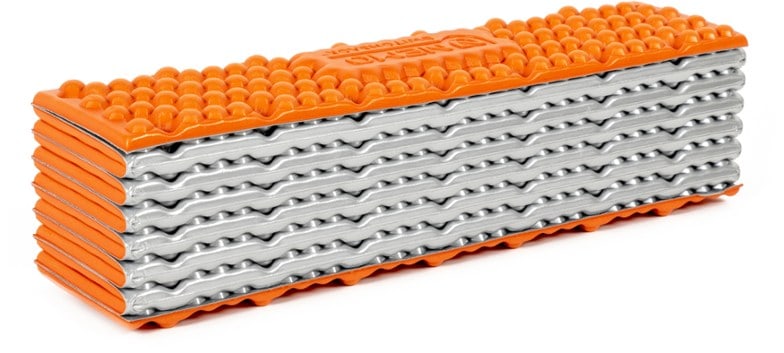
4. Sleeping Pad
Unless you want to be sleeping on rocks, bring a sleeping pad ! It’s a great buffer to have between you and the ground, and it prevents your inflatable sleeping pad from getting popped.
Alternatively, stay a night in the trees in your hammock !
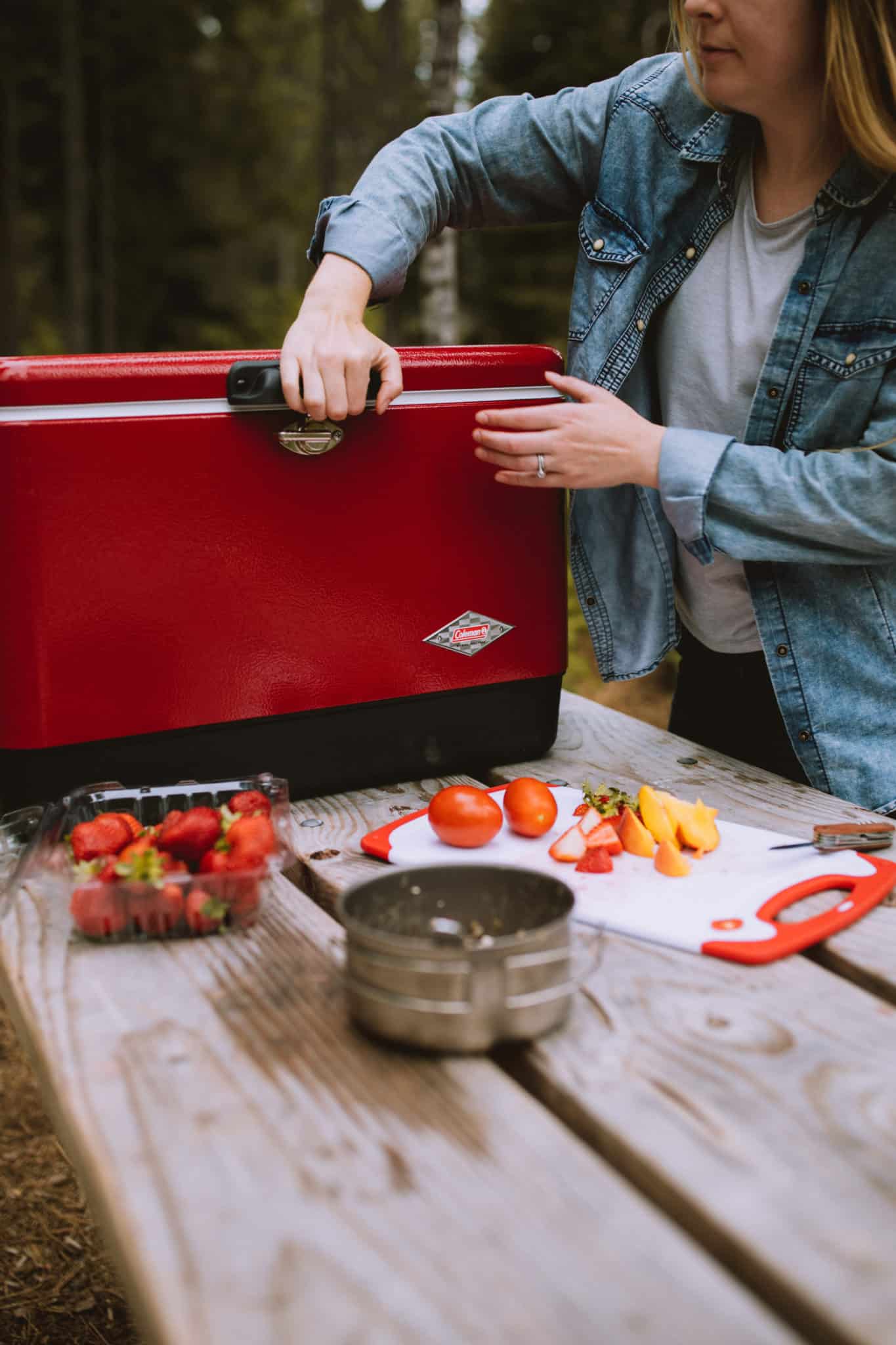
To store cold food, be sure to bring a cooler! Any of the coolers at REI are great, but really, any one will do!
Make sure you’re considering your campsite set-up to decide how big of a cooler you can bring. You don’t want to get caught lugging a giant cooler up a mountain in the backcountry!
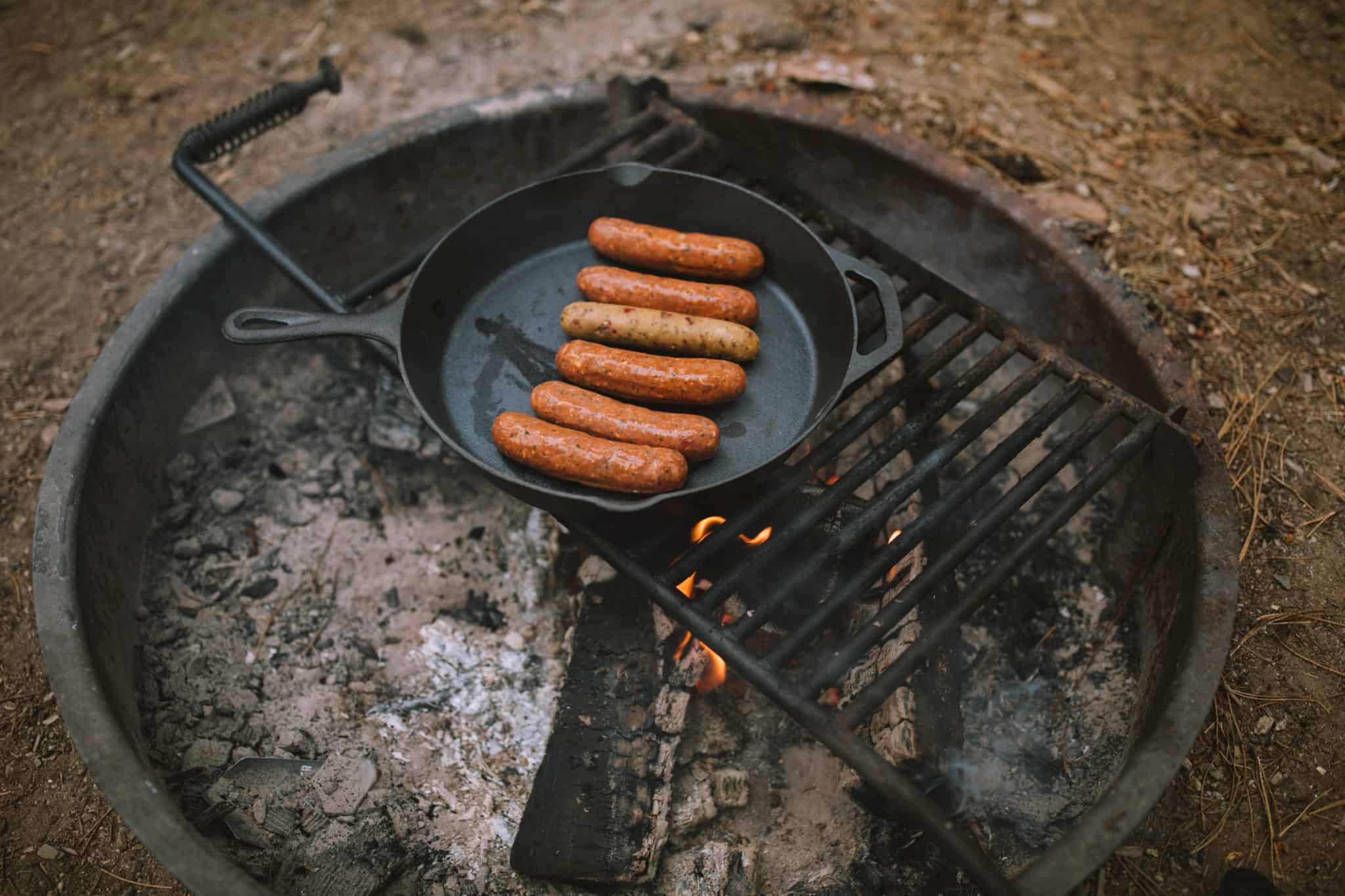
6. Cooking Setup
Don’t forget to put a cooking setup and dishes on your camp packing list! A Jetboil is one of the most efficient (and space-saving) setups out there, though a camping stove is the most traditional way to start a camp kitchen setup.
Personally, we own this two-burner one from Coleman (we put it on our wedding registry two years ago!) and it makes cooking quick and mess-free.
No stove? Don’t fret! You can use the grill on top of a fire pit, and a cast-iron pan to cook your meals. We cooked nearly all of our meals over the fire on our latest camping trip and it was so fun!
7. Ingredients for Meals
Need inspiration? We’ve got you covered with tons of diverse, easy, and unique camping meals (and snacks !) that will keep the energy up while on your camping trip.
Don’t forget the coffee , too!
8. Trash Bags
Leave No Trace ! If you’re dispersed camping or backpacking, you’ll want to make sure you pack out what you pack in.
Campgrounds will have trash bins and dumpsters, but you’ll want your own trash bags to haul your stuff either way. Grocery bags work great for this if you don’t have larger ones!
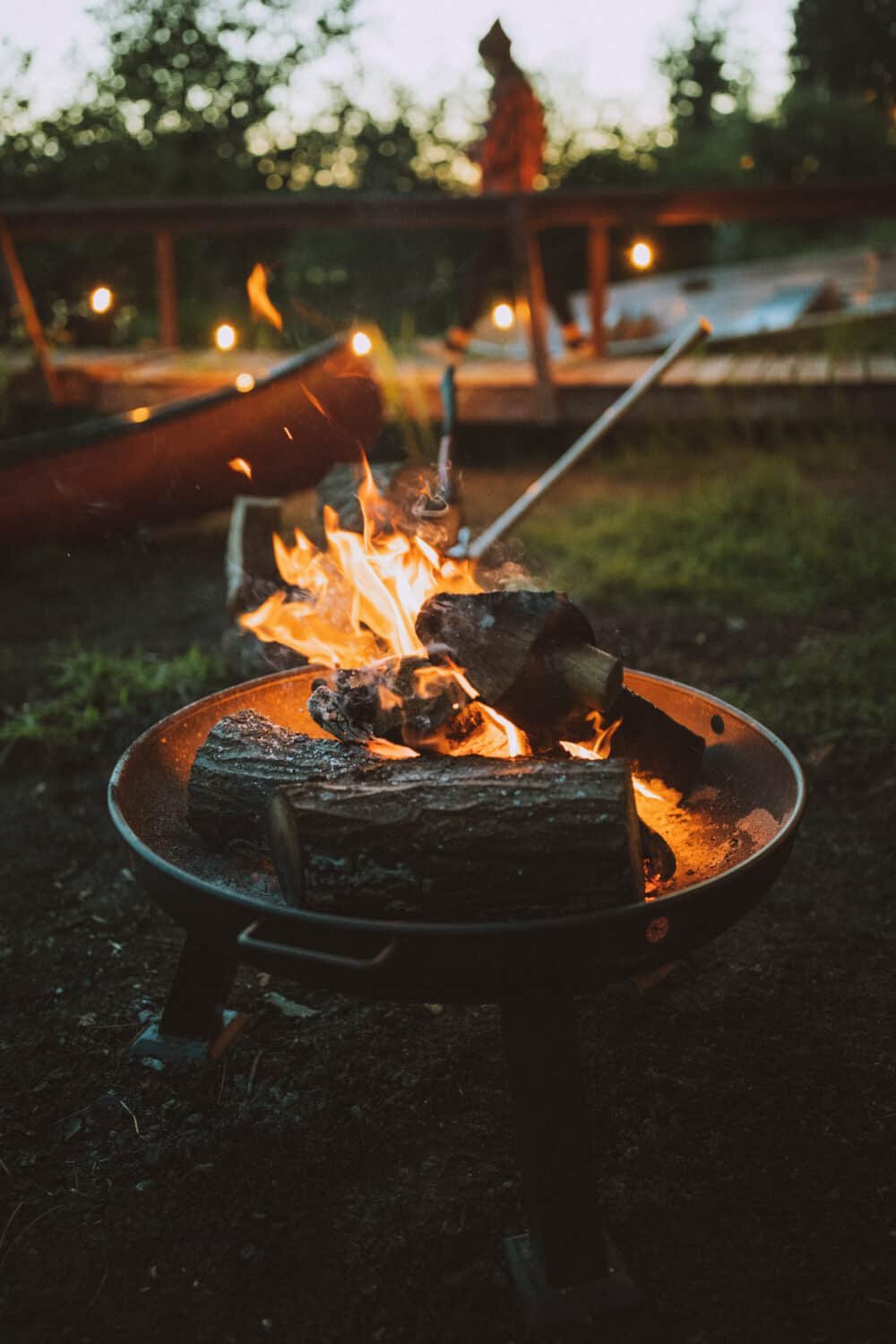
9. Fire Starter / Fire Wood
One of the top camping essentials is fire starter and fire wood. Whether you’re planning on having a beach bonfire or cooking a meal over the fire, you’ll need wood, a lighter/matches, and a fire pit. If you’re camping in the late summer or early fall, remember to check if there’s a fire ban where you’re camping!
Bring some cash to buy some cords of wood on-site when you register at your campsite.
Pro Tip: Buy firewood where you are going to burn it. Transporting firewood has the potential to kill trees (eek!) and spread diseases. Read more about how you can help conserve our forests here !
10. First Aid Kit
First aid kits are always one of the most essential camping items to bring on your camping or backpacking trip.
If you’re packing light, these Adventure Medical Kits from REI are a great option.
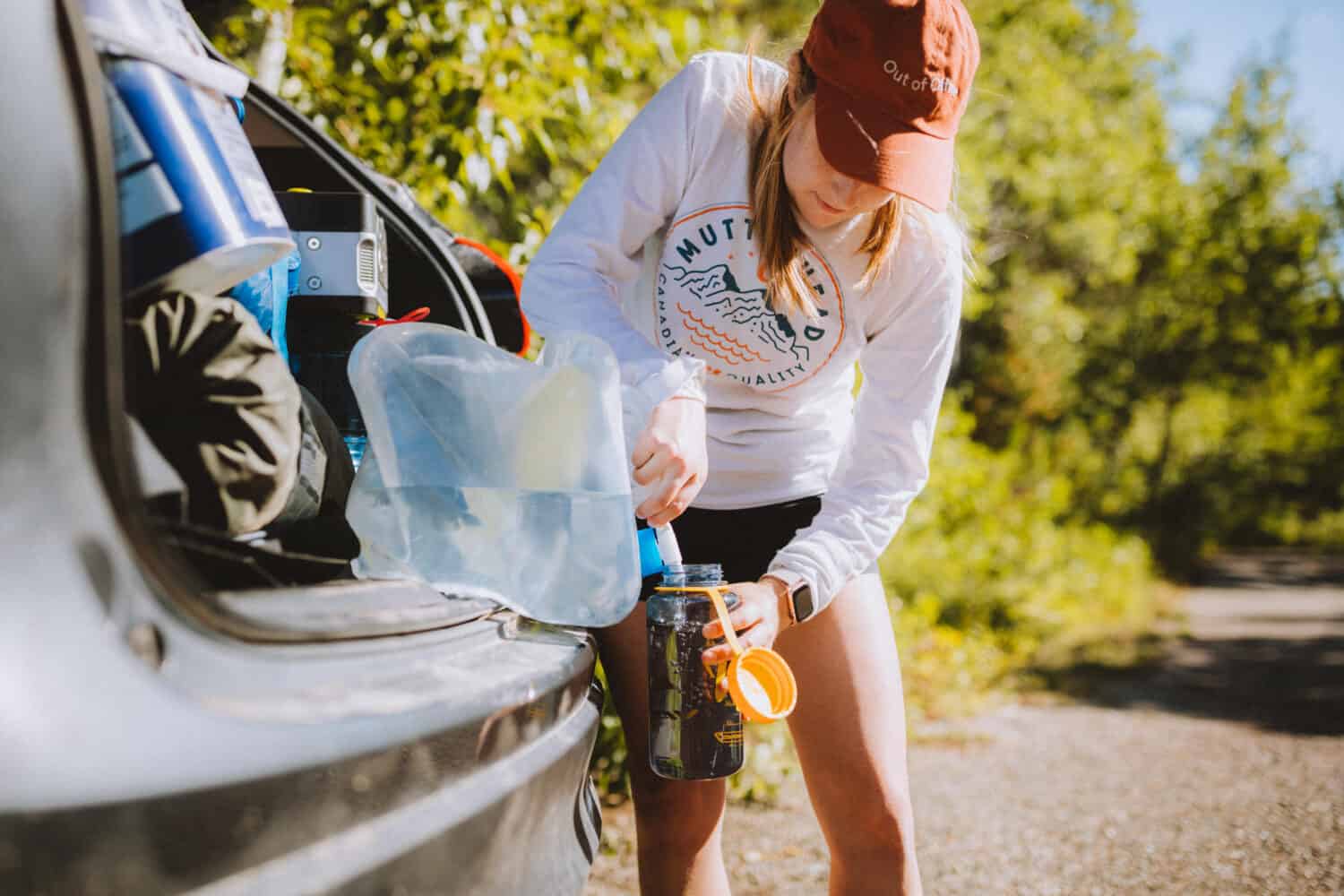
11. Water Bottle and Water Jug
One of the most essential pieces on your camping checklist a water storage container! Not only will you use water for drinking, but for cooking, staying clean while camping , and everything in between.
This is especially important if you are camping in a location that doesn’t have running water (very common in winter camping!).
We suggest packing a refillable water carrier like this one so you can use it over and over again. If you want to be extra prepared, try calling the local gas stations or state parks on your way, and see if they have stations to fill up your water.
Again, among the most important things to bring camping, water is one of them! Plan ahead by bringing a reusable water bottle to keep hydrated all trip long.
Camping snacks are the BEST. Trail mix, beef jerky, protein bars, candy, or fruit are all great options among the hundreds of delicious camping snacks.
Read More: 29 Diverse Hiking Snacks To Spice Up Your Trail Menu
A tarp is a perfect example of one product-many uses. You can use it to lay down under your tent to keep in clean and dry. Suspend it in the air to use as a shade cover. You can also position it to lean and let water run off to one side. There are honestly so many uses that there is no reason to add a tarp to your camping checklist!

I don’t know about you, but coffee is always one of our top 10 things to bring camping! How you decide to make it can take on a lot of different forms. You can heat up water over a campfire using a percolator , speed heat water with a Jet Boil, or simply use a camping stove and a pot of water.
Read More: How We Prepare Coffee On The Road
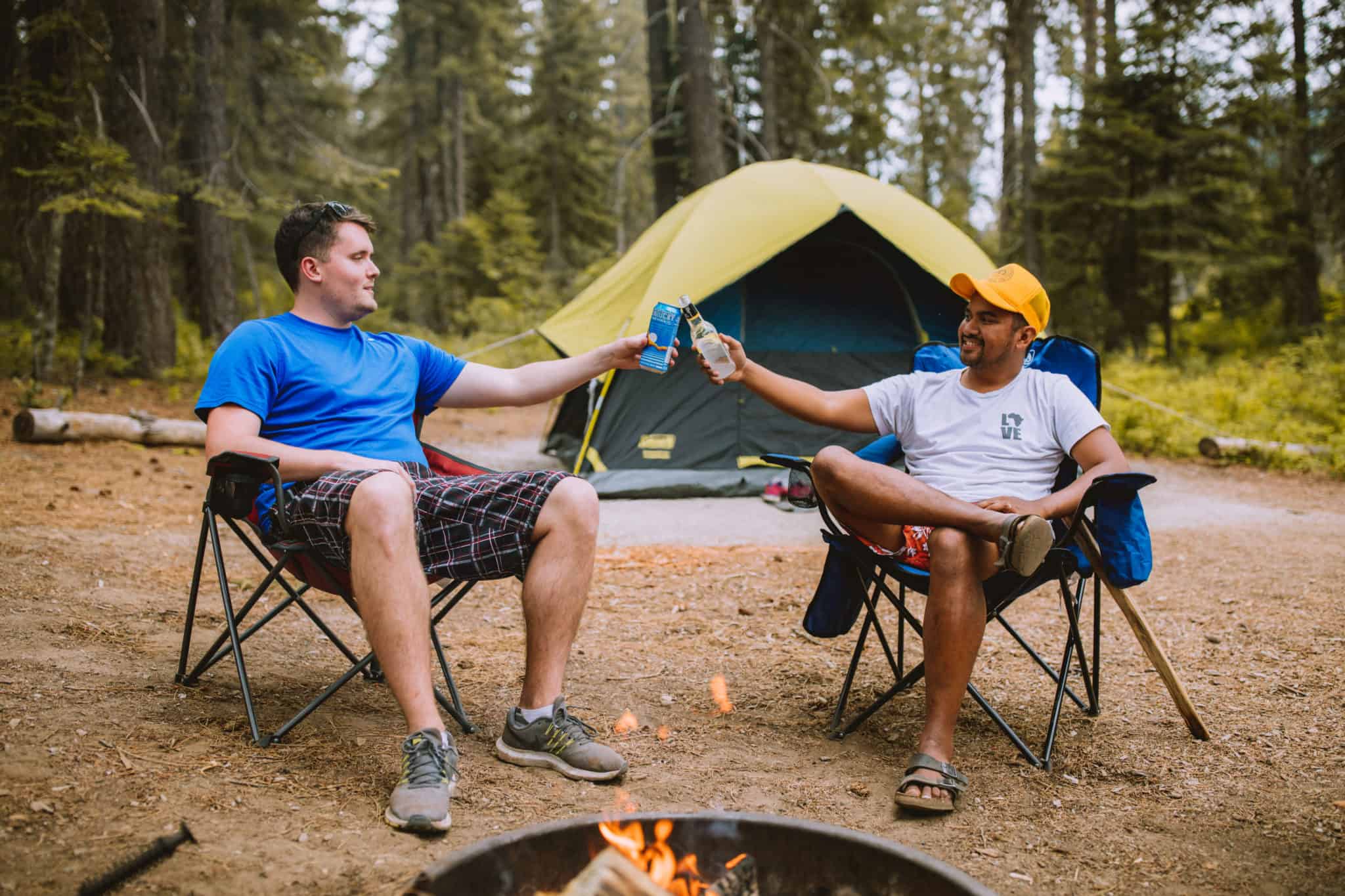
15. Camping Chairs
No more sitting on log stumps and coolers!
Camping chairs are a must for us because of their ability to facilitate great conversations around the campfire. Bonus if yours has a cup holder for a nice cold drink!
We have been known to sit around the fire until midnight most times because we get lost in enjoying the visits with our friends.
If you’re feeling fancy, get an ultra-comfy camping chair with a built-in cooler! Not only is it great for the outdoors, but we could definitely see ourselves bringing this chair to parades, tailgates, and outdoor movies!
Camping Packing list (Toiletries + Personal Items)
16. toilet paper.
Even if you’re camping at a campground with toilets, toilet paper should always be on your packing list for camping. You never know when you might need it (even if it’s just for tissues!).
17. Hair Ties
You remember that one hair tie that floats around your car or room? Yeah, that one. Bring it ( and a few extras ) on your next camping trip! You’ll thank yourself later.
A travel sized brush works great, if you’re trying to save space on your camping trip.
19. Toothbrush / Toothpaste
If you need to save some space, take these eco-friendly SuperBee Dentos Toothpaste Tablets with you while you camp! Not only are they sustainable, but they don’t make messes and you can bring the exact number you need.
20. Baby Wipes
Baby wipes are not just for babies! They work great for wiping down tables, cleaning up messes, or washing your hands on the go.
21. Sunscreen
This is SO IMPORTANT! Protect your skin and bring sunscreen with you on your camping trip. Remember–you can still get sunburned when it’s cloudy!
We love Sephora’s Sun Safety kit ($39), which provides you with a wide variety of sunscreen options, making it a great option for those looking for a new sunscreen at an affordable price. Buy it before they’re gone!!
22. Bug Repellent
Get those li’l buggers away with the Sawyer Products SP5442 Picaridin Insect Repellent on Amazon ($13 for a pack of 2). If you want a more natural option, try the Natrapel Lemon Eucalyptus Continuous Spray Insect Repellent on REI ($13).
Camping Packing List (Clothing)
23. a raincoat.
A raincoat is always essential when camping in the Pacific Northwest, especially in the spring and fall seasons! We’ve rounded up our favorite raincoats to wear in the Pacific Northwest , if you are heading out to Washington or Oregon.
24. Lots of Layers
One of the best ways to prepare for your PNW camping trip is by bringing lots of layers.
With the changing weather, you might be too hot or too cold at any moment, so it’s best to be prepared and have ways to be content in all conditions!
This doesn’t necessarily mean a lot of clothes, but a wide variety of options that can fit over another. Think lightweight base layers, fleece jackets, waterproof rain shells.
Need a little bit more information? We break down the essential ways to layer clothing here!
25. Long Pants
Whether you’re going on hikes and want to protect your legs from scratches or critters or just want to keep away the mosquitos during the evening, long pants are an essential camping item.
26. Wool Socks
Not only are they breathable, meaning they can be reused multiple times, but they’re also comfortable and cute.
Smartwool , Bombas , and REI Co-Op are all great brands to get good quality and dependable merino wool socks.
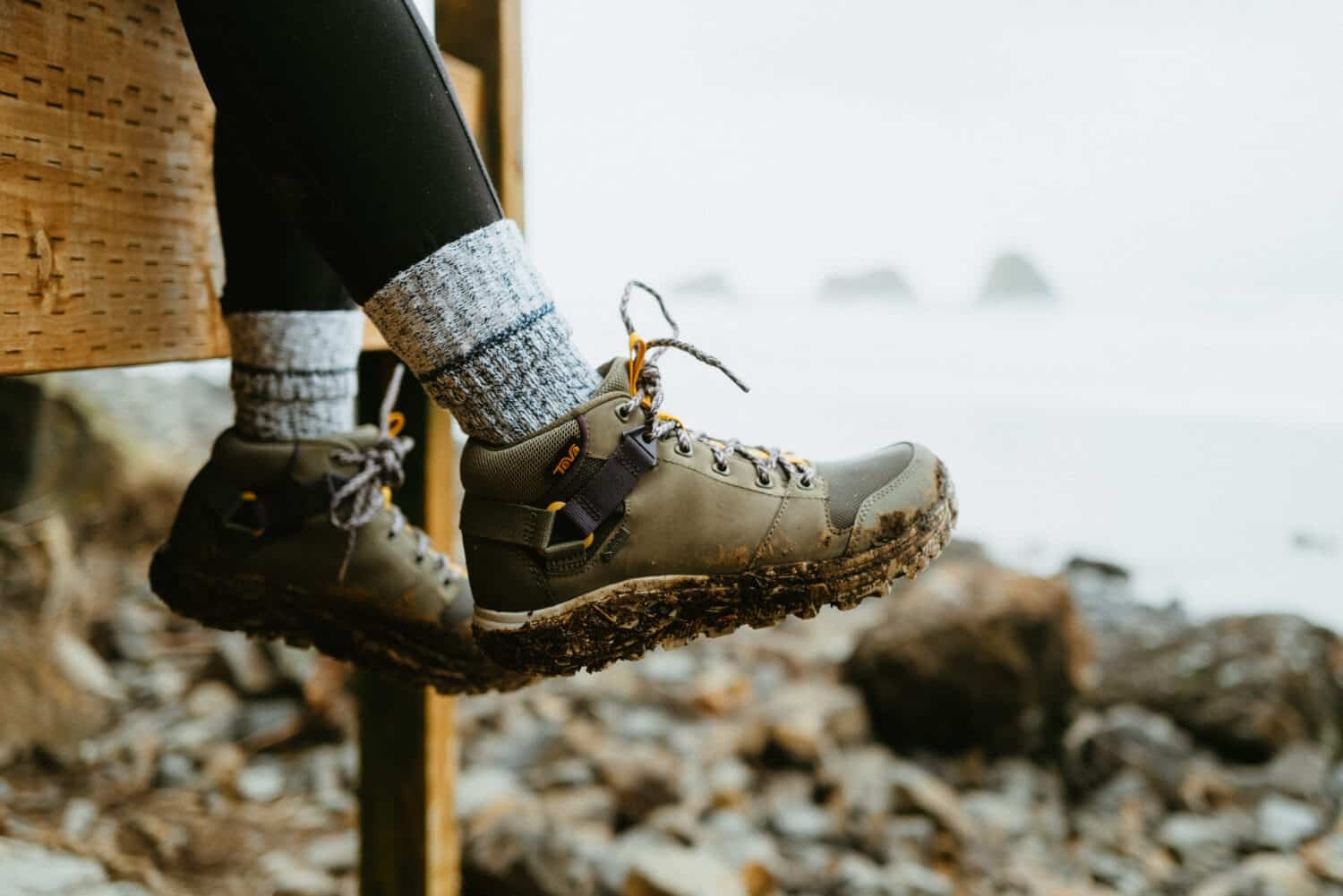
27. Hiking Boots
Hiking boots –especially waterproof hiking boots–are so important for having a good time while camping in the PNW!
Not only do these shoes make you more prepared for hikes, they also make being in all kinds of weather more enjoyable.
If you need hiking boot recommendations, we’ve got complete lists of our favorite waterproof hiking boots , tips on how to pick new hiking boots, and how to break them in .
28. Camping Slippers
Camping slippers are essential for those who want to get out of their hiking boots and be cozy while camping.
The Teva ReEmber Slip-Ons from REI ($80) are a solid option to add to your camping packing list.
Don’t want to spend the money on new camping slippers? Flip flops, slides, or Birkenstocks will also do the job.
29. Fleece Sweater or Jacket
To keep warm, bring a fleece sweater or jacket while camping. The Patagonia Better Sweater on REI is a classic, dependable option, but really any fleece will do.
Hoodies are great for protecting your head and neck from mosquitos and they’re sooo comfy! Bring a hoodie to stay warm or act as a comfortable second layer while camping.
Accessories To Bring To A Camping Trip
31. sun hat.
Another way to protect your face and shoulders from the sun is by wearing a sun hat or baseball cap.
32. Sunglasses
Bring your sunglasses and a case to protect them! A super affordable and polarized option is the goodr Circle Gs Polarized Sunglasses on REI ($25).
33. Warm Hat / Beanie
The PNW often has lovely, warm days with cold nights.
Bring a warm beanie to keep your ears warm in the evenings and at night!
34. Packing Cubes
If you love organization, get yourself some packing cubes!
A cheaper option from Amazon is the BAGAIL 8 Set Packing Cubes ($24), or you could go a more name brand direction with the Cotopaxi Cubos Del Dia Travel Cubes on REI ($45).
35. Small Wallet / Waist Pack
Whether you’re on the go or are going to a quick hike, a small fanny pack is perfect for carrying your essentials.
36. Cash & Debit/Credit Card
When going camping, you’ll want to make sure you have quite a bit of cash and your debit or credit card.
Many campgrounds only use cash, so you’ll want to prepare ahead of time by researching how much campsites cost and get enough cash for the nights you’ll stay there.
Tech For Your Camping Packing List
37. cell phone.
Don’t forget this! Even if you’re planning on unplugging during your camping trip, it’s important to have a communication device with you.
Really hoping to unplug? Travel with a radio instead!
38. Hands-Free Phone Mount For Your Car
A hands-free phone mount is so useful when driving around someplace new and following directions from digital maps.
You can get a dependable and cheap one from Amazon for $16 that can attach to your dashboard or vents.
While deciding what to bring camping, add a camera to your list! You can get by with using your smartphone for landscape photography , but if you’re planning on taking lots of pictures, bring the camera!
We love these instant print cameras and these film cameras .
40. Drop-Proof Phone Case
You never know what might happen while camping! For an extra level of caution, get a drop-proof phone case.
From Amazon, the OtterBox Commuter Series ($40) is a great option. If you need a cheaper option, this Amazon best seller ($15) would work great.
41. Power Bank
Whether you’re in the backwoods or close to town, you’ll want to bring a power bank to charge all your essential electronics.
42. Extra Cords or Chargers
Alongside your power bank, you’ll want to remember all the necessary charging cords!
43. Backseat Organizer
When traveling with kids, a backseat organizer is definitely the way to go. They can hold all your road trip essentials and keep the kiddos entertained with all their favorite road trip toys.
You can get a set of two on Amazon for $25 and store everything you need for a fun PNW road trip or camping trip!
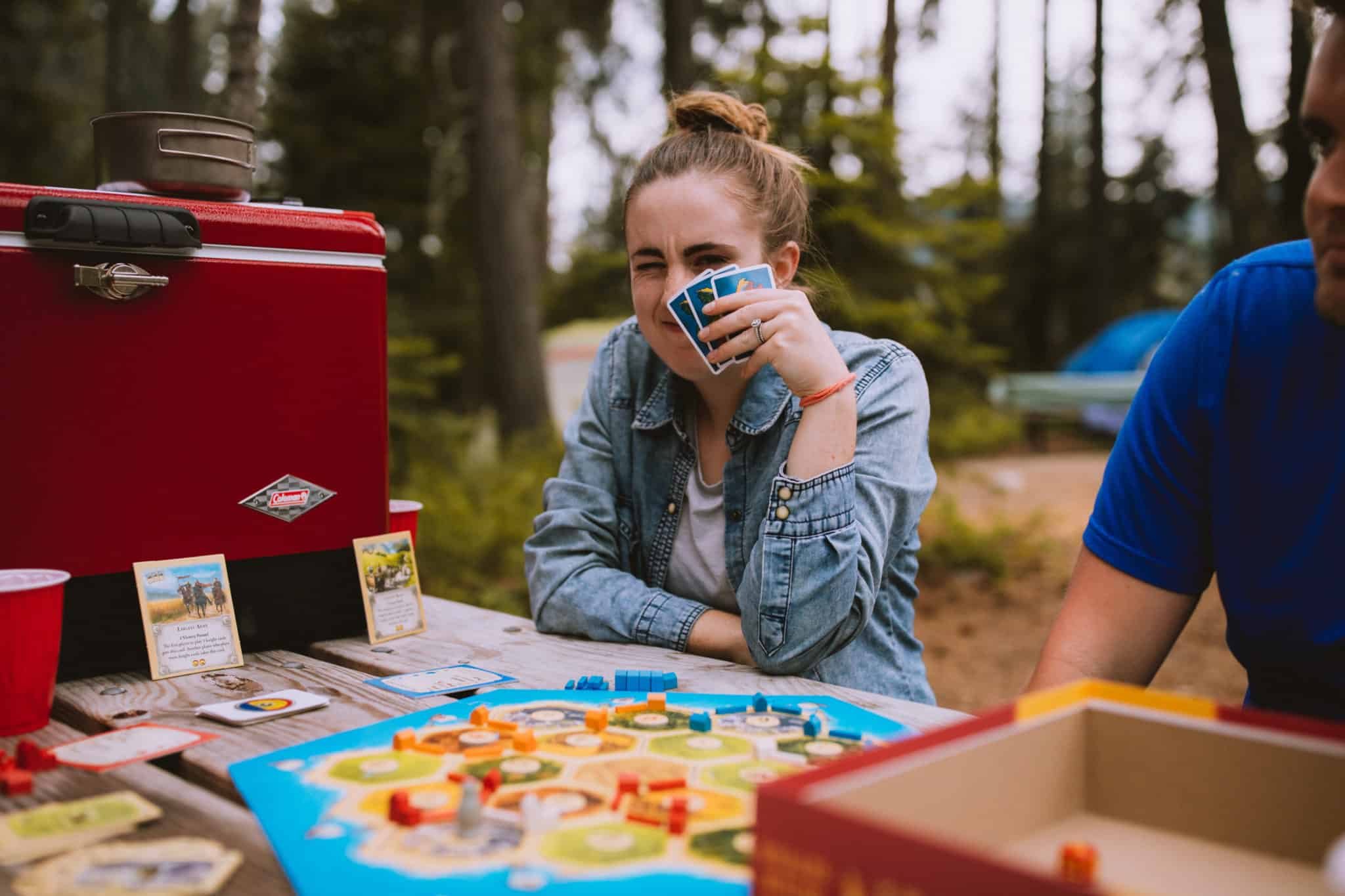
44. Camping Games / Deck of Cards / Board Games
Some of our favorite camping memories are when we’re sitting around the picnic table playing camping games !
Our favorites to add to our camping checklist are Mad Gab, Sorry, Dice, and Settlers of Catan. Make sure to pack a few decks of cards too – then you’ll have endless games to play.
On our last trip, we played Settlers of Catan not once, but THREE times! It was a really fun way to sit around the picnic bench and bond with our friends. While it’s not the most common game to add to a camping list, don’t be afraid to bring your favorite games to share – no matter how complicated.
Read More: The 59 Best Camping Games For Families, Kids, Rainy Days + More!

45. Lantern
A good lantern is essential for those late-night bathroom runs, but even more important if you want to stay up late playing games.
Bonus if your lantern plays music like this one from Coleman for some perfect camping vibes. Just make sure not to disturb your neighbors and respect camp quiet hours!
We also used this lantern to explore during sunrise at Lake Wenatchee . It’s the perfect source of light for blue hour, and it helped guide our way through the rocky trails.
Camping Packing List (By The Seasons)
In addition to all of the above items, here are some things you need for camping based on the specific seasons:
What To Pack A Camping Trip in Winter (Dec, Jan, Feb)
Camping in the winter requires a little bit more planning and preparation. Depending on the snow pack in your area, you’ll probably need to bring a lot of gear! Here are 10 things you need for camping in the winter season:
- Small shovel to dig out side
- Towel for the car
- Scarf or buff
- Waterproof coat
- Long Underwear
- Extra Trash Bags
- Tarp & twine
- Extra blankets
What To Pack For A Spring Camping Trip (March, April May)
Spring camping is one of our favorite seasons to go! Depending on where you go (for us, that’s the Pacific Northwest) you should prepare to pack a few extra layers, a few more warm blankets. Also, don’t forget to pack some extra rain protection!
- Camp blanket
- Lightweight Rain Jacket
- Reusable mug for hot coffee in the morning
Camping Packing List For Summer (June, July, August, September)
Most of our main list outlines what to pack for a summer camping trip, seeing as it’s the most popular time to camp!
However, if you are extending your time to think outside of the norm (like boating, biking, climbing, etc) Here’s what to add to your camping packing list for the summer:
- Equipment specific to your sport
- Flip flops or water sandals
- Quick-dry clothes
- Swimsuit / Wetsuit
- Beach Games / Volleyball
- Wagon to carry stuff from A to B
- Beach Blanket
- Bonfire Supplies: Firestarter, paper, matches, wood (make sure your area doesn’t have an active fire ban in place)
What To Pack For A Fall Camping Trip (October, November)
Add these to your camp packing list if you’re taking an adventure this fall:
- Camp slippers (like these Tevas)
- Reusable coffee mugs
- Extra cooking supplies (for elaborate meals in the evenings)
- Extra warm Socks
- Jean Jacket / Light Jackets
Do NOT add these items to your Camping Packing List
So what should you NOT bring on a camping trip? Here are some things we suggest leaving at home and why:
Fine China (or precious breakables)
Instead, bring plastic or paper products for dishes and collapsible cookware! It’s pretty common that there are spigots at the campground to wash dishes, but it’ll still be outdoors, so you’ll want to bring cookware that isn’t easily breakable.
Impractical or uncomfortable shoes
Whether you’re just walking to and from the bathroom to your campsite or going on a hike, you’ll want to pack comfortable shoes. Don’t bring anything that isn’t broken in, that’s valuable to you (it could get dirty or ruined), or takes up a lot of space!
Fancy Clothes
Chances are, all our clothes will smell like campfire smoke after the weekend! If you are concerned about any item of clothing getting smelly, damaged, or ruined, don’t bring it!
Let’s Wrap Up Your Camping Packing List
We hope you enjoyed our take on what to pack for a camping trip! We’re always fine tuning our gear, so come back for periodic updates as we improve this list!
We could go a lot more in-depth in this post, but we wanted to keep this downloadable checklist simple and attainable for any first-time campers.
You don’t need a huge packing list for camping (though you totally could go all out, and that’s great too!) but we’re here to share a basic camping checklist in this download. We hope that it can equip and inspire you to take your first camping trip (or your 100th!), and feel prepared to take on any outdoor adventure!
Camping Packing List Download
Looking for a quick and simple camping checklist? We used to spend hours and hours reluctantly scrolling to find a camping checklist with all the essentials.
After lots of digging and no success, we decided to ultimately make our own camping checklist! No, we pack the car in record time and have time to care about more important matters…like jumping in the lake!
Here’s our all-season camping packing list. Download it for free below, or keep browsing this post to dive into specifics!
Did we miss anything on our camping checklist? Have any additions to make? Leave them in the comments below!
MORE CAMPING RESOURCES
The Essential Guide To Camping In The PNW
10+ Easy Camping Meals To Make On The Road
La Push, Washington and Beach Camping Tips
Want A Cozier Getaway? Read About Glamping In A Yurt!
The Essential Guide To Finding Free Camping Spots In The USA
20 Brilliant Car Camping Hacks For Your Best Trip Yet
Car Camping 101: The Complete Guide To Sleeping In Your Car
Want some more ideas for your camping checklist? Follow our Camping Board on Pinterest for more inspiration!
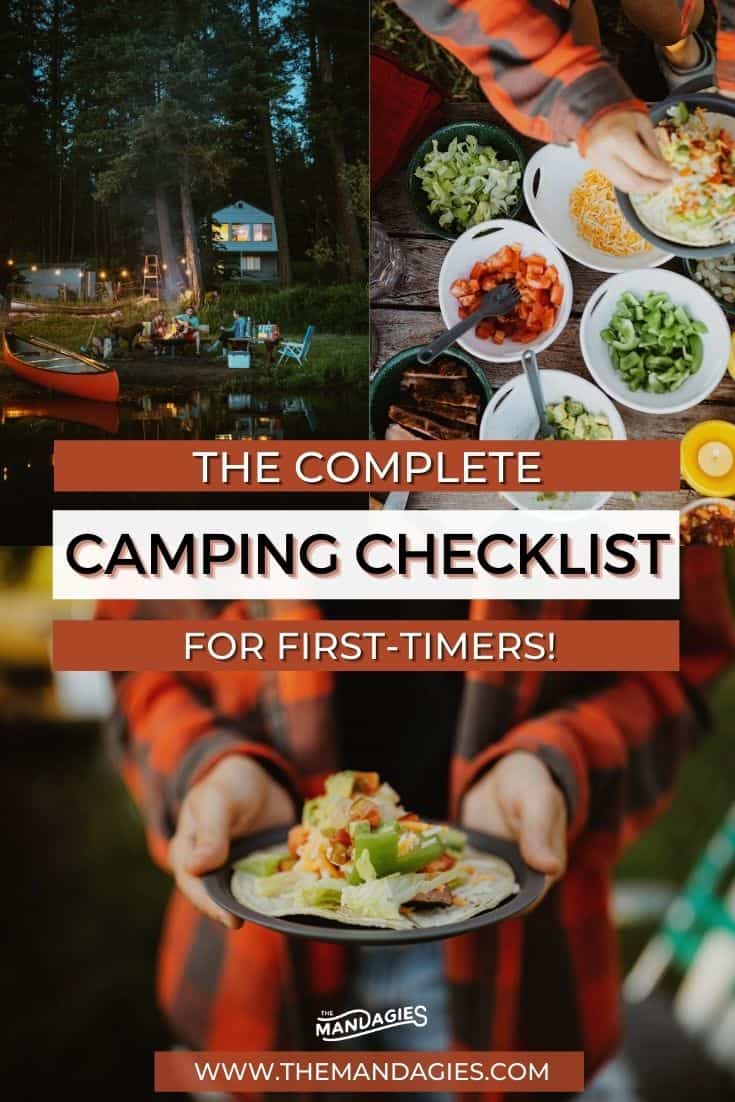
I love your blog. Although hubby and I haven’t tent-camped in years (bought a small travel trailer-gotta have my indoor potty for 3 a.m. calls of nature) we like your tips on destinations. We live in southwest Idaho and have been exploring the surrounds. If you get a chance to visit Succor Creek, the scenery is reminiscent of the Grand Canyon. Same with the Owyhee reservoir. Spring and fall are the best camping and hiking in those places. Murphy museum is awesome and Silver City is so historic.
Aww thank you so much! And thanks for the Southwest Idaho recommendations – we’ll definitely put Succor Creek and Owyhee Reservoir on our list!
I’m more of a hike then camp sort of person, but it definitely looks like a lot of fun just putting whatever you want to bring in a car and pitch your tent on a nice place like you’ve done here. Board games for the win! You’ve made it look so cozy 🙂
Hi Ragnhild! Totally! We love both hike camping and tent camping. Mostly the latter for lazy, slow adventures – and board games area must! Glad you enjoyed the post 🙂

Camping Checklist
We cover everything you need for a successful camping trip, from essentials like a tent and camp stove to extras like sunscreen and firewood.
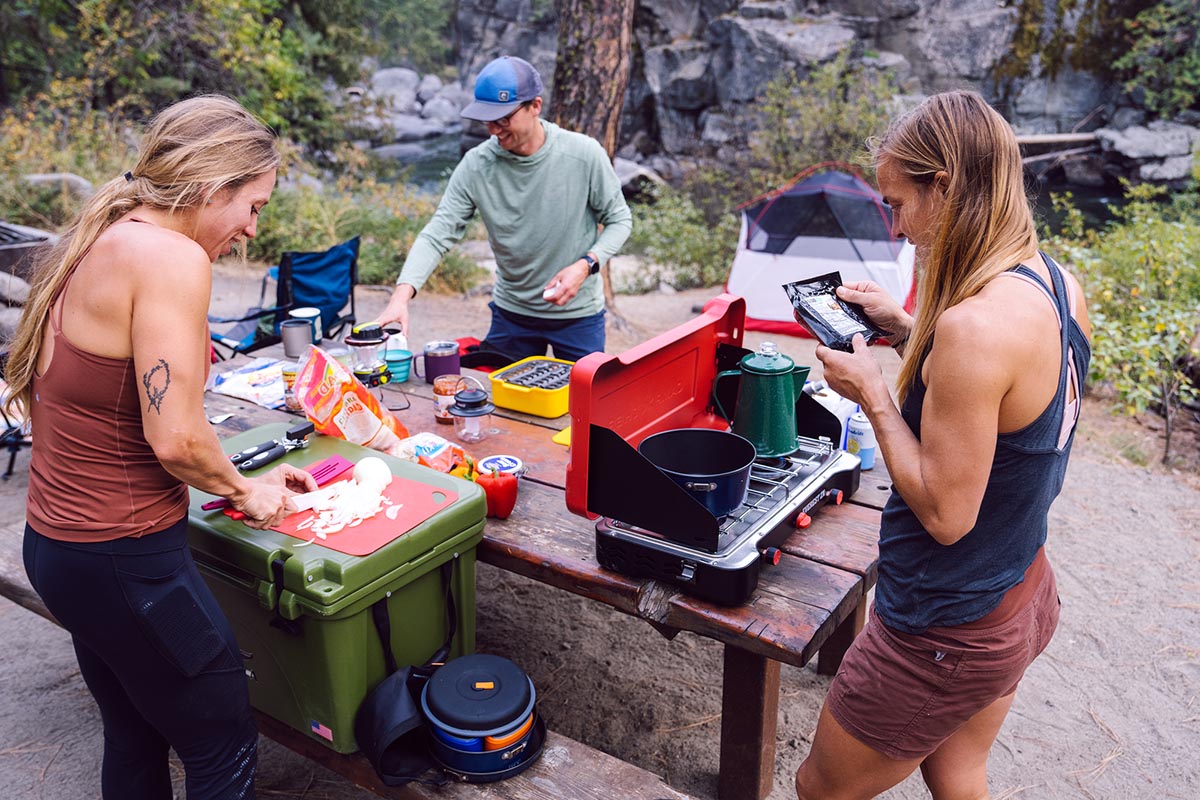
Jason Hummel Photography
We use affiliate links and may receive a small commission on purchases. Read more about us .
Whether it’s your first time car camping or you’ve been at it for years, it never hurts to have a good checklist. To help you get out of the house with all of the essentials in tow, we’ve outlined everything you need including campsite and sleeping gear , camp kitchen essentials , outdoor clothing and footwear , health and hygiene products , and personal items and extras . For each category, we’ve listed necessary items—along with our top picks—as well as optional gear. Finally, for all our product recommendations in one place, see our detailed camping gear reviews .
Editor's note: The table above provides a brief overview of what you'll need to get outside, but our full PDF version is printable and offers a more comprehensive breakdown of the necessities and nice-to-haves. See Our Camping Checklist PDF
Campsite and Sleeping Gear
Whether you’re headed out for a quick weekend getaway or taking an extended vacation in the woods, the gear below is what we bring on every trip to create a comfortable backcountry basecamp. We've also included a handful of optional items that may or may not be worth packing depending on what amenities (if any) will be available at your campsite. And when applicable, we've included links to our gear round-ups where we break down our top picks for each category.
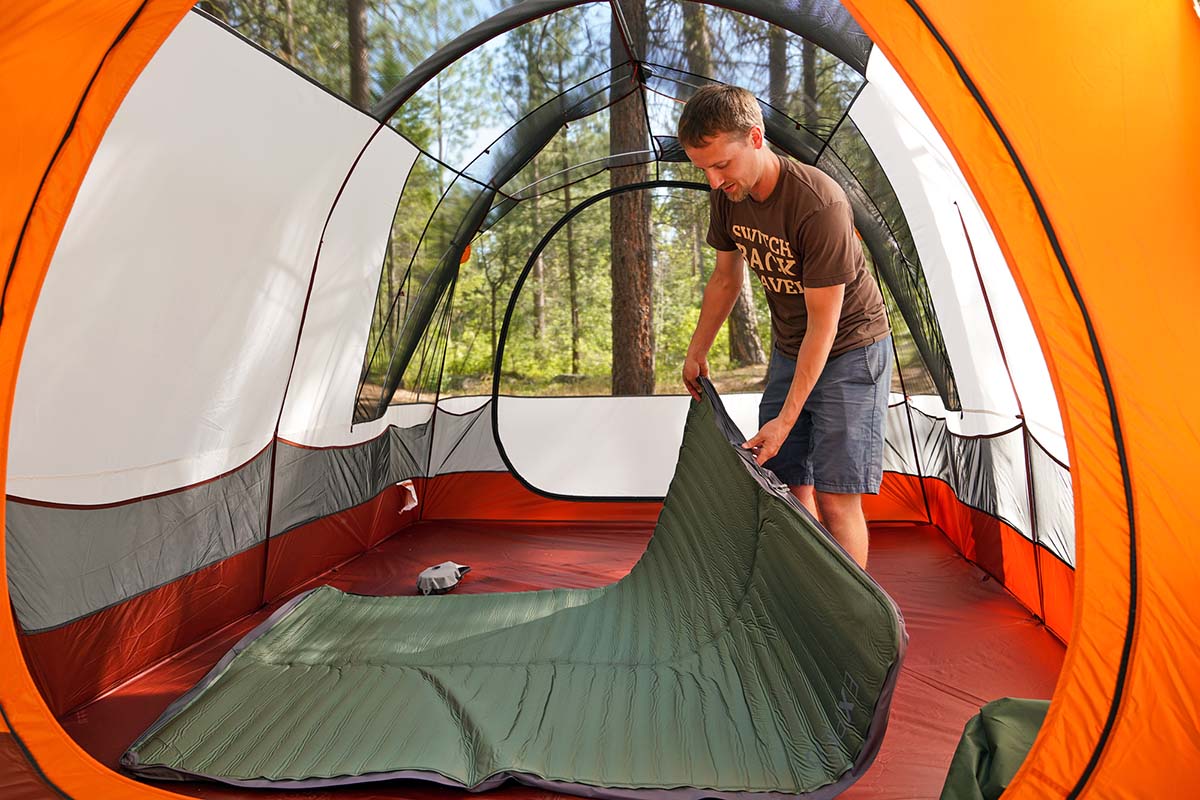
Camping Tent
Our top pick: The North Face Wawona 6 ($500) What we like: Open interior and massive vestibule at a price that's hard to beat. What we don’t: Time-consuming to set up; partial-coverage rainfly leaves the bottom exposed to moisture.
Camping Sleeping Bag
Our top pick: REI Co-op Siesta Hooded 20 ($139) What we like: Affordable and comfortable for 3-season use with a rectangular shape, warmth-trapping hood, and 20-degree rating. What we don't: Heavier and less compressible than mummy bags.
Camping Mattress
Our top pick: Therm-a-Rest MondoKing 3D ($240) What we like: Thick build and plush foam make this one of the most comfortable sleeping pads on the market. What we don't: Expensive and overkill for occasional campers—for our top value pick, check out Sea to Summit's Camp SI .
Camp Pillow
Our top pick: Therm-a-Rest Compressible Pillow ($37) What we like: Soft exterior, machine washable, and cinch cord makes it easy to tailor firmness. What we don't: Foam takes some time to expand; those on a budget can just bring a pillow from home.
Camping Chair
Our top pick: REI Co-op Campwell Chair ($60) What we like: Sturdy, nicely appointed, and breathable for hot summertime temps. What we don't: If support is a top priority, consider opting for a chair with a higher backpanel like the Alps Mountaineering King Kong .
Our top pick: Petzl Actik Core ($85) What we like: Great output, long battery life (via AAAs or the rechargeable battery), and easy-to-use interface. What we don't: Too front-heavy for running—for that, we turn to Black Diamond's Sprinter 500 .
Camping Lantern
Our top pick: BioLite AlpenGlow 500 ($80) What we like: Impressive output, ample lighting modes, and fun tech features. What we don't: Pricey and takes a little time to learn how to operate.
Optional Campsite and Sleeping Gear
- Camp table (if no picnic table)
- Sleeping bag liner
- Camping blanket
- Tent footprint/ground cloth
- Extra stakes
Camp Kitchen Gear
Seasoned campers know the value of setting up a quality outdoor kitchen, especially if you've got a larger group or are planning to be out for more than a night or two. Items like a camping stove and cooler are no-brainers, but don't overlook the smaller, easier-to-forget items like cookware, utensils, and food prep supplies. And we can't help but love a quality kitchen set like GSI Outdoors' Destination to help keep our cooking supplies organized and ready to go.
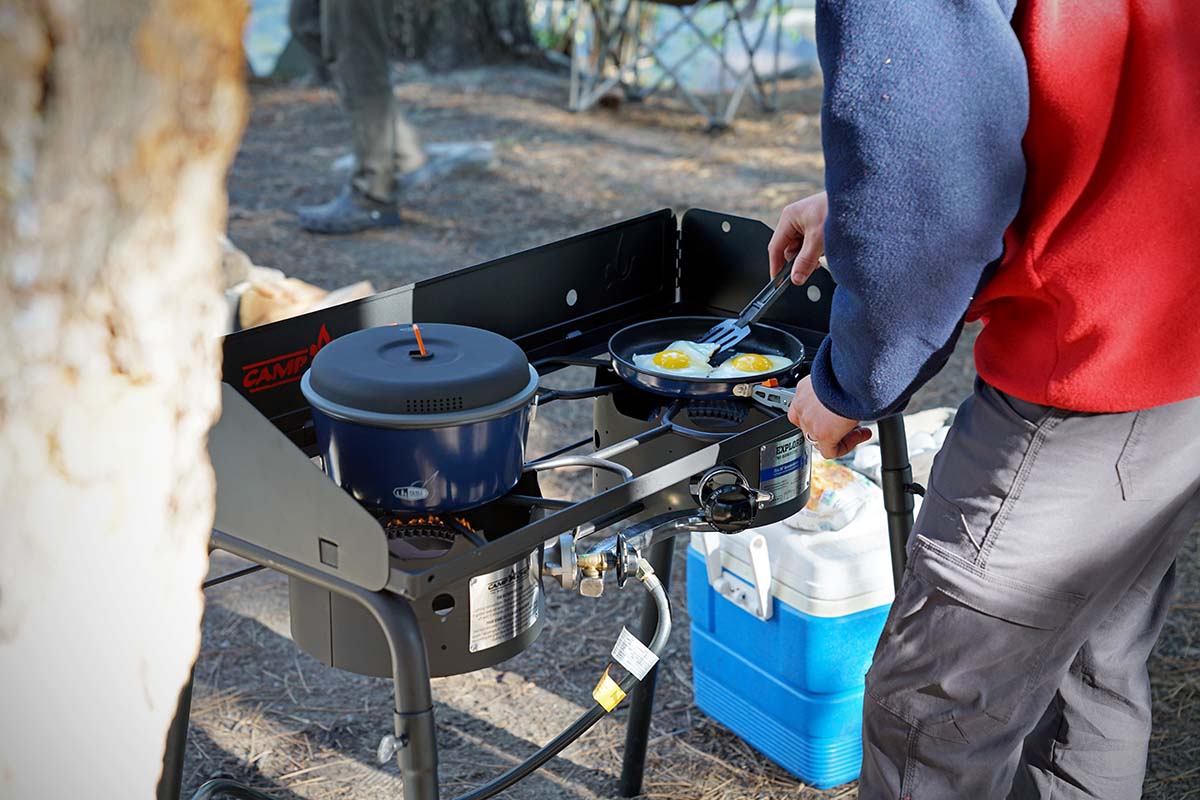
Camping Stove and Fuel
Our top pick: Eureka Ignite Plus ($160) What we like: Quality build, generously sized cooking area, and well-sorted feature set. What we don't: Discerning campers can get double the output with Camp Chef’s Everest 2X .
Cooler or Wheeled Cooler (Pre-Filled with Ice)
Our top pick: RTIC 52 Ultra-Light ($199) What we like: Versatile size and competitive ice retention for less than the competition. What we don't: Only sold online and a small step down from the cooling capabilities of a Yeti (like their signature Tundra 65 ).
Cookware and Utensils
- Pots and pans
- Cooking utensils (spatula, large spoon, tongs)
- Silverware (forks, spoons, knives)
- Bottle/can openers
Food Prep and Dish-Washing Supplies
- Matches and/or lighter
- Cutting board
- Cooking oil
- Paper towels
- Measuring cups
- Aluminum foil
- Seasonings and condiments
- Wash bin/portable sink
- Sponges/scrubbers
- Food and gear storage (Ziploc bags, plastic bins, etc.)
Optional Kitchen Gear
- Water jugs (if no potable water)
- Portable coffee/tea maker
- Firewood (if fires are permitted)
- Axe/hatchet
- Fire starter
Outdoor Clothing and Footwear
The clothes you pack when camping will largely depend on expected temperature and weather conditions, but it all starts with a quality layering system: baselayer, midlayer (insulation), and rain shell. Dedicated hiking footwear can also go a long way toward maximizing your overall comfort on adventures from camp. And if you're heading out in the shoulder seasons, don't forget cold-weather gear like a hat, gloves, and neck gaiter.
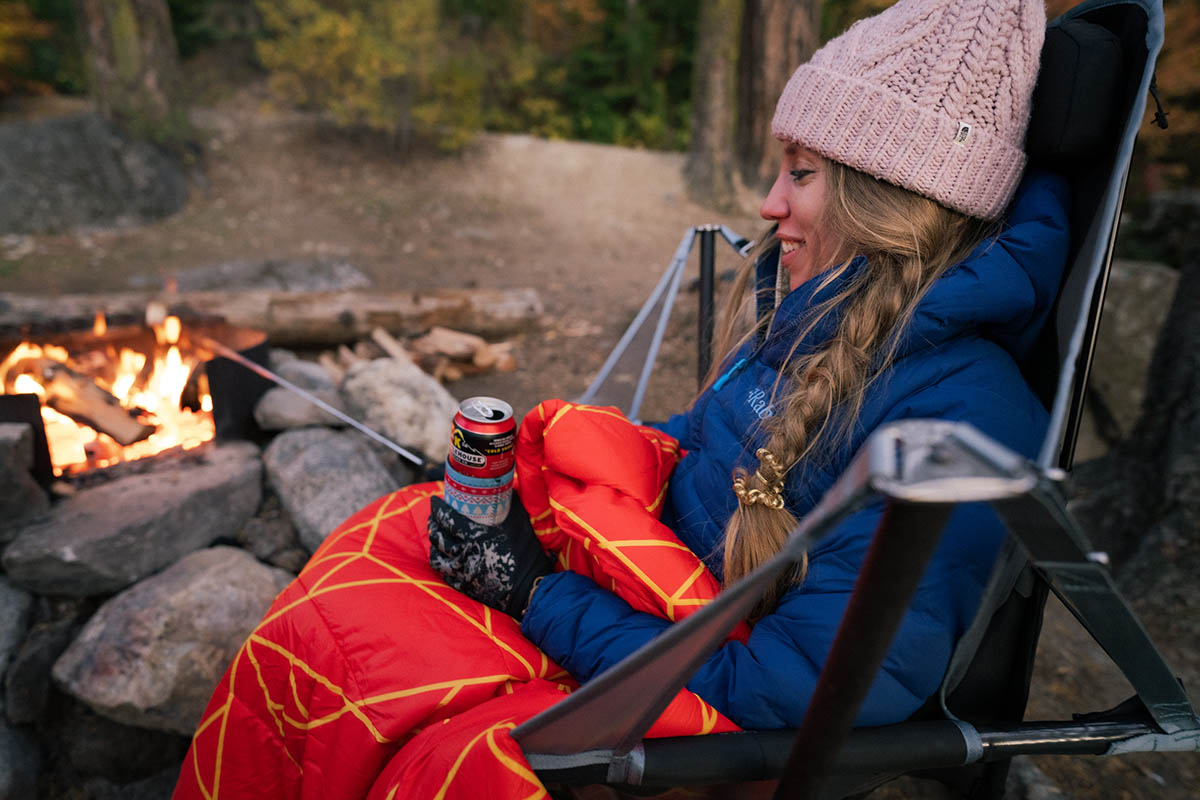
Moisture-Wicking Baselayer
Our top pick: Smartwool Classic Thermal Merino 1/4-Zip ($120) What we like: 100% merino wool build is warm, super soft against the skin, and naturally resists moisture and odors. What we don't: Wool baselayers require care to last and don't come cheap—for a wallet-friendlier option, we turn to polyester layers like Patagonia's $79 Capilene Midweight Crew .
Down Jacket or Synthetic Jacket
Our top pick: Patagonia Down Sweater ($279) What we like: Great warmth for the weight and looks great for everyday wear. What we don't: We prefer something lighter—like the Mountain Hardwear Ghost Whisperer/2 Hoody —for backcountry use.
Rain Jacket
Our top pick: Patagonia Torrentshell 3L ($179) What we like: 3-layer protection and durability in a sleek and affordable package. What we don't: Fabric is stiffer and more crinkly than some of the higher-end competition, including Arc'teryx's venerable Beta LT .
Hiking Pants and/or Hiking Shorts
Our top pick: Prana Stretch Zion ($95) What we like: Excellent comfort, durability, and versatility for crossing over between outdoor and everyday use. What we don't: For hiking in hot weather, we prefer the more breathable Outdoor Research Ferrosi .
Hiking Boots or Hiking Shoes
Our top pick: Salomon X Ultra 4 Mid GTX ($175) What we like: Light, comfortable for all-day wear, and can handle everything from short day hikes to lightweight overnights. What we don't: Relatively thin and flexible underfoot for carrying a heavy pack over technical ground.
- Hiking Socks
Our top pick: Darn Tough Micro Crew Cushion ($25) What we like: Great padding and breathability for 3-season use, seamless construction, and backed by a lifetime warranty. What we don't: Tougher than they are soft and plush.
Optional Clothing and Footwear
- Camp sandals or slippers
- Neck gaiter /buff
- Long underwear
Health and Hygiene
Staying clean and comfortable in the backcountry can be a challenge, but the good news is that many major campgrounds have facilities like pit toilets and running water (in the form of spigots) to make the experience a little easier. If not, you may want to consider a portable toilet and/or shower, and don't forget the usual assortment of toiletries like soap, toilet paper, and basic first aid supplies.
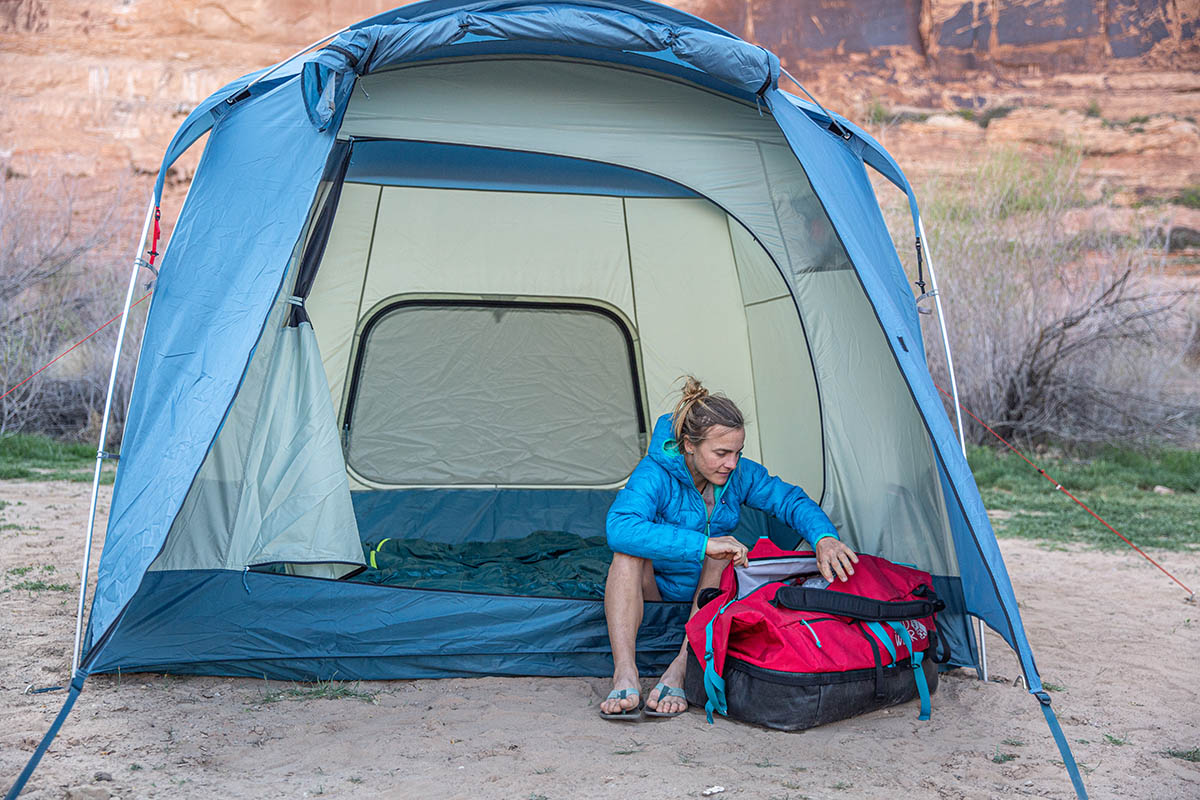
- Toothbrush and toothpaste
- Toilet paper
- Soap/hand sanitizer
- Toiletries kit (shower supplies, deodorant, etc.)
- Quick-drying towel
- Personal medications
- First aid kit
Sun and Bug Protection
- Insect repellent
Optional Health and Hygiene Items
- Trowel or portable toilet (if no facilities available)
- Portable/solar shower
Personal Items and Extras
Most items on the above checklist are obvious camping essentials that you probably won't leave behind, but forgetting your wallet or cell phone can be just as much of a trip-ender as leaving your tent at home. On that note, here are some of the smaller personal items that you’ll want to consider before heading out. Some of them (like camp games) certainly aren't necessary but can help make your trip more enjoyable.
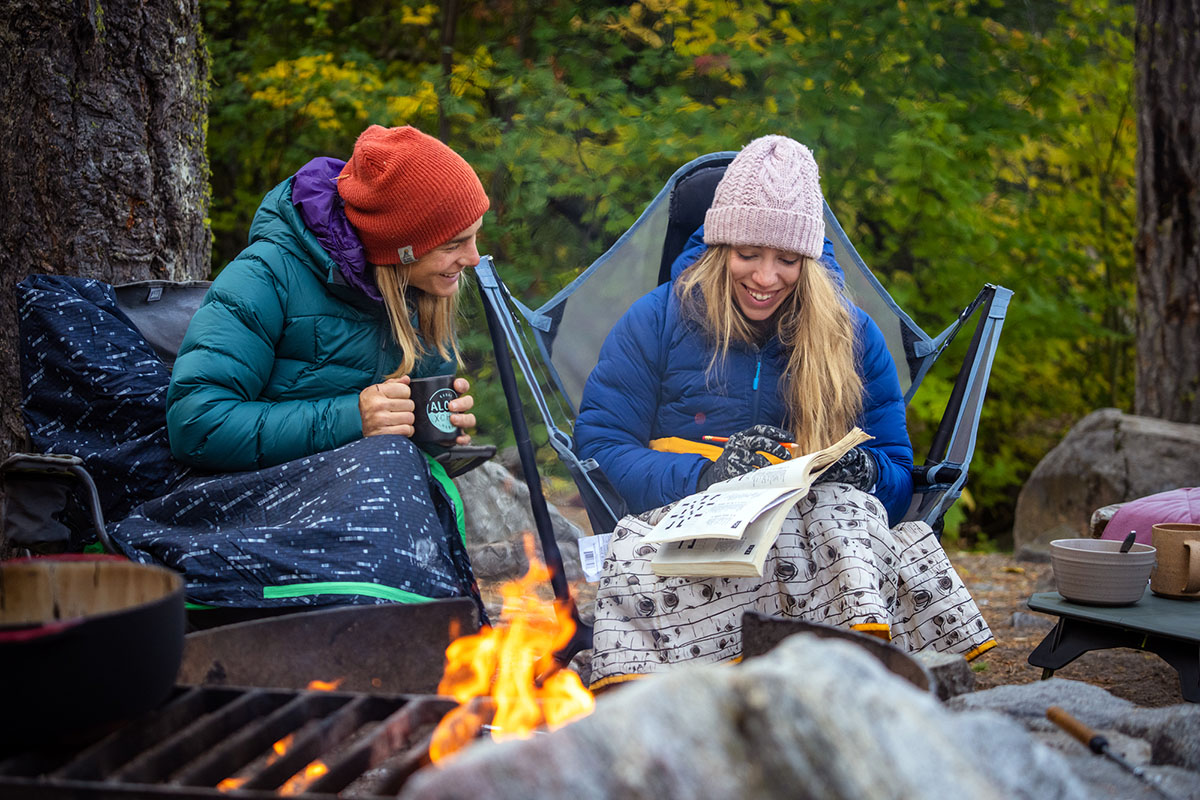
- Basic repair kit (multi-tool, duct tape, extra cord)
- Navigation (map, GPS , compass)
- Water bottle
- Earplugs and eye mask
- Batteries and/or solar charger
- Notebook and pen/pencil
- Book or Kindle
- Bear spray (if required)
- Activity-specific gear ( daypack for hiking , pole for fishing, etc.)
- ID, cards, cash
- Cell phone with charger
- Campsite reservation
- Forest Service/park pass (if required)
Other Considerations: Weather, Group Size, and More
While the list above covers the basics for most trips, there may be other items to consider depending on the time of year, how many people are in your group, and whether you’ll be camping with kids and/or pets. Starting with seasonality: Most of us are predominantly fair-weather campers, but those who like getting out in the winter months will need warmer and more protective gear, including a 4-season tent , cold-weather sleeping bag and pad, thicker layers, and snow-specific equipment like snowshoes or skis and avalanche safety tools (beacon, probe, and shovel). For a more comprehensive breakdown of the gear you’ll need for cold-weather camping, check out our Winter Camping Checklist .
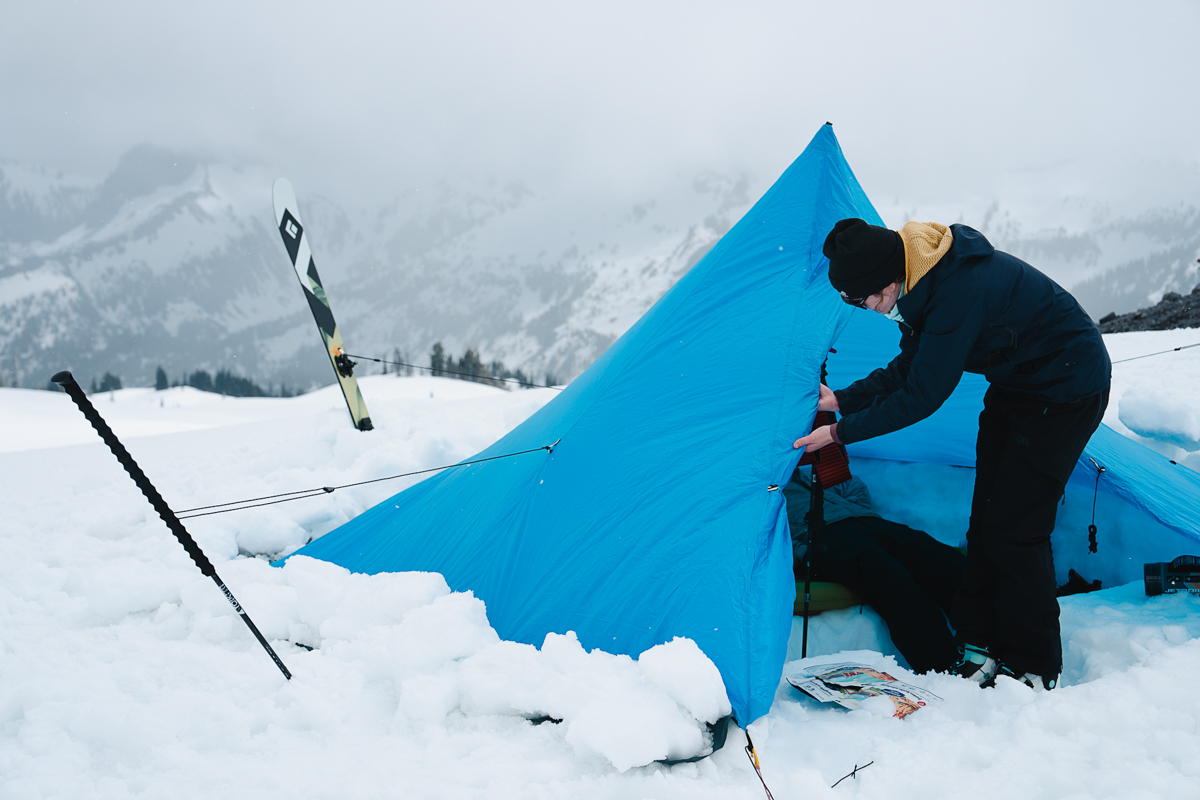
Group size is another important factor to weigh when packing. For example, smaller groups may not have any issues cooking on a standard two-burner stove, but larger parties may want to step up to a larger freestanding unit (or even a portable grill), opt for a three-burner design, or bring along more than one stove. If you’ll be basecamping for a while, you may also consider setting up a shade structure and folding table for hanging out and cooking or fashioning a clothesline to dry wet gear. Portable fire pits have also become increasingly popular recently, and we love Solo Stove’s offerings for their precision and lack of smoke.
Finally, if you’ll be camping with kids or pets, certain accessories and extras can go a long way toward maximizing overall comfort. For kids, it’s always a good idea to pack games and camp-friendly toys like frisbees, cards, and other compact items to pass the time at night or in inclement weather. For pets, we recommend bringing along a longer leash or runner to allow your dog to move around at camp while still remaining close by, collapsible food and water bowls to maximize space, and a bed and/or blankets to keep warm at night. Ruffwear makes some of our favorite dog gear and accessories on the market, from storage-equipped packs to car seat covers and even dedicated sleeping bags.
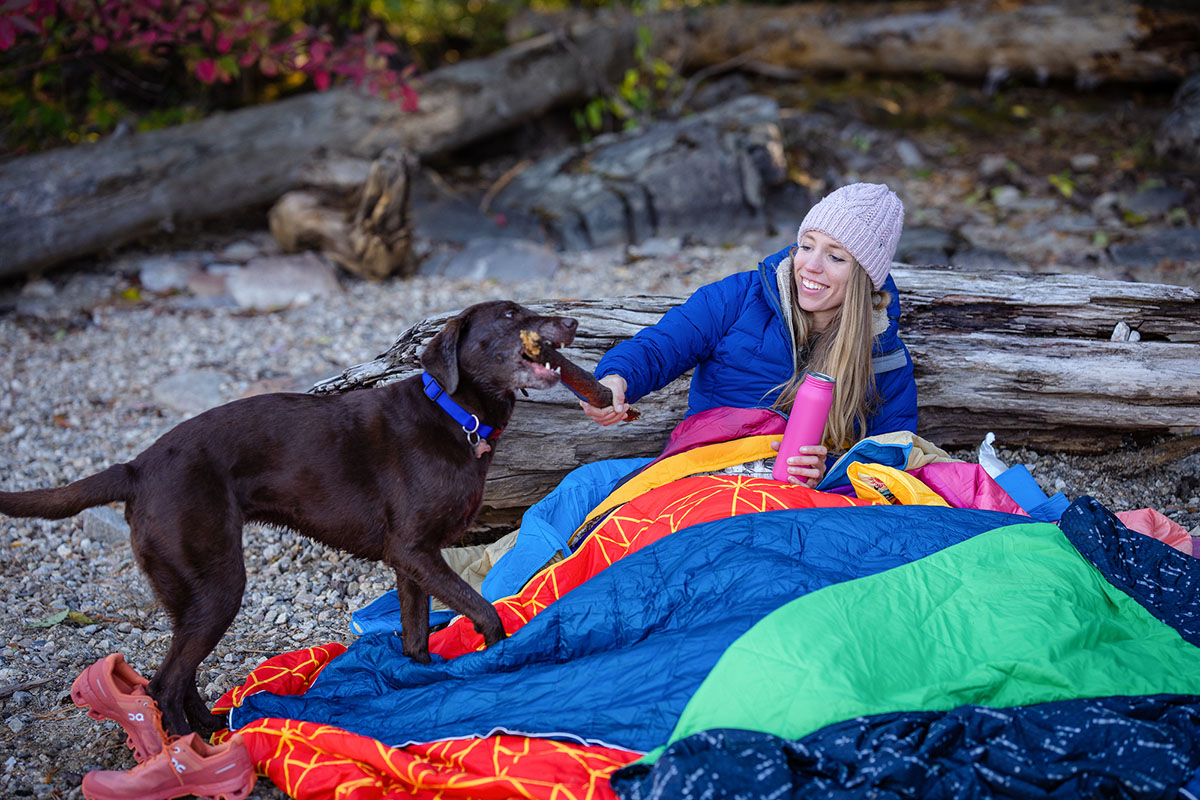
Additional Car Camping Tips
- Be sure to confirm ahead of time which amenities (if any) will be available to you. Will your campsite have a fire pit and/or picnic table? Are there bathrooms and/or showers on site? Will you have access to running water for filling up bottles and reservoirs?
- Check restrictions before you go to ensure you're up to date on current fire bans, required bear-proofing measures (such as bear canisters or bear bags for food), etc.
- When loading up your car, start with the biggest and heaviest items first (e.g., hard-sided coolers and water jugs) and stack smaller and lighter items on top. If you'll want quick access to something while driving to your campsite (such as food), be sure to separate it ahead of time.
- If you’re limited on space, consider using dedicated compression sacks for soft gear like clothing, sleeping bags, etc.
- Prep what you can at home to save time at camp and minimize the amount of gear you need to pack. Cut vegetables, marinate meats and stash them in a labeled Ziploc, pre-measure your spices and condiments, etc.
- Combine like-minded items in one container to make it easier to find what you’re looking for when you arrive: A tote with your tent, sleeping bag, and pad; a dedicated bin for kitchenware and cooking equipment; clothing in a duffel bag or suitcase, etc. We like to use clear plastic bins since they make it easy to see what’s inside at a glance.
- Use resealable bags for toiletries and other small items you don’t want to lose or get wet, such as lighters and matches.
- To maximize insulating performance, it’s best to pre-chill your cooler prior to loading it up by filling the interior with ice for at least a few hours. When you’re ready to hit the road, swap in some fresh ice along with your drinks and food (most brands recommend a 2:1 ice-to-food ratio).
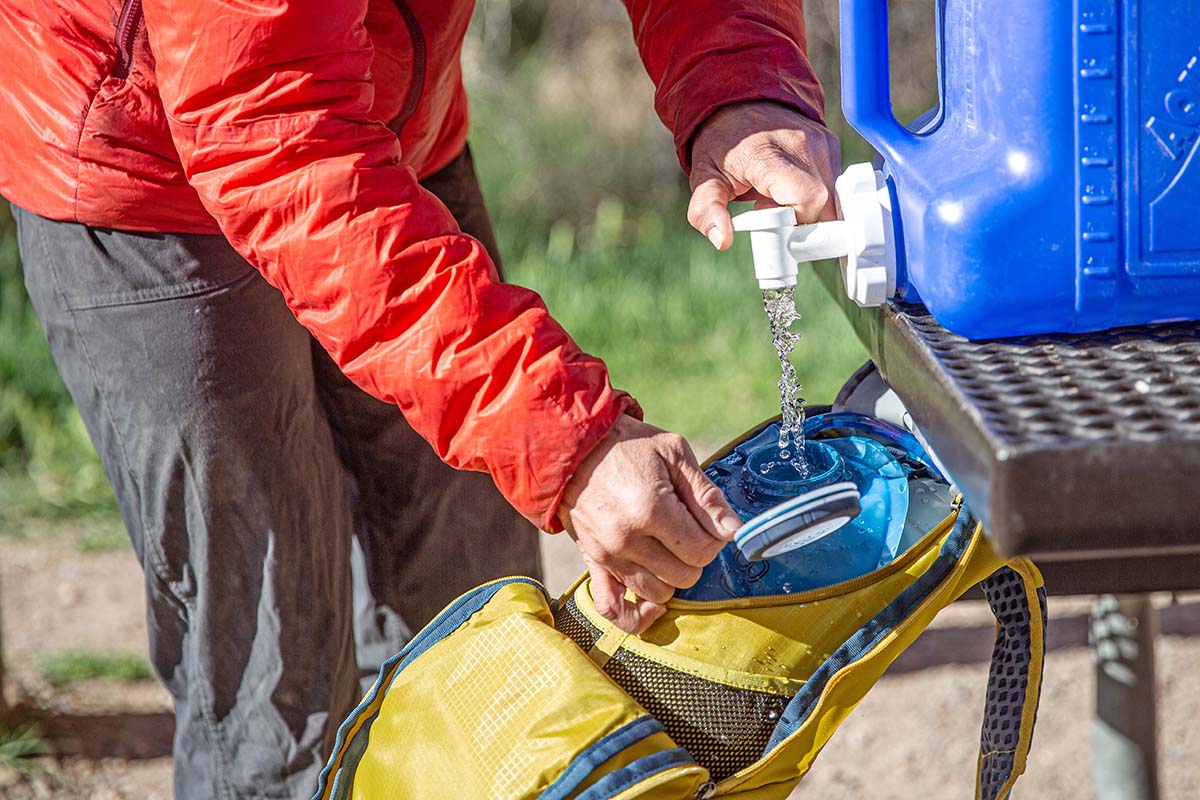
Where to Buy Camping Gear
When it comes to purchasing gear, we recommend supporting your local gear shop whenever possible—they are important community centers for outdoor enthusiasts, and chances are that the staff will have insider information about the surrounding wild spaces. That said, we tend to do the lion's share of our gear shopping at REI Co-op , which has over 100 brick-and-mortar locations across the U.S. and an excellent inventory both in-store and online. Another good option for online shopping is Backcountry.com , which offers free shipping on orders over $50 and excellent customer service. For cheaper items and those who need gear quickly, it’s hard to beat Amazon for the sheer volume of sellers and product options. It’s also worth checking to see if there is a consignment or used gear shop near you—buying secondhand does not necessarily mean sacrificing quality, and you also get to help keep equipment out of the landfill by giving it a second life. Back to Our Camping Checklist See Our Camping Gear Reviews
Learn More About Camping
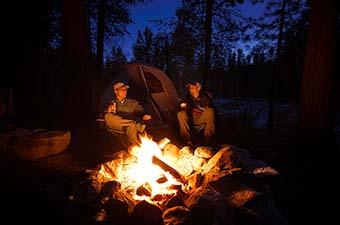
Camping Gear Reviews
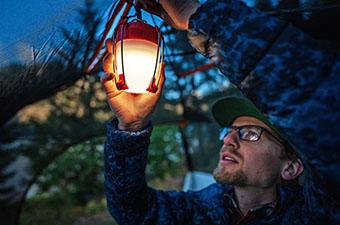
Best Camping Lanterns of 2024
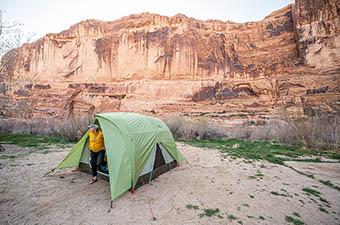
REI Co-op Wonderland Tent Review
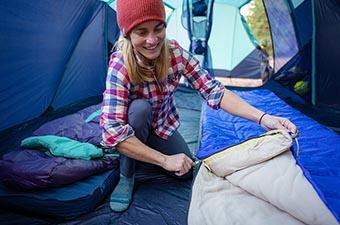
Best Camping Sleeping Bags of 2024
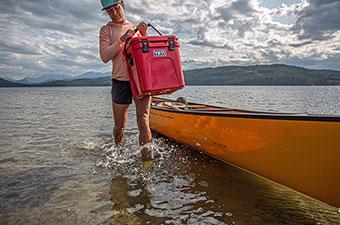
Yeti Roadie 24 Cooler Review
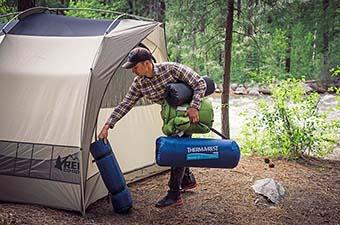
Best Camping Mattresses of 2024
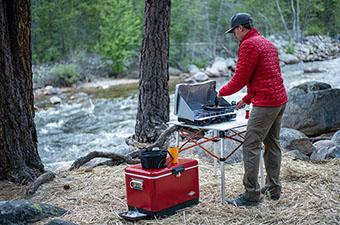
How to Choose a Camping Stove
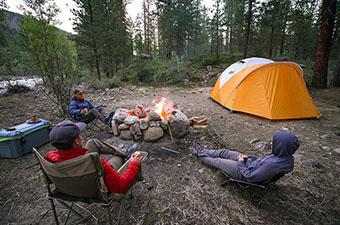
Good Camping Gear on a Budget
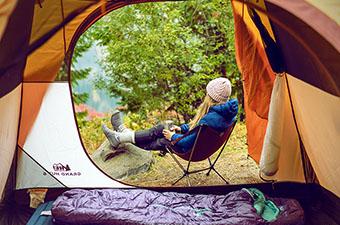
Best Camping Chairs of 2024

Mobile Menu
Megamenu - desktop hamburger menu.
- Hiking Gear
- Backpacking Gear
- Biking Gear
- Camping Gear
- Footwear Reviews
- Climbing Gear
- Skiing Gear
- Winter Gear Reviews
- In-Depth Gear Reviews
- Hiking Shoes
- Hiking Boots
- Trail Running Shoes
- Mountain Bike Shoes
- Approach Shoes
- Climbing Shoes
- Beginner Climbing Shoes
- Mountaineering Boots
- Winter Boots
- Rain Jackets
- Down Jackets
- Synthetic Jackets
- Fleece Jackets
- Hardshell Jackets
- Softshell Jackets
- Windbreaker Jackets
- Ski Jackets
- Winter Jackets
- Hiking Pants
- Trekking Poles
- Baby Carriers
- Running Vests
- Backpacking Tents
- Backpacking Packs
- Backpacking Sleeping Bags
- Backpacking Sleeping Pads
- Backpacking Stoves
- Backpacking Food
- Water Filters
- Altimeter Watches
- Handheld GPS
- Mountain Bike Helmets
- Mountain Bikes
- Mountain Bikes Under $1,000
- Mountain Bikes Under $2,000
- Gravel Bikes
- Bike Brands
- Kids' Bikes
- Hitch Bike Racks
- Camping Tents
- Rooftop Tents
- Camping Sleeping Bags
- Camping Mattresses
- Camping Chairs
- Camping Stoves
- Duffel Bags
- Rock Climbing Shoes
- Climbing Helmets
- Climbing Harnesses
- Climbing Quickdraws
- Belay Devices
- Climbing Ropes
- Climbing Backpacks
- Winter Gloves
- 4-Season Tents
- Ski Helmets
- Ski Goggles
- Ski Backpacks
- All-Mountain Skis
- Ski Bindings
- Backcountry Skis
- Backcountry Ski Boots
- Skis for Beginners
- Hardpack Skis
- Mirrorless Cameras
- Full-Frame Cameras
- DSLR Cameras
- Point-and-Shoot Cameras
- Travel Cameras
- DSLR Lenses
- Mirrorless Lenses
- Lofoten Islands
- Lofoten Hiking
- Hardangervidda
- Jotunheimen
- 10 Great Norway Hikes
- Public Huts
- Torres del Paine
- Chalten and Glaciares
- Lake District
- Patagonia National Park
- Milford Sound
- Abel Tasman
- Marlborough
- Great Walks
- Adventure Towns
Add adventure to your inbox
- Privacy Policy
- Terms of Service
© 2024 Switchback Travel. All Rights Reserved. No part of this site may be reproduced without our written permission.
- Search Please fill out this field.
- Newsletters
Everything You Should Pack for a Camping Trip
Jamie Hergenrader is the Commerce Director of the Travel Group at Dotdash Meredith where she leads the content strategy of product reviews and recommendations for the company's travel brands. She joined the company in 2018 and has nearly a decade of experience writing and editing for travel and lifestyle publications.
Of all the outdoor adventures and activities you might enjoy, camping requires one of the most robust packing checklists. Assuming that you are car camping—and not trying to whittle down your belongings for a backpacking trip —you’re essentially creating a temporary home from scratch in the great outdoors, so you need all the essential items for sleeping, cooking, exploring, and setting up a safe and comfortable campsite. Use this complete checklist to make sure you’ve got everything you need for your next night under the stars.
When gathering all your gear for a camping trip, it’s helpful to categorize the things you need by how you’ll be spending your time. That goes for both time of day (e.g. the items you’ll need to sleep at night) as well as the activities you plan on doing there (e.g. whether you plan to hike or dive into a good book by the campfire). Use these categories below as you’re packing to stay organized.
- Tent: This is probably the most obvious item you’ll need to bring when camping, but it can be easy to forget all the necessary pieces. Besides the tent itself , you’ll also want to make sure you have all the necessary stakes, as well as a footprint to protect it from dirt and moisture on the ground, and a rainfly to keep you dry if weather takes a turn. It’s also helpful to bring a mallet for wedging your stakes into tougher ground, plus a small tent repair kit should your tent need some maintenance during your trip.
- Sleeping Bags: Bring a sleeping bag that’s fit for the conditions and temperatures of your destination and one you’ll be comfortable in. For couples, sometimes a double-wide sleeping bag is preferable.
- Sleeping Pads: For a comfortable night’s sleep, bring a sleeping pad —you can choose from a variety of types, such as inflatable, insulated, and more.
- Pillows: Depending on how much space you have in your car, you can bring true camping pillows that are more compact but usually less comfortable, or you can bring pillows that you use at home.
- Sleepwear: Pack clothing that’s comfortable to sleep in as well as comfortable to walk around in for bathroom runs to avoid middle-of-the-night clothing changes in your tent.
- Eye Mask and Ear Plugs: Some perks of sleeping outside—the sound of birds chirping and those gorgeous morning rays—are less ideal first thing in the morning. These will help you score just a little more sleep .
Campsite Essentials
- Lanterns and Flashlights: You’ll need ample light at your site for both safety and enjoyment. Bring a couple lanterns to place on the table or in your tent, as well as flashlights or headlamps for walking around in the dark. (Pro tip: If you’ll be setting up a tent in the dark, headlamps are the way to go to keep you hands-free.) You can also buy some string lights to set up at your campsite to add a little extra ambiance. Remember to pack extra batteries or any necessary charging cables for any light sources.
- Camping Chairs: Bring foldable chairs to set up around the campfire; bonus if they have cup holders.
- Camping Table: Many campsites come with a picnic table. If yours doesn’t, bringing your own is useful to have a place for cooking, playing games, and organizing your belongings.
- Firewood: If you plan to have a campfire, you’ll need several bundles of wood depending on the length of your stay. However, many campgrounds and regions in the country require that you purchase firewood within a certain mileage of the campsite to prevent the spread of invasive species, so check your site’s policy first.
- Fire Starter: Not required, but using fire starter or charcoal can help you get the flames going more easily, so you can spend more time enjoying the fire than creating it.
- Matches and Lighter: One or the other will do, but it’s best to bring both.
Toiletries and Personal Items
Some personal toiletry items might seem obvious to have, but it’s still helpful to put them on your checklist anyway so that you don’t have to run an errand on your trip because you forgot. These include toothbrush and toothpaste (some campers prefer tablets for the latter for ease of packing); shampoo, conditioner, soap, and towel for showering; and any other personal products you’ll need on your trip, such as a razor, contact lenses, or feminine products. Here are some other items that should be on your list.
- First Aid Kit: This is always a good idea to have on hand for any accidents, and ideally should include some basic medications (ibuprofen, allergy medicine, etc.) as well as various bandages, gloves, antibiotic ointment, and other common needs. ( Here’s a good option. ) Whichever kind you buy, be sure to open it up and get to know its contents before you head out, so that in case you end up needing it, you know exactly what you have and where it is.
- Insect Repellant: Bug spray with DEET is best for optimal protection for your body, and you can also buy citronella-based products to disperse around your campsite to keep bugs away.
- Sunscreen: Always pack sunscreen and apply frequently, especially if you’re headed for higher elevation.
- Sunglasses: Any UV-blocking lenses will do, and consider packing a polarized pair if you’re spending a lot of time out in water to block glare.
- Hand Sanitizer: Some campsite bathrooms are better stocked than others, so just in case, it’s wise to keep hand sanitizer handy for when the soap dispensers are empty.
- Toilet Paper: Similarly, bringing your own roll of TP can be useful for times when it’s missing in stalls or for when you’re out exploring for the day with no bathroom access.
Meals and Cookware
Plan out your meals in advance of your trip so that you can gather the necessary ingredients, tools, and accessories. Here’s a list, in chronological order of use to help you think through what you’ll need, step by step.
Food prep: Think about what you’re making, and what kind of prep will go into it. Do you need a sharp knife for chopping up vegetables? If so, you’ll also likely need a cutting board. Some people prefer to prepare their ingredients at home and pack in bags or containers, but if you like to do it at your campsite, it might be useful to buy a set that includes all these things. Pack all of your perishables into a cooler with ice or ice packs to keep food and drinks fresh until you need them.
Cooking: Again, refer to your list of planned meals to know what cookware to bring. In general, though, it’s helpful to have at least one pot and one pan. If you’ll be cooking directly over fire, a cast iron pan is your best bet, and you’ll want to bring a campfire grill grate (or check to see if your campsite already has one). If you’re using a camping stove (in which case, you might also need to pack propane), any pots and pans that fit will do. Don’t forget utensils and tools you’ll need for cooking, as well. Do you need a spatula for flipping eggs or burgers? A spoon for stirring sauces or serving soup? Tongs for grilling hot dogs over the fire? Skewers for roasting marshmallows? While you can bring a lot of this from your home kitchen, it’s helpful to buy a full cookware set that includes most of these items; you won’t have to rummage through your kitchen, and it’s compact and portable for quick packing. Don’t forget to bring oven mitts or pot holders to handle hot pans, especially if you’re cooking over a fire. And stash a bottle of olive oil or butter as well as salt and pepper in your cookware bag for easy seasoning.
Drinking: What will you be drinking? If you like to have coffee or tea in the mornings , bring a kettle or other device for heating water, plus an insulated thermos or mug for sipping. For beer or wine, be sure to bring a bottle opener and corkscrew, plus a koozie or other vessel for indulging. And always pack a few reusable water bottles on any trip to stay hydrated.
Eating: Besides the actual food, make sure you have all the items you’ll need for when you sit down to actually eat your hard-earned meal, including plates or bowls, plus forks, knives, and spoons.
Cleaning: Once you’ve enjoyed your meal, you’ll need to clean up properly. Pack a sponge and dish soap for scrubbing all your cookware, cloth or paper towels for drying, plus trash bags for collecting all of your scraps and waste. (Depending on where you’re camping, remember to be bear-aware when cleaning up food at a campsite, making sure food scraps and trash is out of reach and sight—usually it’s best to keep all these things inside your car and never a tent or left out in the open.) You might want to keep two separate bags for trash and recycling. And pack a few reusable bags or containers to store leftovers.
Clothing and Accessories
As with any other trip, the clothes you pack should be suitable for how you plan to spend your time and also for what the forecast will be wherever you’re heading. For instance, if you’re planning a getaway to a lake or beach destination, be sure to pack a swimsuit, goggles, hat, flip-flops, and beach towel. If you’re more of a woodland explorer, pack your hiking gear, such as hiking boots , appropriate hiking attire , and a day pack to explore the trails near your campsite. Check the weather before you go to determine the layers you might need, and remember that if you’re heading up to higher elevation for a mountain getaway, temperatures tend to be cooler, especially in the evenings, so it might be wise to pack extra layers and blankets, warm closed-toe shoes, and potentially a hat and gloves. It’s also a good idea to always have an umbrella or rain jacket just in case.
Electronics
The electronics you need are also dependent on what you’ll be doing, but here are some you might want to consider bringing.
- Portable Chargers: Bring a battery pack and any necessary cables to charge your phone or any other rechargeable devices.
- Extra Batteries: Similarly, if anything you’re bringing requires batteries—lanterns or flashlights—have some extra batteries on hand.
- Bluetooth Speaker: Pack a portable speaker to play some music while you’re relaxing at your campsite. Just remember to keep the volume at a respectable level for your neighbors and also obey any quiet hours of the campground.
Related Articles
More related articles.

Yellowstone: The Ultimate Packing List
- Travel Tips , USA
- September 10, 2024
- National Parks , Packing Lists , Wyoming , Yellowstone

Last Updated on: 26th March 2024, 06:01 pm
K nown for its hydrothermal features and wildlife, Yellowstone National Park is one of the largest parks in the country. Most people visit in summer, but at 7,733 feet (2,357 m) above sea level, temperatures can fluctuate greatly throughout the day. Furthermore, this being bear country, you’ll need to take special precautions to ensure a smooth and safe trip. Assuming you’re visiting in a warmer month, this Yellowstone packing list covers all the essentials.
The following list is divided into three main sections: General Items, Camping Gear and Hiking Gear. While many of the links below are Amazon affiliate links, online shopping is indeed often the best option when it comes to preparing for outdoor trips.
When outdoor shopping in the US, you often just have a few choices: Walmart, which has an extensive product range but with many items that break easily, or REI, which is of higher quality but outrageously overpriced. Online shopping, therefore, is often a comfortable middle ground.
By clicking on the links below, we will receive a small commission at no extra cost to you. But regardless of where you shop, this Yellowstone packing list is intended to make sure you have a hassle-free trip.
For what it’s worth, Jackson, Wyoming does feature a REI. But if you’re coming from Salt Lake City, consider checking out a local outdoor shop there such as Recreation Outlet.
General Items

Yellowstone Guidebooks
Having a physical guidebook can really come in handy when at a National Park – especially one as big as Yellowstone. While I didn’t happen to have a dedicated guidebook to Yellowstone during my trip, I was traveling with a copy of Moon USA National Parks: The Complete Guide to All 63 Parks .
Even though the coverage of each park was relatively brief, I still found it quite helpful, especially when I needed to refresh my memory about something in a place with no signal.
It turns out that the same author, Becky Lomax, has also written a dedicated Yellowstone guide called Moon Yellowstone & Grand Teton: Including Jackson Hole .
Another guidebook that looks promising, meanwhile is Compass American Guides: Yellowstone and Grand Teton National Parks by Fodor’s.
When exploring a park as massive as Yellowstone that also lacks cellphone reception, having a physical map can be very helpful. This foldable map by National Geographic is one of the most detailed maps of the park out there.
Also be sure to get the free Maps.me app on your phone. It works offline, but don’t forget to download the map for Wyoming in advance.
Sun Protection
Sunscreen is a must when doing any outdoor activity in summer. At some of Yellowstone’s larger geyser basins, you may end up walking around for hours, so be sure to apply some in the morning or bring a small container of sunscreen with you in your bag.
Also be sure to bring a hat and sunglasses.
Water Bottle
When visiting in summer, you’ll always want to carry a bottle of water with you, as time can fly by quickly when you’re out exploring. But choosing the right one can be tricky, as you’ll want a size that’s compatible with your bag or day pack.
I’ve been using this 28 oz Contigo water bottle for the last few years and highly recommend it.
You should always be prepared for rain at Yellowstone. But you also probably wouldn’t want to drag a thick and cumbersome raincoat with you, either.
Therefore, consider something light that won’t take up much space in your daypack. This seems like a great lightweight option for men, while this is one of the most popular lightweight options for women.
First-Aid Kit
It’s always a good idea to have a First-Aid Kit handy when exploring a remote National Park. This first-aid kit has everything you need for minor cuts, scrapes and more.
While Yellowstone has an abundance of general stores that will sell what you need, it’s always a good idea to have something in your car in case you get hurt in a remote part of the park.
You should definitely make a habit of having bear spray on you at all times at Yellowstone. While you can find some good deals online , you’re not allowed to fly with bear spray, so you’ll have to buy it locally unless you’re driving from home.
Most on-site gift shops do sell bear spray, albeit for a slightly inflated price.
You might want to consider bringing binoculars to Yellowstone to better see animals in the distance. Binoculars are an item that haven’t been replaced by modern technology, yet one that few people seem to buy anymore. If you’re purchasing a new pair, there are a few things to consider.
If your binoculars are of too poor quality, you likely won’t end up using them much at all. That’s what happened to me with an affordable pair I picked up in Salt Lake City. On the other hand, it’s only worth buying an expensive pair if you plan on using it multiple times.
For what it’s worth, this affordable pair has thousands of positive reviews on Amazon, while this higher-end pair is also highly rated.
If you’re a photographer, be sure to bring a zoom lens for shooting wildlife. If you already have a DSLR or mirrorless camera, I recommend this 70-300 mm lenses by Tamron .
Unfortunately, prices seem to have gone up over the last several years. Nevertheless, they’re still cheaper than many of the first-party zoom lenses out there (at least if you have a full frame camera). While I use a Canon, you should find a version suited for your particular brand.
Warm Clothing
Even when visiting in summer, warm clothing at Yellowstone is an absolute must if you’ll be camping. Give the park’s high elevation, things can get very cold at night.
But even if you’re not camping, be sure to bring some warm clothing anyway, especially if you’ll be doing any exploring in the early mornings.

Camping Gear
Yellowstone National Park is a great place to camp. Even if you’re not that into camping, there are a few good reasons to camp in the park.
First of all, it will save you lots of money, as lodging within the park can go for hundreds of dollars per night. Most campsites, in contrast, can be booked for roughly $40 per night.
Another major reason is that staying within the park will save you lots of time. There aren’t any major town right by the park, so staying inside the park will allow you to see so much more during your visit.
Be sure to check our detailed Yellowstone itinerary for details on which campgrounds to choose.

When it comes to tents, Coleman is a trusted brand, and this model comes in various sizes depending on how many people you intend to fit inside.
Don’t make the mistake of buying a cheap Ozark tent from Walmart. That’s what I did earlier on in my road trip, but the poles snapped due to wind on the very first night! I ended up needing to buy a brand new tent before my visit to Yellowstone.
Sleeping Bag
As mentioned, Yellowstone can get quite cold at night – even in summer. As such, you might want to consider a cold-weather sleeping bag like this one by Coleman. This compact sleeping bag , meanwhile, is suited for a wide variety of weather conditions.
Sleeping Pad
A sleeping pad is essential for a comfortable camping experience. But they can often be quite expensive, not to mention cumbersome. If you’re not someone who camps all the time, consider getting a cheap one so that you won’t feel guilty about throwing it away after your trip.
Out of all the products that have nearly five stars on Amazon, this is the cheapest foam pad, while this is the cheapest inflatable pad.
A headlamp is vital if you’re camping. While not the cheapest option out there, I’ve been using a Black Diamond headlamp for the last couple of years, and it still works great.
Even with a great headlamp or flashlight, relying on it for everything can be a pain. Lanterns are great to have in your tent and also at your picnic table. This set is very affordable and has great reviews.
Portable Stove
Even if you just want to make coffee, it’s great to have a portable stove with you while camping. I’m a big fan of this stove by Coleman which works with butane gas canisters.
Unfortunately, however, following my purchase, I had the hardest time finding the proper canisters. I went to a Walmart, Target, Lowe’s and Dick’s Sporting Goods, but NONE of them carried the right canisters. Upon the recommendation of a sales staff, I went to a smoke shop and sure enough, they had them!
To my surprise, I did see butane gas canisters at one of the Yellowstone gift shops. But I wouldn’t count on them always being in stock.
Throughout my hunt, I noticed that propane canisters seem to be a lot easier to find. Interestingly, this stove looks very similar and it takes both butane and propane canisters.
Camp Cooking Essentials
If you’re going to cook, you’re obviously going to need a pan, pot, utensils and plates. Unless you’re camping all the time, I wouldn’t worry about going all out with cookware specifically designed for camping.
This cookware set comes with a pot, pan, cups and some plates for a very decent price. But this is one area where you should be fine with cheap Walmart stuff, as it’s unlikely to break.
French Press
If you need your caffeine each morning but can’t stand the taste of instant, consider buying a portable French press. A typical glass one won’t do, of course, as they can easily break.
During my trip, I used a stainless steel French press by Poliviar which was very sturdy and did the job perfectly.
Obviously, a cooler is a must if you’ll be doing any kind of cooking at Yellowstone. You’ll be able to find ice at many of the local shops.
What size cooler you buy, of course, is going to depend on how many people there are in your party and how long you’ll be staying. But for many, this 50-quart wheeled cooler by Coleman seems like a great choice.
Foldable Chairs
When it comes to foldable chairs for camping, you can’t go wrong with these chairs by Coleman . But this is another area where you might be better off with cheap Walmart chairs. They were going for as low as $8 the last time I was there!
If you’ll be camping at Yellowstone, you won’t have an opportunity to charge your phone at night. And considering how vital phones are for navigation, you definitely won’t want your phone to run out of juice.
This is one of the most affordable power banks out there and it goes for a very reasonable price.
A major downside of camping at Yellowstone is that you’ll likely be quite close to other campers. If your neighbors are quiet and respectful, then it won’t be a problem. But if they’re not, you’re going to want to sleep with earplugs.
Garbage Bags
When camping in bear country, bear mindfulness is of utmost importance. You never want to leave out food waste, especially overnight. You’ll want to have plenty of garbage bags on hand, as you’ll be constantly cleaning up after yourself.
Fortunately, every campsite is home to multiple bear-proof dumpsters. Otherwise, you can leave your garbage inside your car.
Hiking Gear
Yellowstone is not exactly a hiker’s park. With that said, there are numerous short hikes you can experience in the park, while the Mount Washburn Trail is said to be Yellowstone’s most strenuous.
As many people combine visits to Yellowstone with other parks such as Grand Teton or Glacier, the following items will also come in handy throughout the rest of your roadtrip.

Hiking Boots
As mentioned, Yellowstone doesn’t feature too many strenuous trails, though hiking boots will come in handy regardless. Shortly before my trip, I replaced my older boots with these lightweight hiking boots by La Sportiva . While it’s still too early to tell how well they hold up long-term, I can confirm that they are quite comfortable.
If you’re simply sticking to easier hikes, you should be find in a good pair of tennis shoes, while trail runners are also an excellent choice.
Hiking boots don’t go well with regular socks. And if you’re new to hiking, you’ll have to invest in some high-quality wool socks.
Annoyingly, however, wool socks can be shockingly expensive at stores like REI. Fortunately, there are much better deals online, and this is one of the best values I was able to find.
While slightly more expensive, these socks have an ‘Anti-Hole Guarantee.’
Trekking Poles
You probably won’t need trekking poles in Yellowstone, though they can come in handy for hikes like Bunsen Peak or Mount Washburn. But if you’re also visiting somewhere like Glacier, you’ll definitely want them.
While high-end trekking poles can be expensive, in many cases, you’ll be fine with something more budget-friendly. These poles by Trekology are highly rated and seem to often go on sale.
Hiking Pants
As Yellowstone can get chilly at times, you might want to consider wearing hiking pants.
These are some of the top-selling pants for men, while these are popular pants for women.
Alltrails or onX Backcountry Subscription
As mentioned above, Maps.me is a free app that works offline. But if you’ll be doing a lot of hiking in Yellowstone and in other nearby parks, you’ll thank yourself for buying a subscription to either AllTrails or onX Backcountry .
Both apps cost around $30 per year, and paying for a subscription allows you to access specific trail maps offline. Needless to say, this is vital in areas that lack reception.
You Might Also Like:

Exploring the Extraordinary White Pocket

Hiking Fiery Furnace: A Hike Unlike Any Other

Top 5 Things to Do in Death Valley

The Valley of Dreams: Hiking to The Alien Throne

The Monument Valley Scenic Drive: A Complete Guide

North Yellowstone: Mammoth Hot Springs & Bunsen Peak

Hiking Through the Marble Mountains of Da Nang

A Weekend in Konya: Experiencing the Legacy of Rumi

A Weekend in Korçë: Albania’s Most Charming City

Top 5 Things to Do in Central Ubud

Street Art: Mexico City

Street Art: St. Louis
Turn your travel photos into cherished memories with our Lightroom Presets!

This Havasupai Packing List Has Everything You Need for a Perfect Backpacking Trip
There may be some affiliate links on this page, which means when you click we get a small percentage of the purchase at no extra cost to you. This allows us to keep this page running. Enjoy!
Last Updated on September 10, 2024 by Sarah Puckett
Backpacking to Havasupai is a breathtaking adventure, but being well-prepared is essential. Whether you’re a seasoned backpacker or a first-timer, having the right gear will ensure a safe and comfortable trip to the stunning turquoise waterfalls and canyons. Here’s a detailed packing list to help you get ready for your Havasupai adventure.

Follow the seven Leave No Trace principles: plan your hike in advance, stick to designated trails, carry out all your belongings, dispose of waste properly, leave natural areas untouched, minimize the impact of campfires, show consideration for fellow hikers, and avoid approaching or feeding wildlife.
Table of Contents
Shop This Havasupai Packing List
Just click here or below to shop the full list!
1. Backpacking Gear Essentials
- Backpack (50-65L) : Opt for a durable, comfortable pack with a well-fitted hip belt and padded shoulder straps. This will help you carry your gear more efficiently.
- Hydration System : Hike in with at least 3 liters of water. Hydration bladders with bite valves (like CamelBaks) are ideal, paired with water bottles for easy access.
- Lightweight Tent : A freestanding, waterproof, two-person tent with a rainfly will protect you from unpredictable desert weather. Make sure it packs down small.
- Sleeping Bag (20°F rating) : Nights in the canyon can be cool, so a lightweight, compressible sleeping bag rated for cooler temperatures will keep you warm.
- Sleeping Pad : Choose an inflatable sleeping pad for added comfort and insulation. It’s important to stay warm on cool desert nights.
- Headlamp with Extra Batteries : Essential for navigating in low-light conditions, whether setting up camp after dark or exploring the waterfalls at dawn.
- Trekking Poles : These can reduce strain on your knees, especially on the steep, rocky descent into the canyon.
2. Clothing and Footwear
Pack lightweight, moisture-wicking clothing for hiking during the day and layers for cooler evenings. Plan for the hot desert sun as well as potential rainstorms.
- Hiking Boots : Sturdy, broken-in, waterproof boots with good ankle support will protect your feet over rocky terrain.
- Camp Shoes ( Sandals ) : After a long hike, give your feet a rest with lightweight, comfortable sandals for relaxing at camp or walking through shallow water.
- Moisture-Wicking Hiking Socks (3 pairs) : Keep your feet dry and blister-free with merino wool or synthetic socks.
- Quick-Dry Base Layers : Wear moisture-wicking shirts and shorts or pants for hiking. Quick-dry materials help regulate body temperature.
- Insulating Layers : A fleece jacket or lightweight down jacket will keep you warm in the mornings and evenings.
- Rain Gear : Pack a waterproof jacket and pants. Sudden desert rainstorms can occur, and you’ll want to stay dry.
- Hat & Sunglasses : Protect yourself from the intense desert sun with a wide-brimmed hat and UV-protective sunglasses .
- Swimsuit : For swimming in the crystal-clear waters of Havasu Falls, Beaver Falls, and Mooney Falls.
3. Water and Food Supplies
- Water Filtration System : Bring a lightweight, reliable water filter like a Sawyer Squeeze or Lifestraw . Water is available at the campground, but you should be prepared to filter water along the trail.
- Electrolyte Tablets or Powder : Hydrate effectively and replace lost electrolytes , especially in the heat.
- Backpacking Stove & Fuel : A compact stove like a Jetboil will allow you to cook meals. Don’t forget to pack enough fuel for your trip.
- Lightweight Cooking Pot : For boiling water or cooking meals.
- Utensils ( spork , cup, and bowl) : A collapsible or lightweight set for eating and drinking.
- Bear-Proof Food Storage : Store your food in odor-proof bags or a bear canister to keep animals from getting into your supplies.
- Freeze-Dried Meals & Snacks : Pack easy, lightweight meals like Mountain House or dehydrated meals. Also bring energy bars, nuts, jerky, or trail mix for quick snacks on the trail.
4. Personal Items and Toiletries
- First Aid Kit : Pack a lightweight first aid kit that includes bandages, moleskin for blisters, antiseptic wipes, and any personal medications.
- Sunscreen & Lip Balm : High SPF sunscreen and lip balm to protect from intense sun exposure.
- Insect Repellent : The canyon can have bugs, so pack a lightweight repellent to keep them at bay.
- Biodegradable Soap : Keep clean at the campgrounds or after swimming in the waterfalls. Dr. Bronner’s soap is a popular, eco-friendly choice.
- Microfiber Towel : A lightweight, quick-drying towel for after swimming or rinsing off.
- Toilet Paper & Trowel : If nature calls while you’re hiking, be prepared with a small trowel to dig a cat hole and pack out any used toilet paper.
5. Navigation and Safety
- Permit : You need a reservation and permit to camp in Havasupai. Print a copy and keep it accessible.
- Map & Compass : Download maps on your phone using apps like AllTrails or Gaia GPS, but also carry a physical map in case your device dies.
Find your next hike
Get AllTrails+ Free for One Week
Download trail maps directly to your phone, see trail reviews and photos, and search popular hikes anywhere around the world.
- Phone Charger/ Power Bank : Solar chargers or portable battery packs can keep your phone charged for photos and navigation.
- Multi-tool or Knife : Handy for repairs, cooking, or emergencies.
- Whistle : Useful for signaling in case of emergency.
6. Photography and Miscellaneous Gear
- Camera : The beauty of Havasupai is unparalleled, so bring a lightweight camera , like Insta360 or GoPro to capture the turquoise waterfalls and canyons.
- Tripod (Optional) : If you’re into photography, a small, portable tripod can help capture stunning landscape shots.
- Dry Bag : For keeping electronics or clothing dry when swimming or if it rains.
- Trash Bags : Follow Leave No Trace principles and pack out all your trash. A couple of large ziplock bags are useful for keeping trash contained.
7. Optional Luxury Items
- Hammock : Many campers enjoy setting up a hammock to relax by the river or the falls.
- Portable Chair : A lightweight camping chair is a nice option for lounging at camp.
- Journal and Pen : If you want to capture your experience on paper, a small notebook can be a great companion.
Final Tips for Backpacking Havasupai
- Train in Advance : Make sure you’re physically prepared for the 10-mile hike down to the campground, especially since the hike out is mostly uphill.
- Respect Local Guidelines : Havasupai is sacred to the Havasupai tribe. Follow all rules and respect the environment to preserve the natural beauty of this special place.
By following this comprehensive packing list, you’ll be prepared for an unforgettable backpacking experience to Havasupai’s awe-inspiring waterfalls and landscapes.
Don’t forget to check weather conditions and campground regulations before your trip!
Check out our comprehensive guide to backpacking Havasupai for more expert advice for planning your trip!
Similar Posts

Hermit Trail to Santa Maria Spring – Grand Canyon National Park’s Most Underrated South Rim Hike

Things to Do in Bozeman, Montana for Outdoor Lovers

Sunrise Vs Sunset at Delicate Arch: Which is Better?

35+ Unique Things to Do in Sedona, Arizona

Ultimate Guide to Hiking the Wave in 2024

Clear Lake Loop: Guide to Yellowstone’s BEST Hike
Leave a reply cancel reply.
Your email address will not be published. Required fields are marked *
Save my name, email, and website in this browser for the next time I comment.
This site uses Akismet to reduce spam. Learn how your comment data is processed .
Browse links
- © 2024 BuzzFeed, Inc
- Consent Preferences
- Accessibility Statement
Beauty + Personal Care
Sports + Fitness
We hope you love our recommendations! Some may have been sent as samples, but all were independently selected by our editors. Just FYI, BuzzFeed and its publishing partners may collect a share of sales and/or other compensation from the links on this page.
The Camping Safety Items You Should Have On Hand, According To Experts
These fire starters, knives and other emergency essentials will keep you safe and secure on your camping trip.

HuffPost Staff
Safety and emergency preparedness are typically two notions that most folks already take into consideration when it comes to camping and outdoor adventures. That still doesn’t mean it’s not important to take stock of what’s in your current stash of gear or, if you’re a wilderness newbie, to learn what essentials to take.

Cody Lundin is an Arizona-based survival instructor who teaches primitive living skills and urban preparedness. He said that the specific essential gear that a person takes outdoors is really based upon “their bioregion, the intention of the trip, personal skill level and experience.”
“In other words, if I head into the mountains with spruce and fir trees, or if I go into one of our four North American deserts, the gear that I carry may change to adapt to that specific landscape,” he said, adding that winter survival and desert survival are opposite outdoor temperature extremes that can kill the unprepared hiker or camper.
Regardless, Lundin said that there are items that have been carried in the wilderness for thousands of years by native peoples that are just as valid today in a modern outdoor survival kit.
So now that you’ve already got your tent, your sleeping bag is packed, and the s’mores provisions are locked and loaded, consider the following list of items that Ludin and other wilderness experts say they always bring out into the field — plus guidance on how to make your next camping trip safe and fun.
1. an emergency bivy sleep sack.

Author, survivalist and emergency prepping expert, M.D. Creekmore recommends an emergency bivy sleep sack, which, according to Creekmore, are different from traditional sleeping bags in that they are ultra-compact, lightweight, and designed to retain body heat.
"It's perfect for unexpected overnight stays in the wilderness, providing crucial warmth and shelter without adding much bulk to your kit," he said.
This particular bivy sack that we selected weighs barely over four ounces, folds up to a size of a soda can and features a 120-decibel safety whistle to alert for help if necessary. The puncture-resistant mylar material shields campers from rain, snow, and wind.
Get it from Amazon for $19.95 (available in four colors).
2. Stormproof strike anywhere matches and match safe
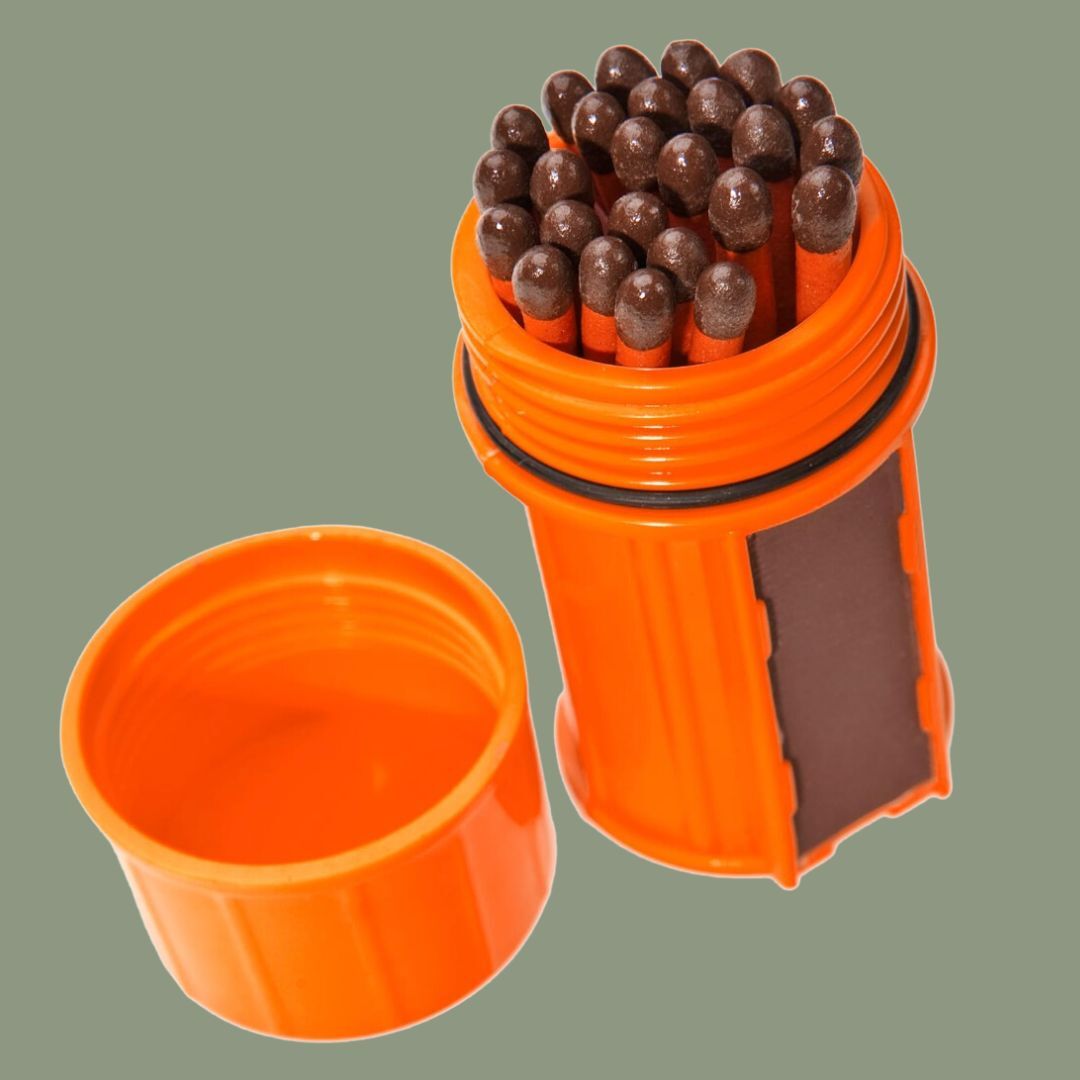
Survival instructor Cory Lundin stressed the importance of having fire in survival situations and the modern and reliable lighting tools to make one.
"I prefer a gross motor way to create fire, meaning that it is easier to do when stressed out, with cold hands, in inclement weather, or the dozens of other things that can go sideways in the wilderness," Ludin said. "Save the exotic fire by friction sets for having fun, making fun of crap TV survival shows, or showing off to your friends."
According to Ludin, he carries at least three different fire lighting methods in his personal kit because there are pros and cons to each type of ignition. One method is a pack of strike anywhere matches stored in a match safe. Based on this guidance, we chose this set of 25 storm- and wind-proof matches that are easy to light, will burn up to 15 seconds each and will relight even after being submerged in water. They come in a floating and waterproof matchbox that features an integrated and replaceable striker.
Get it from Amazon for $8.90+ (available in three colors).
3. A Ferro Rod fire starter

The Ferro Rod with striker is another fire lighting tool that came at the suggestion of Creekmore, as well as Lundin, who explained that it's a magnesium bar with a ferrocerium rod embedded in the side as an ignition source. The sharp-toothed sparker effectively shaves off hot ribbons of magnesium to make quick and easy work of lighting tinder. Creekmore suggests taking along cotton balls dipped in petroleum jelly when packing the Ferro Rod because these can help not only work as tinder for the fire, but also help sustain its burning for longer.
Get it from Amazon for $14.99+ (available in three styles).
4. A pack of three credit card-sized fresnel lenses
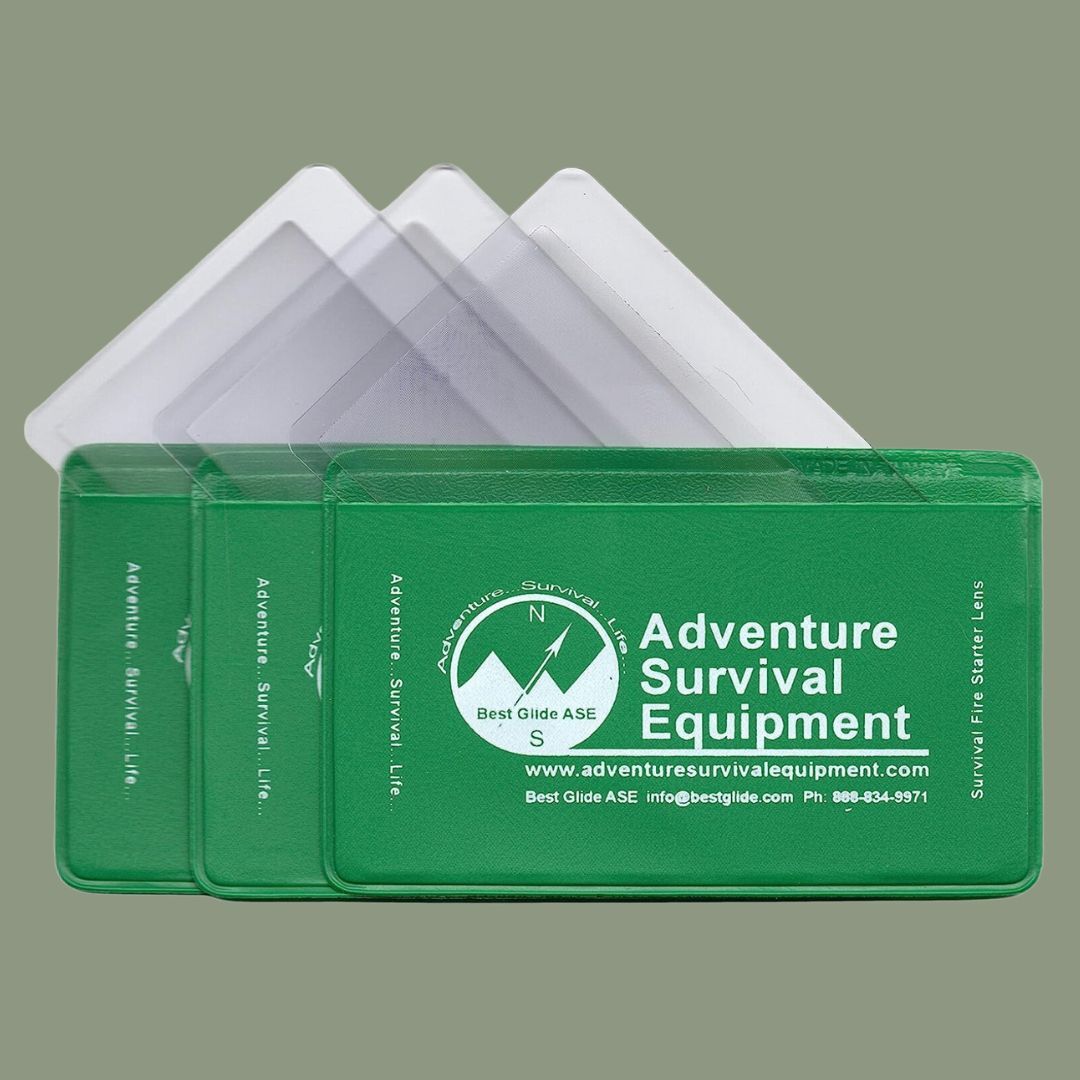
Lundin's final fire-starting tool in his kit are fresnel lenses which are the size of a credit card and use magnification to concentrate sunlight onto to tinder in order to ignite a flame.
"All firecraft demands a reasonable amount of skill and attention," said Lundin, who offers fire safety courses . He noted that hundreds of acres of wilderness are lost to forest fires each year, caused by careless campers with no working fire knowledge.
Get a three-pack from Amazon for $5.55 (available in three colors).
5. A robust knife with a continuous blade
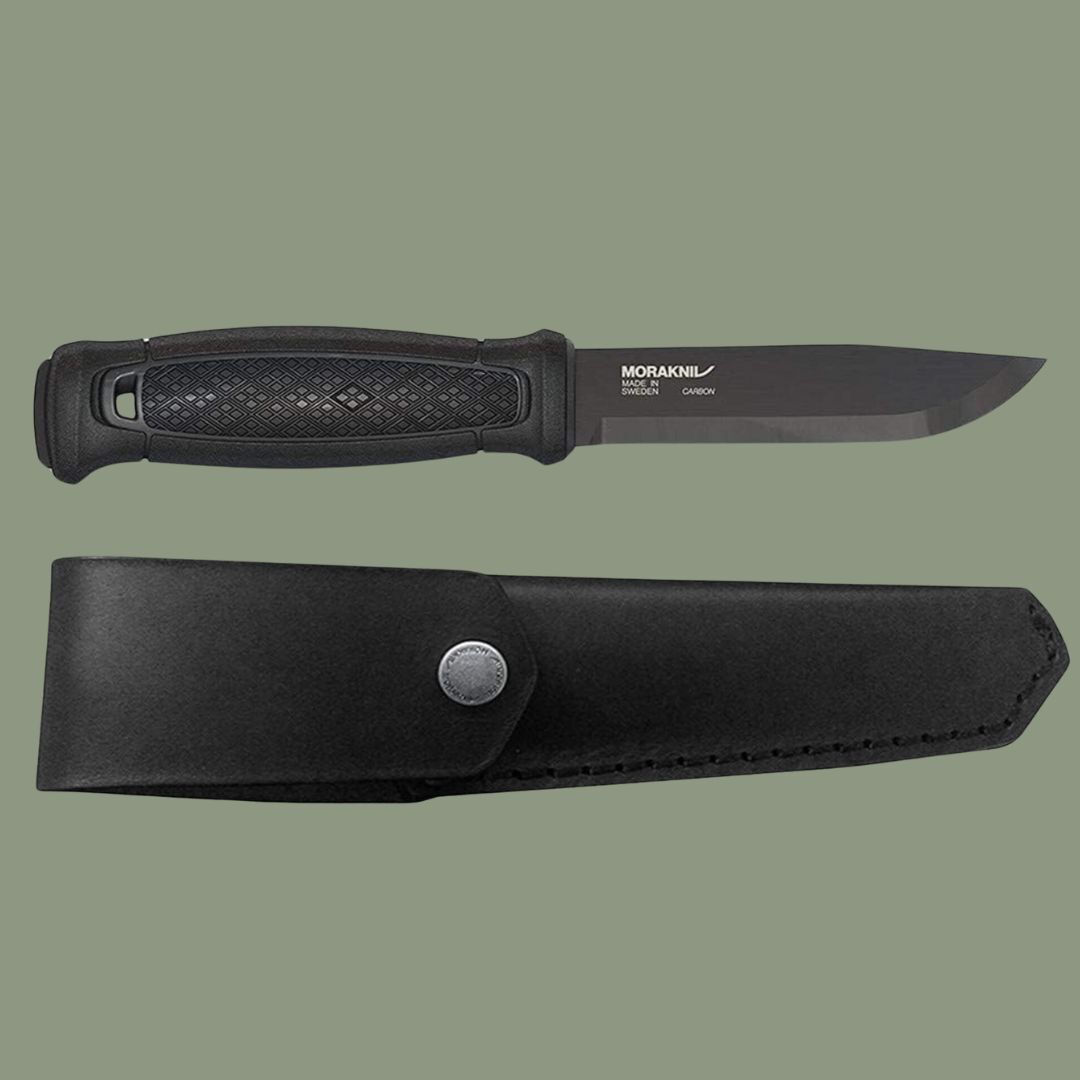
"This robust, full-tang knife is perfect for a variety of survival tasks, from cutting and carving to gutting and skinning game," Creekmore said of the Morakniv Garberg knife. "Its durable build and sharp edge make it a reliable tool for any wilderness adventure."
The Morakniv Garberg also fits the knife guidance of Lundin, who said that he advises opting for a fixed blade (not a folding knife) that is carbon steel with a wide sharpening bevel that is simple in design.
"The skill of using the knife comes from the user, not the knife, and a simple blade design will give the user the most options for using the knife in a wide variety of environments," Lundin said.
Get it from Amazon for $70+ (available in four styles).
6. A two-way emergency satellite phone
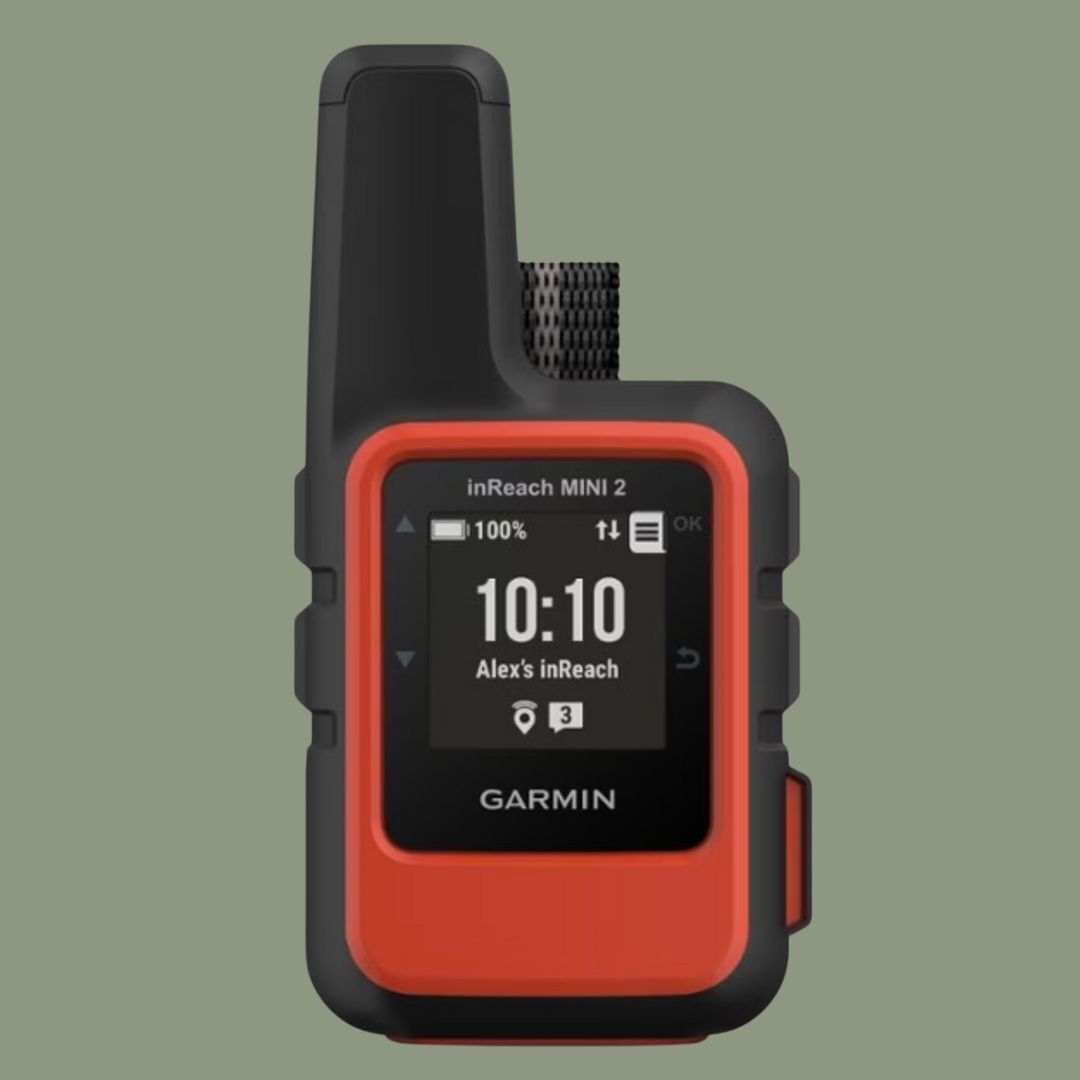
Mykel Hawke is an author, former Army special forces officer, an educator and survival expert possessing an impressive resume of qualifications. According to him, having the ability to to call for help is the number one thing to do in any emergency.
"I recommend a [satellite] phone or a spot device or anything that can reach for help when you have no cell coverage," Hawke said.
"Sat phones," like this highly rated option that we selected, allow users to send SOS notifications to 24-hour search and rescue services globally, as well as share your location with loved ones back home at any time — though an active satellite subscription is required. The Garmin is enabled with an accurate compass and other directional routing features that allow you to track back the direction you came from. Using Bluetooth, users can sync to all existing smart devices to help plan trips and the battery can last up to 14 days per charge.
One important note is that, according to some reviewers who claim to have experience using satellite phones, delays in message response time are to be expected.
Get it from Amazon for $342.20+ (available in two colors).
7. A multi-fuel camping stove

"[Have] a good camp stove and utensils for cooking and eating. The main thing we do [is] cook, boil, eat, drink, prep, clean and repeat so, own good stuff," Hawke explained. He said that he personally uses stoves that are multi-fuel to keep ignition options open.
Based on this guidance, we researched and found this well-known option by MSR, a hybrid portable camping stove that uses a brand-exclusive technology to create the optimal fuel and air mix. This means the stove operates seamlessly with canister fuel, white gas, kerosene and unleaded gasoline. Additionally, the brand claims that the feed system from the liquid canister delivers "better cold weather and low-fuel performance with a more consistent output."
Get it from Amazon for $185+ (available in two styles).
8. An all-purpose emergency first aid kit
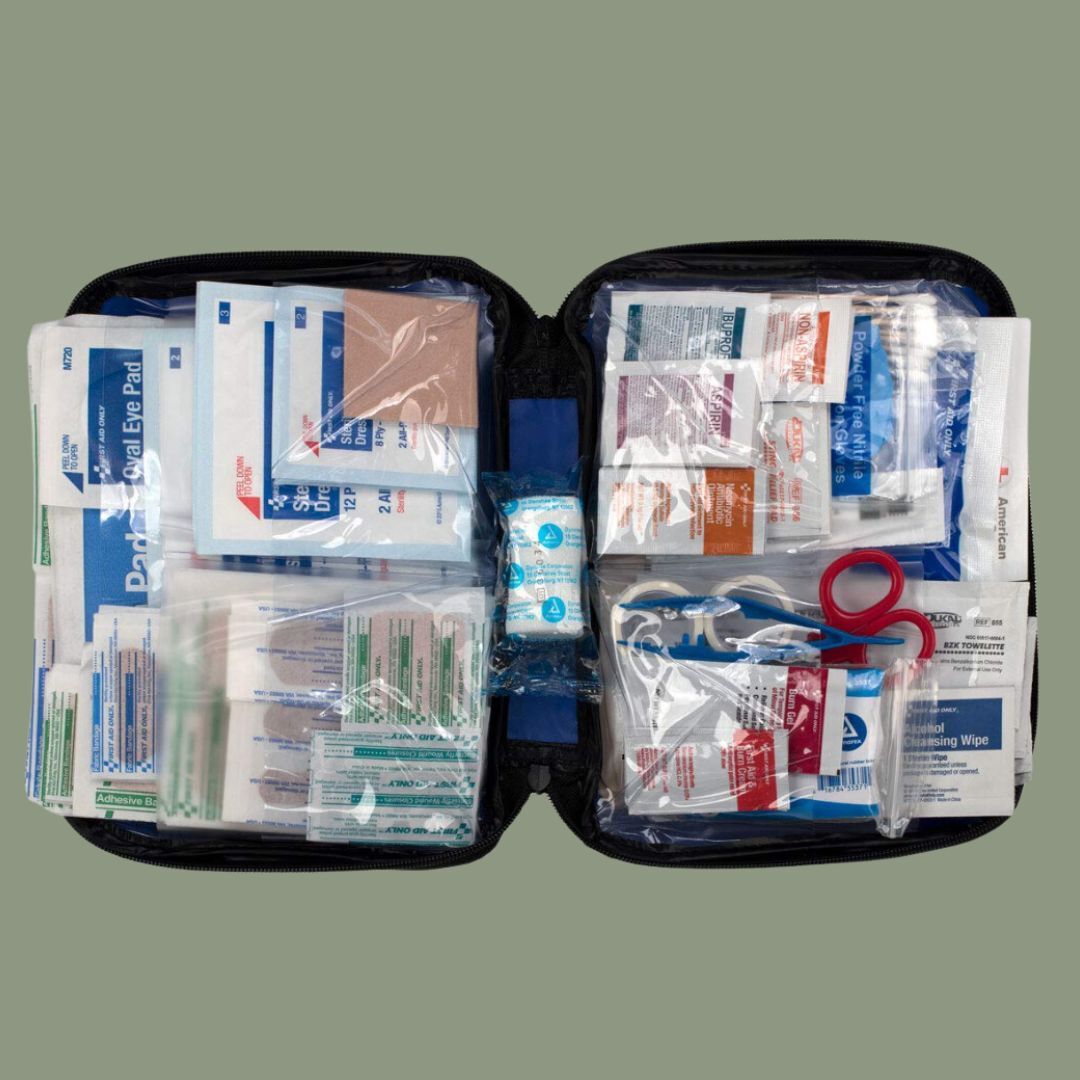
It might go without saying that a first aid kit should always be among your camping essentials but Hawke said that it's surprisingly an item that people often forget. Whatever kit you choose, Hawke said the kit should be one that will tend to both illness and injuries.
We found this popular 299-piece kit that includes everything you need to disinfect wounds, bandage cuts and soothe burns. Clear plastic interior compartments keep everything organized and the soft sided zip case makes storage and transportation a breeze.
Get it from Amazon for $20.58 .
9. An editor-endorsed sleeping pad
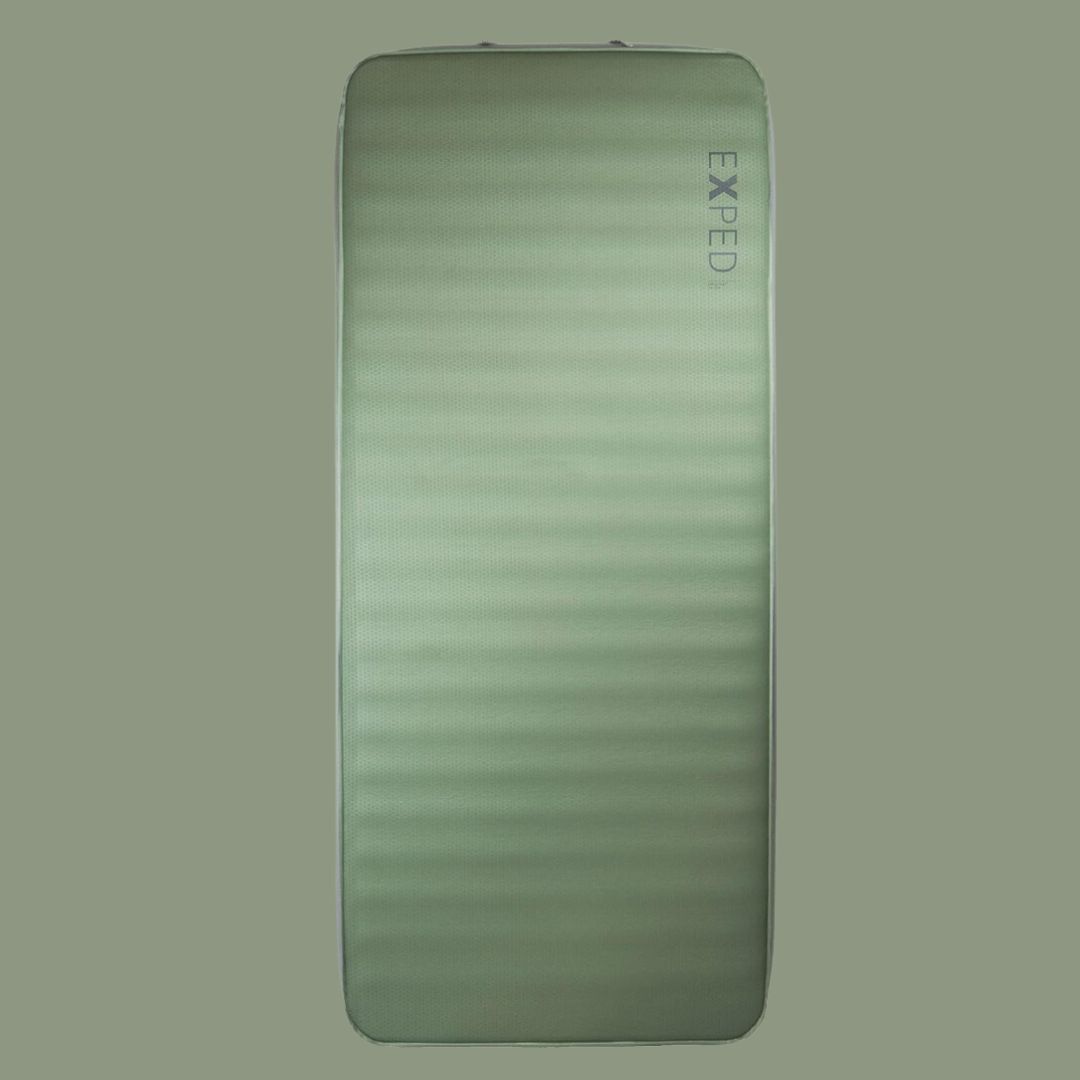
Although a sleeping pad may not seem like a typical safety essential for camping, Hawke said that a good night's sleep is often under-appreciated in the outdoors and extended days of poor sleep can really put a damper on an otherwise fun camping trip.
Hawke didn't suggest a specific sleeping pad or brand, however we are big fans of the Expend MegaMat 10, a self-inflating pad that uses a core of air-channeled foam insulation to keep the pad lightweight, yet extremely comfortable and warm in cold conditions. The MegaMat comes in several sizes and lengths to accommodate different heights and number of sleepers.
Get it from Amazon for $239.95+ (available in four styles).
10. A pair of tactical LED flashlights
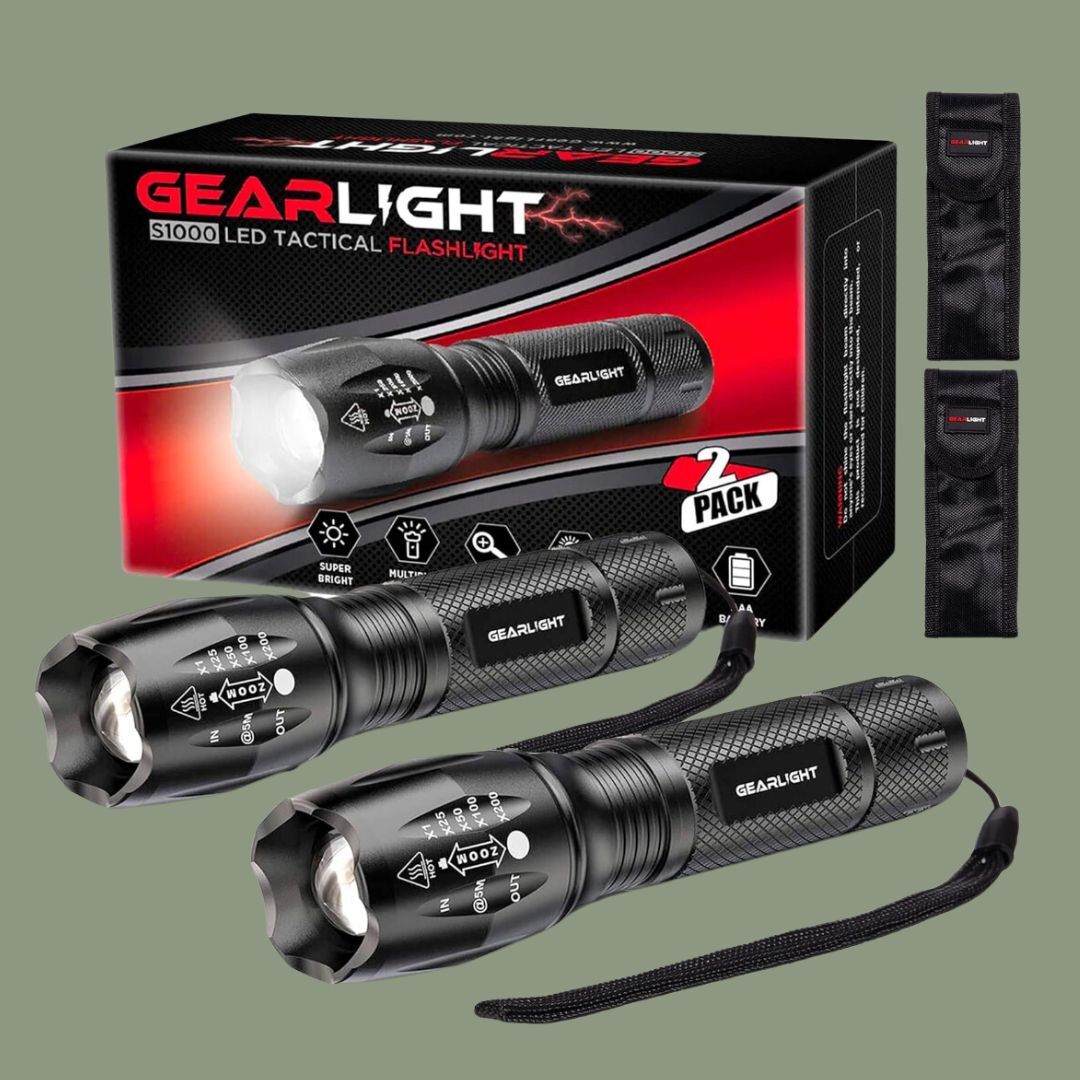
Hawke mentioned flashlights should be among the standard list of tools one would need for camping. We selected these Gear Light tactical flashlights for their compact size, affordable price point and the over 62,000 5-star Amazon ratings. These weather-proof and high-lumens flashlights have five light modes, a zoomable beam and claim to be strong enough to withstand a 10-foot drop.
Get a two-pack from Amazon for $19.99 (also sold individually).
Share This Article
Popular Searches
- Privacy Policy
CRAFTSMAN® Shares Camping Tips to Help Plan for Your Next Adventure
- September 3, 2024
- New to camping? From a cordless mosquito repellent to a power inverter, CRAFTSMAN provides a list of top product recommendations to help you plan for your next outdoor trip
TOWSON, Md. , Sept. 3, 2024 /PRNewswire/ -- According to Kampgrounds of America Inc.'s (KOA) 2024 North American Camping & Outdoor Hospitality Report, over the past decade the number of camping households has increased by 23% (16.5 million additional households). As more Americans embrace the outdoors, Stanley Black & Decker's iconic CRAFTSMAN® brand is sharing tips and top product recommendations for both seasoned campers and first-time adventurers planning their next outdoor vacation.
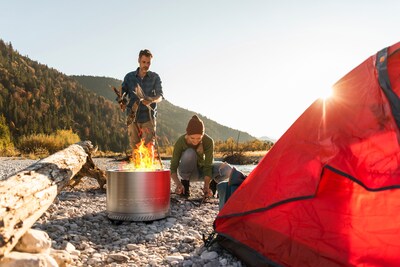
"We know that having safe, reliable gear not only heightens the camping experience, it also builds confidence in the ability to feel comfortable in the outdoors," said Diane Eichler , senior vice president of marketing for KOA.
CRAFTSMAN camping essentials feature a variety of cordless and hand tools, storage solutions, and equipment to power and enhance the campsite experience.
"At CRAFTSMAN, we believe in equipping doers with the tools they need to succeed, whether they're working on a DIY project at home or embarking on an outdoor adventure," said Frank Malzone , CRAFTSMAN outdoor category manager. "Our tools and tips are designed to help you make the most of your time outside and ensure you're well-prepared for the great outdoors."
CRAFTSMAN CAMPING TIPS AND RECOMMENDATIONS
Tip #1: Plan Ahead – Before you step out the door, spend time researching your destination, check the weather forecast and pack campsite necessities such as flashlights, maps and other provisions that will be helpful while you are away.
CRAFTSMAN Picks:
- V20* Cordless 700-Lumen LED Rechargeable Power Tool Flashlight ( CMCL050B ): Illuminate your surroundings with this versatile light that delivers 350/700 LED lumen for maximum output, ideal for both camping and home use.
- V20* Cordless 2500-Lumen LED Rechargeable Power Tool Flashlight ( CMCL060B ): For even more brightness, this spotlight provides excellent lighting performance with four high-power LEDs, producing a maximum of 2,500 lumens and beam distance of up to 1,600 feet.
Tip #2: Camp with Confidence – Safety should always be a priority during any camping trip. For starters, have an emergency plan in place and inform someone of your whereabouts to ensure you're prepared for unexpected situations. Before hitting the road, pack a well-stocked first-aid kit and, more importantly, have the right tools handy for setting up your campsite and communicating to your friends and family as needed.
- Push and Flip Folding Pocket Knife ( CMHT10354 ): A versatile tool for any camper, this knife features a stainless steel blade that protects against rust and corrosion, making it ideal for outdoor adventures and everyday tasks around the home.
- 28-oz. Dead Blow Hammer ( CMHT54166 ): Strike in tent stakes with ease using a dead blow hammer, ensuring your tent is securely set up.
- V20* USB Power Source ( CMCB002B ): Ensure your safety by keeping communication devices charged using a USB power source.
- V20* Power Inverter ( CMCB1150B ) : Stay prepared for emergencies with a 150W power inverter. Charge a wide variety of devices with Type-C, Type-A and AC connections.
Tip # 3: Keep Yourself Organized - From toiletries to s'mores supplies, keeping your gear organized and protected with portable and durable storage is crucial. This level of preparedness not only helps with maintaining a tidy campsite, but it also ensures that you can quickly find what you need when you need it without losing time searching high and low.
- 30, 40 or 50-Gallon Latching Totes ( CMXXPBP ): Available in various sizes, these totes are large enough for most storage needs and compact enough for easy carrying, perfect for both camping trips and home organization.
- VERSASTACK™ 30 Gallon Chest ( CMST17870 ): Stackable, portable and customizable, this chest is designed to ensure gear stays safe and dry.
Tip #4: Make Your Experience a Fun One – Having the right gear is the easiest way to make your camping trip more enjoyable and comfortable. Whether it's keeping the bugs at bay or enjoying a cozy campfire, these tools can help you elevate your outdoor experience so you can focus on having a great time.
- Smokeless Wood Burning Fire Pit ( CMXBHBB17004 ): Gather around the campfire and enjoy the warmth without all the smoke. This advanced high-efficiency burn design creates more heat while producing 70% less smoke compared to a traditional wood-burning fire pit.
- V20 Mosquito Repellent (Bare Tool) ( CMCE560B-2 ): Keep the bugs at bay with this device that creates a 20-Ft zone of protection against mosquitoes, ideal for the campsite, backyard, poolside, patio, deck, or other outdoor spaces.
All products are available in stores and online where CRAFTSMAN products are sold. To learn more about CRAFTSMAN camping essentials, visit www.craftsman.com and begin planning your next camp out by visiting https://koa.com/ .
* Maximum initial battery voltage (measured without a workload) is 20 volts. Nominal voltage is 18.
About CRAFTSMAN® CRAFTSMAN® is an American icon that homeowners and auto enthusiasts have trusted since 1927 – and today's CRAFTSMAN® continues that legacy. With a focus on reliable, high-performance tools, storage and equipment, CRAFTSMAN® has revived its long-established pride in superior quality. Now it's easier than ever to get the tools trusted for generations at more places than ever. For more information visit www.CRAFTSMAN®.com or follow CRAFTSMAN® on Facebook , Instagram and TikTok .
About Stanley Black & Decker Founded in 1843 and headquartered in the USA , Stanley Black & Decker (NYSE: SWK) is a worldwide leader in Tools and Outdoor, operating manufacturing facilities globally. The Company's approximately 50,000 diverse and high-performing employees produce innovative end-user inspired power tools, hand tools, storage, digital jobsite solutions, outdoor and lifestyle products, and engineered fasteners to support the world's builders, tradespeople and DIYers. The Company's world class portfolio of trusted brands includes DEWALT®, CRAFTSMAN®, STANLEY®, BLACK+DECKER®, and Cub Cadet®. To learn more visit: www.stanleyblackanddecker.com or follow Stanley Black & Decker on Facebook , Instagram , LinkedIn and X .
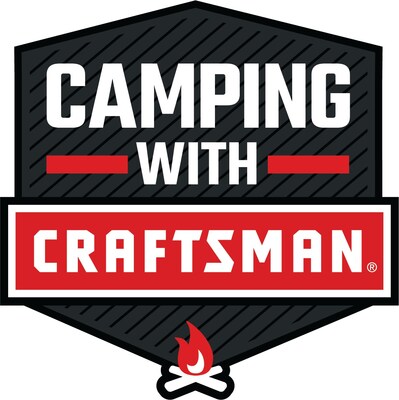
SOURCE CRAFTSMAN

IMAGES
VIDEO
COMMENTS
Tools for Camping. It is always a good idea to pack plenty of outdoor tools, even if you are not sure you will need them. You can use many items for several applications, including emergencies. Make sure you have: A wood axe and handsaw for firewood. A multi-tool pocket knife. Duct tape. Paracord. Bungee cords.
Camping permits or reservations. Flashlight or headlamp. Map and compass. Local information (emergency numbers, local rules/regulations) Swiss army knife or multi-tool. Duct tape. Bear-proof containers or bear bags (area dependent) Animal deterrent sprays (area dependent) Snake bite kits (area dependent)
Pack a flashlight with extra batteries on your next camping trip to avoid any unexpected trips, falls, and tumbles. Also Pack: Lanterns Head lamp 7. First Aid Kit It goes without saying that a well-stocked first aid kit is essential to tent camping, or any camping trip at all. There are prepackaged first aid kits at outlets like REI that ...
Sleeping Bag: A sleeping bag is the most essential piece of camping equipment—without the right one, you'll be in for a cold and uncomfortable night. Many sleeping bags are "mummy style ...
Surprisingly, it doesn't take that much - you can build a fully functioning camp kitchen with just a few items. Food and water. Camping Stove & Gas. Camping chairs. Camping table. Pots & pans (a campfire cooking kit or camping mess kit) Utensils (for both cooking and eating) Plates & bowls. Cups.
A camping checklist makes for a smooth camping trip. Planning a multi-day camping excursion can seem tough, but having a comprehensive camping checklist can make your preparation easy as pie. To learn more about camping gear and how to pack smart, check out our posts on Camping Gear. Download the printable camping checklist PDF here.
Camping Essentials. The basics, the must-haves for camping trips and staycations. A Tent - available in a variety of sizes, a good rule of thumb is to aim for a tent that sleeps 1 or 2 people more than you need, for space for all your camping essentials! Tent Pegs - will keep your tent firmly rooted in the ground, making your tent more durable, strong, and able to withstand beach and coast winds.
This is your ultimate list of camping essentials to use as a guide when packing for your trip. Use this camping checklist as a guide to build on when you camp. ... First Aid Kit; Any regular medication; Anti-bacterial hand wash and sanitizer; View all of our health and safety help and advice. Personal - toiletries, towels etc.
When camping, make sure you take all the essentials with you. A basic camping essentials list can serve as a guide and you can add or remove items depending on your individual needs. Bonus: Download a Free Printable PDF version of this guide. The PDF version contains all the checklists found here.
Download our Free Camping Packing List Here. Different Types of Camping. It's important to consider what type of camping option is best for you. Here are a few popular types of camping: Backcountry camping: This involves carrying the bare minimum to save weight, hiking deep into the wilderness, and setting up camp far away from other people ...
Must-Haves. Moisture-wicking tops for Men and Women. Quick-drying pants and/or shorts for Men and Women. Moisture-wicking underwear for Men and Women. Fleece, rain jacket or down jacket for Men and Women. Hiking boots. I recommend the Salomon range. Socks (synthetic or wool) for Men and Women. to wear around camp.
📋 Click To View Our Camping Trip Packing List >> 📋. Camping Trip Packing Tips and Advice. ... The ideal camping gear will be durable enough to withstand most expected weather conditions and last multiple years of use. It will also be compact and lightweight since you might have to hike with your equipment. However, the specifics for what ...
Camping Trip Packing Checklist . ... He used his first-hand experience with outdoor adventure in compiling this list of essential camping gear. Hot Take: Winter Is the Best Time to Camp — but ...
More than 80 million Americans go camping each year, making it one of the most popular ways people in the United States choose to spend time outdoors. Camping can be a lot of fun—you're often surrounded by nature and people you love, plus you get a break from day-to-day life. Camping takes you out of your "normal" and puts you in a new place, where you can explore, relax, exercise, and ...
Minimalist camping is a great way to practice wilderness survival. Here's a short list of the limited items to take on your next camping trip. 22 Creative Ways On How To Make Money With Land. The best 22 ways I know of on how to make money with land. Pick and choose the ones that will work best for you property and situation.
3. Sleeping Bags. Don't forget to put a sleeping bag on your camping gear list! If you think you'll get cold in the evenings or your sleeping bag doesn't have a low enough temperature rating for chilly nights, you could bring a blanket (we love the Rumpl puffy blankets).. There's a little bit of science to finding the perfect sleeping bag.A 0-degree bag is ideal for winter trips, while ...
Whether it's your first time car camping or you've been at it for years, it never hurts to have a good checklist. To help you get out of the house with all of the essentials in tow, we've outlined everything you need including campsite and sleeping gear, camp kitchen essentials, outdoor clothing and footwear, health and hygiene products ...
Camping trips require a lot of gear and forethought when planning. Use this complete checklist to make sure you've got everything for your next night under the stars. ... When gathering all your gear for a camping trip, it's helpful to categorize the things you need by how you'll be spending your time. That goes for both time of day (e.g ...
If you choose something inflatable to sleep on, bring a foot pump, and a repair kit deserves a space on every planner's list of camping essentials, before you need it! Tent, poles and guy lines. Groundsheet or tarp. Flysheet. Windbreak. Tent pegs (plus spare pegs) Mallet. Sleeping bags and bedding. Pillow.
K KNODEL Sturdy Car Trunk Organizer with Premium Insulation Cooler Bag, Heavy Duty Collapsible for Car, SUV, Truck, or Van (3 Compartments, Black) PREMIUM CAR TRUNK ORGANIZER WITH COOLER BAG - The…. SUPERIOR DURABILITY AND WATERPROOF - The K KNODEL…. SMART DESIGN - Our product features sturdy walls,…. $35.99.
Furthermore, this being bear country, you'll need to take special precautions to ensure a smooth and safe trip. Assuming you're visiting in a warmer month, this Yellowstone packing list covers all the essentials. The following list is divided into three main sections: General Items, Camping Gear and Hiking Gear. While many of the links ...
Backpacking to Havasupai is a breathtaking adventure, but being well-prepared is essential. Whether you're a seasoned backpacker or a first-timer, having the right gear will ensure a safe and comfortable trip to the stunning turquoise waterfalls and canyons. Here's a detailed packing list to help you get ready for your Havasupai adventure.
Hawke mentioned flashlights should be among the standard list of tools one would need for camping. We selected these Gear Light tactical flashlights for their compact size, affordable price point ...
From a cordless mosquito repellent to a power inverter, CRAFTSMAN provides a list of top product recommendations to help you plan for your next outdoor trip TOWSON, Md. , Sept. 3, 2024 /PRNewswire/ -- According to Kampgrounds of America Inc.'s (KOA) 2024 North American Camping & Outdoor Hospitality Report, over the past decade the number of ...